September 27, 2020
Martha O'Kennon
Happy Equinox!
Chaim was walking around Albion on the 21st and got this view of the western Sun going down. In town, Michigan Avenue is as close to East-West as you can get.

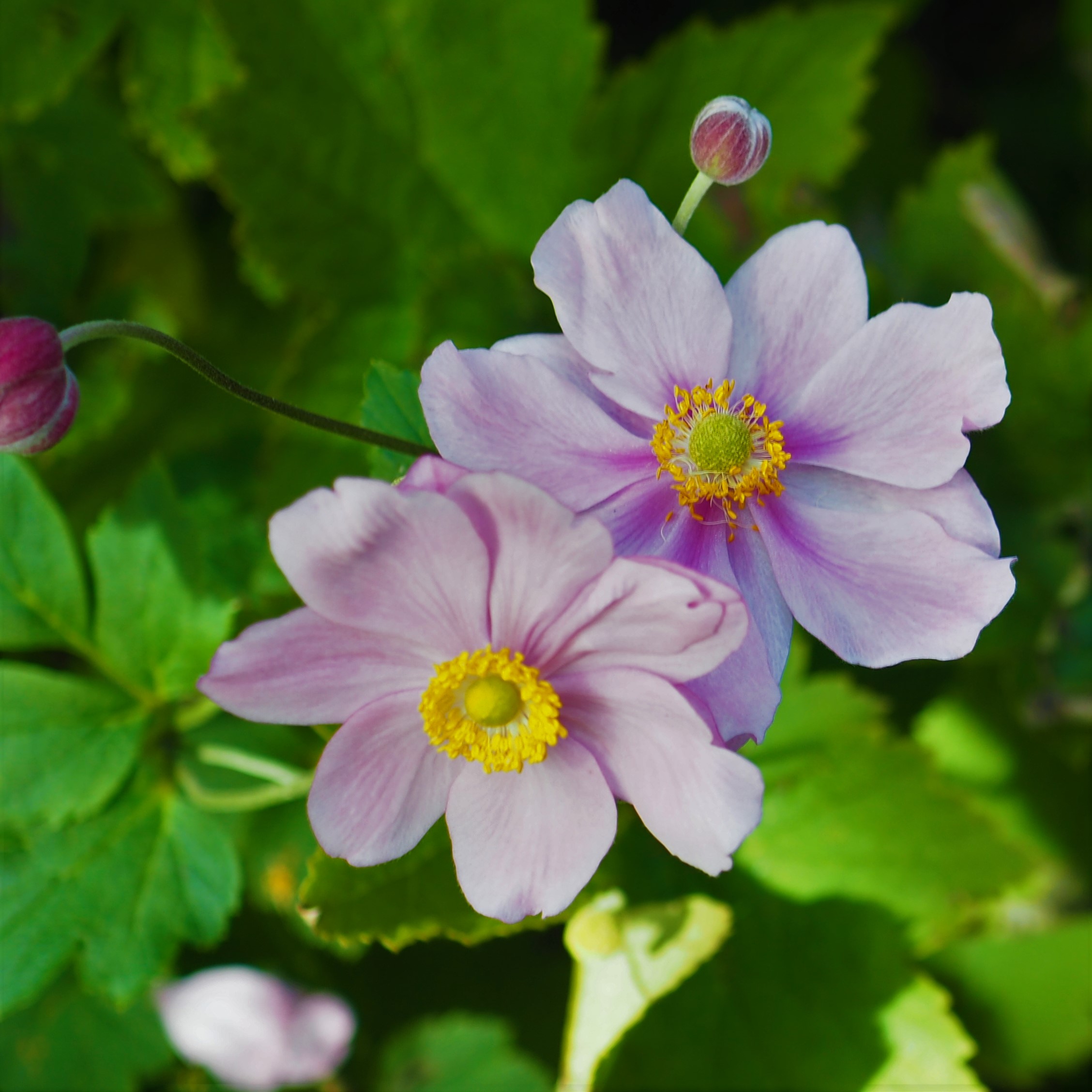
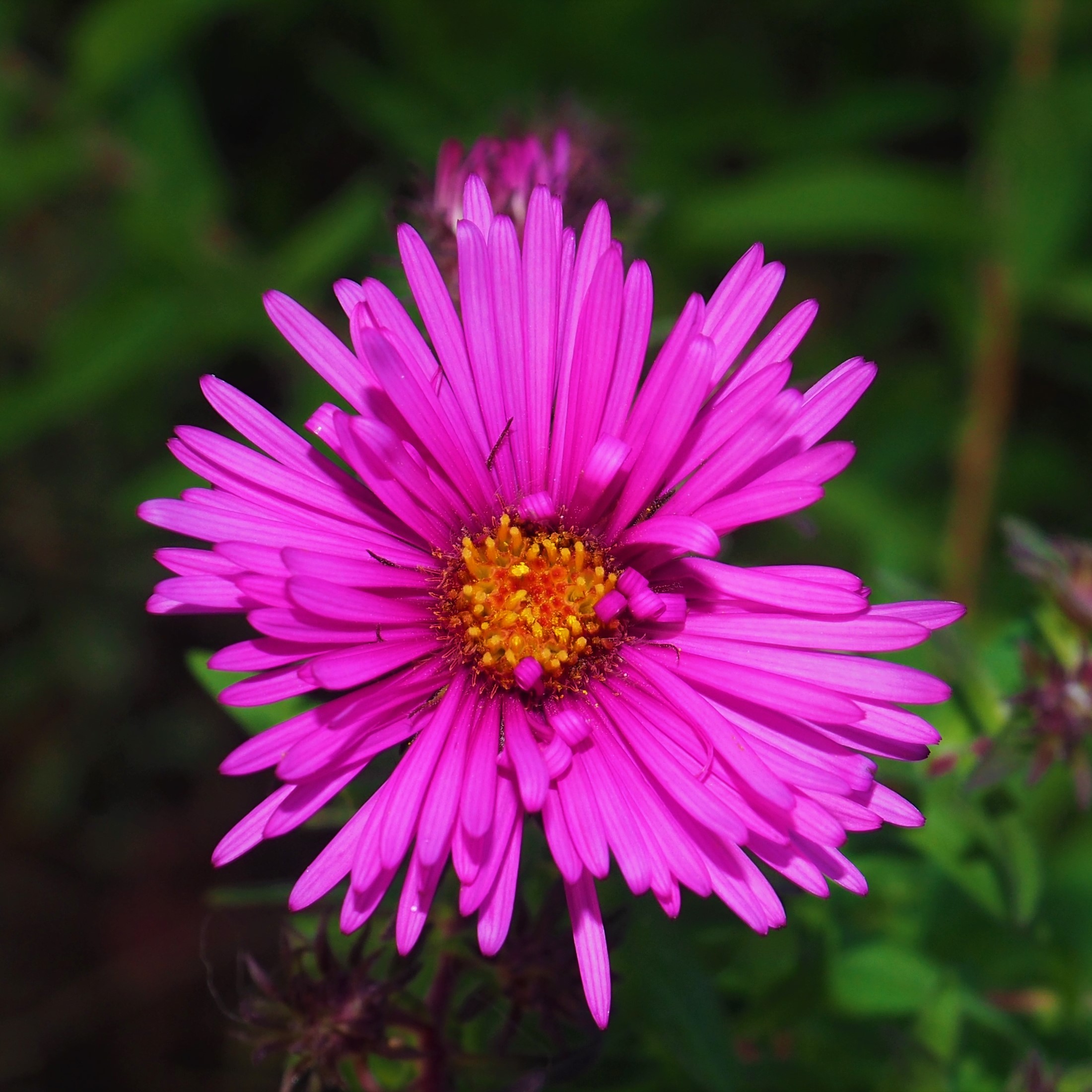
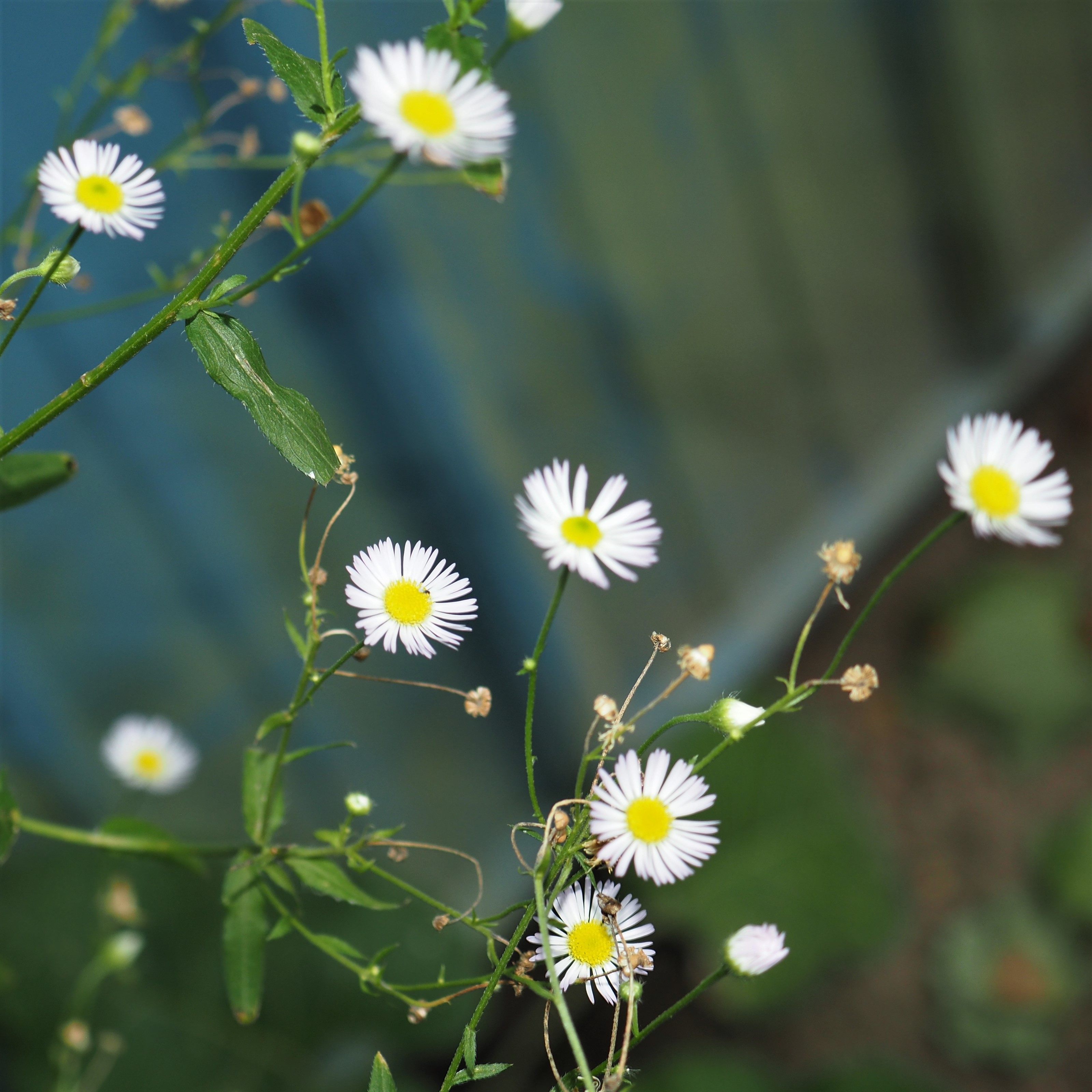
It's the end of September, can you believe? The Japanese Anemones have been getting more and more beautiful. The Asters' colors have gotten more and more audacious! And the Fleabane, with its tiny delicate flowers, is reblooming.
Remember that there is information in the name of the file for each image. You can see it by mousing over the image - look at the lower left of the screen. Or you can click on the image to get to the (usually) larger image. Then the info is displayed in the address line above. Sometimes the second click will actually display a different view of the original image.
The Ants had another great show week. This first one is the Smaller Carpenter Ant. Then comes a Small Honey Ant. And last, the Eastern Black Carpenter Ant. These are some of my more common visitors.
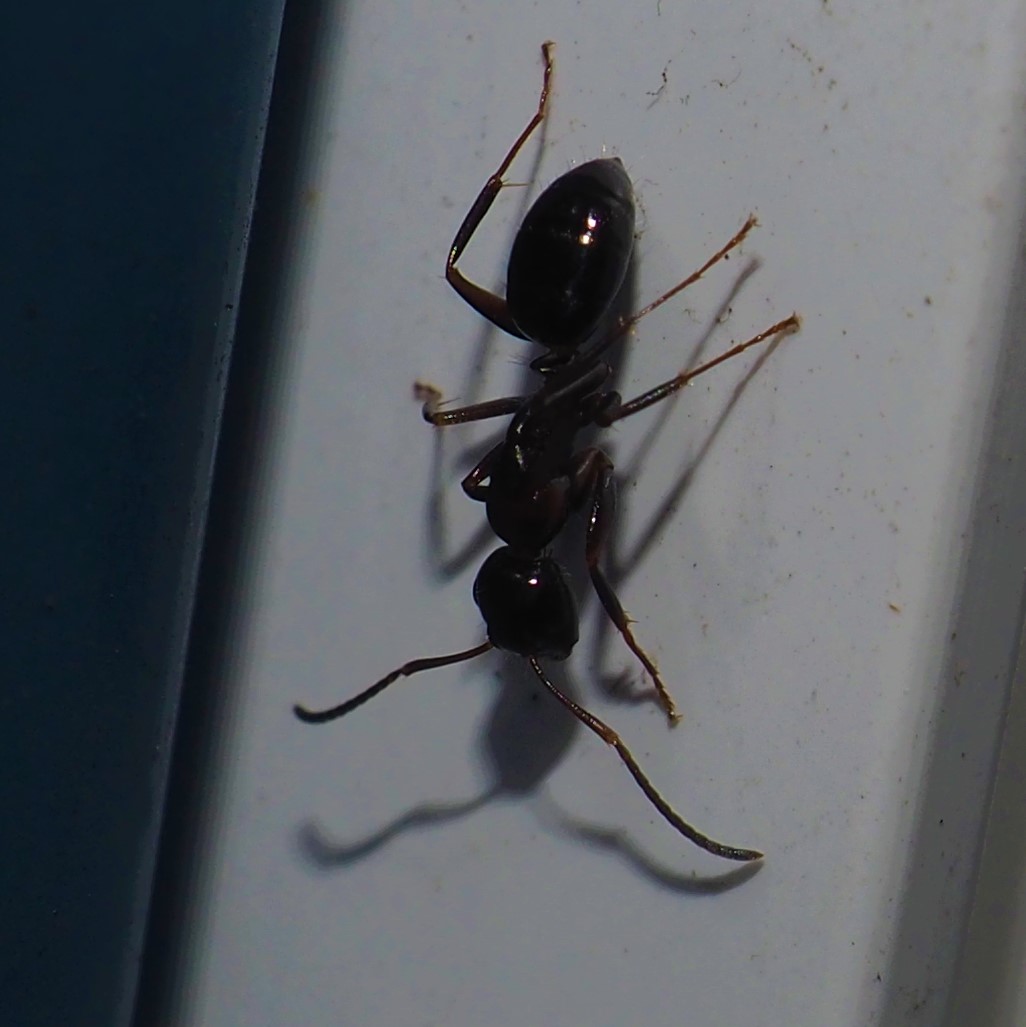
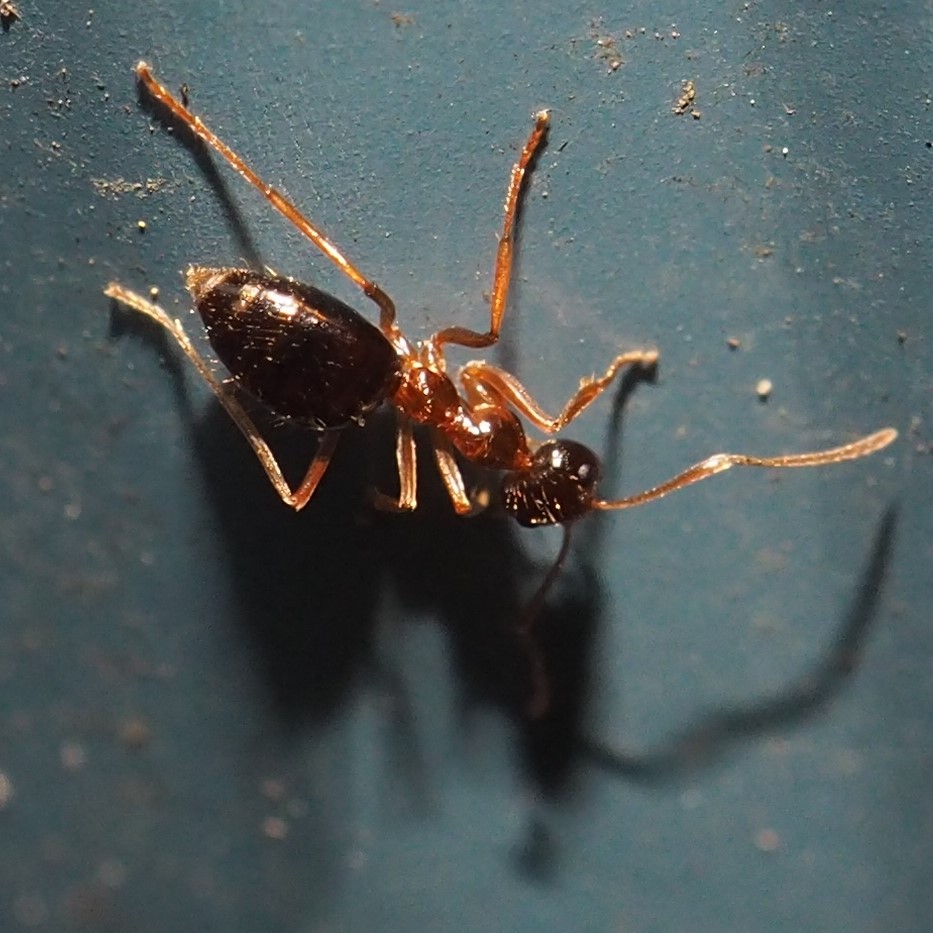
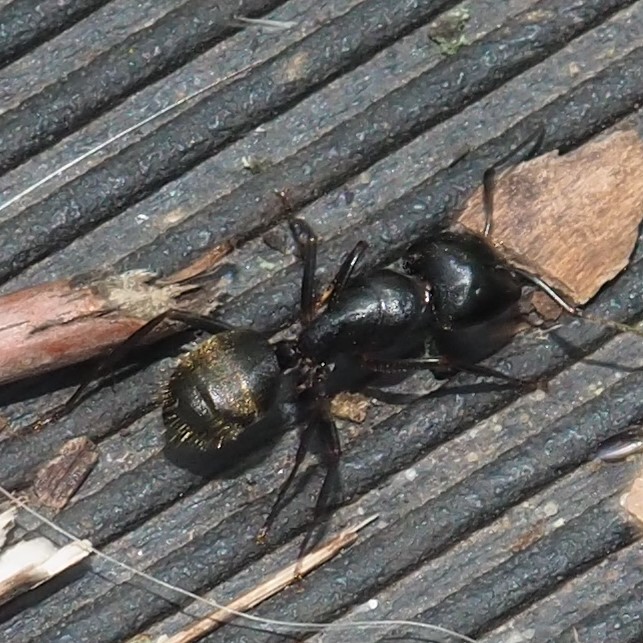
This first winged Queen is from genus Myrmica. And so is the second Ant. Note how both have their gaster (last big segment) tucked under. Third is labeled Fusca-group Field Ant. I think that means it might be close to Formica fusca. Last belongs to subgenus Lasius, a very large group of Citronella Ants.
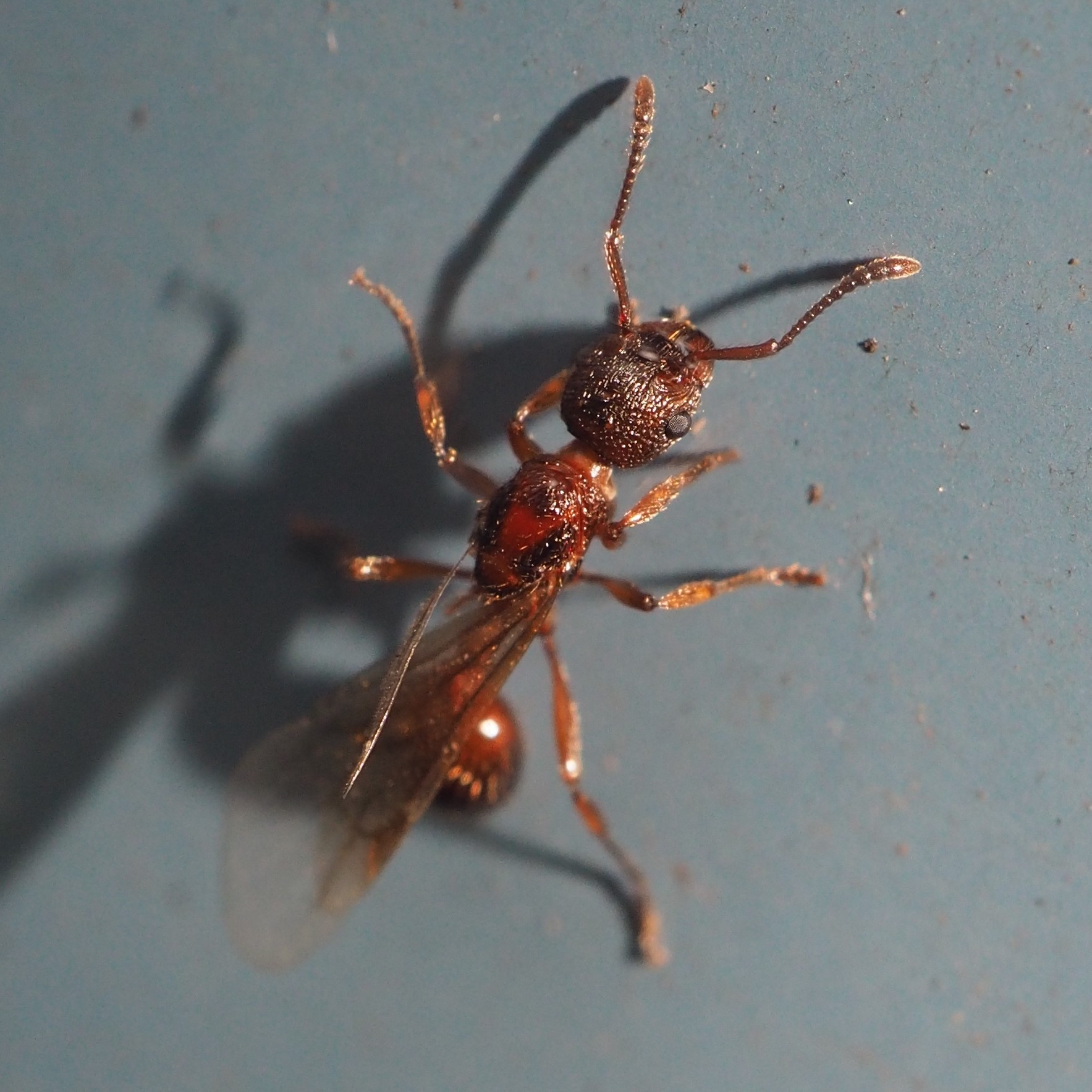
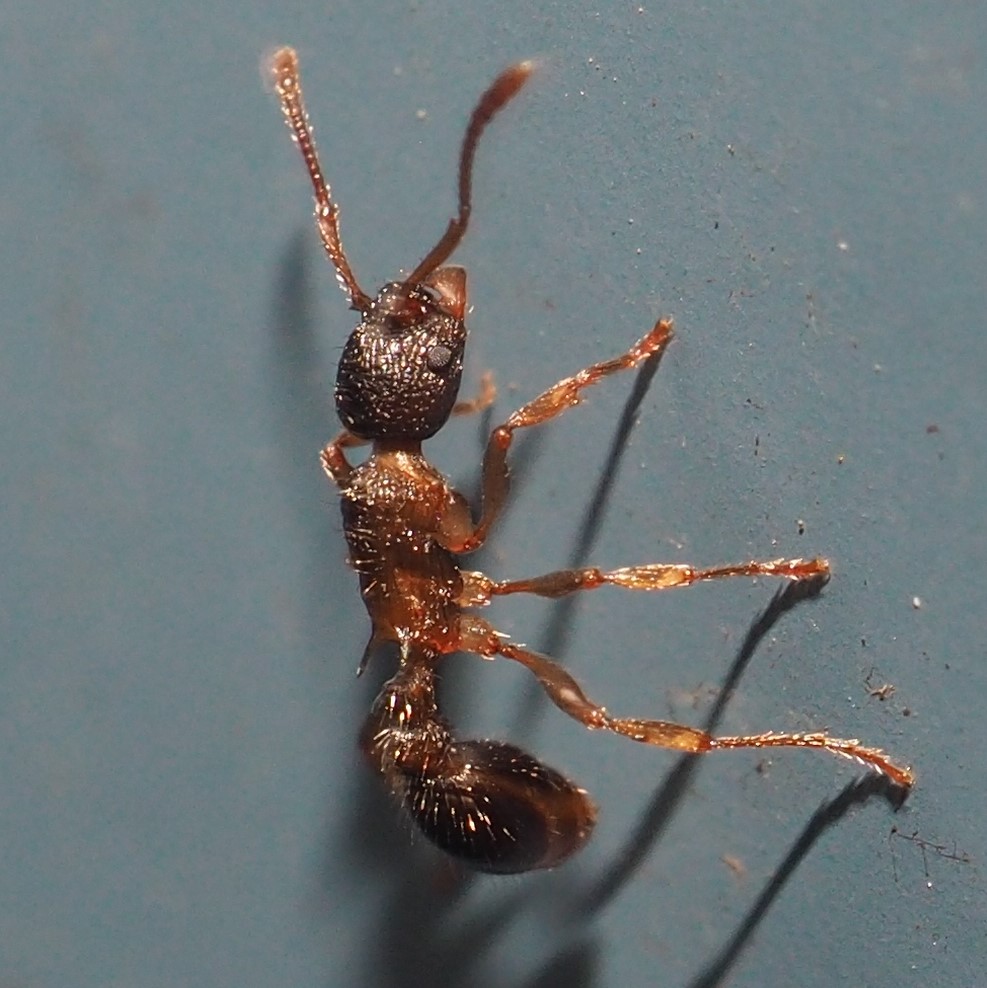
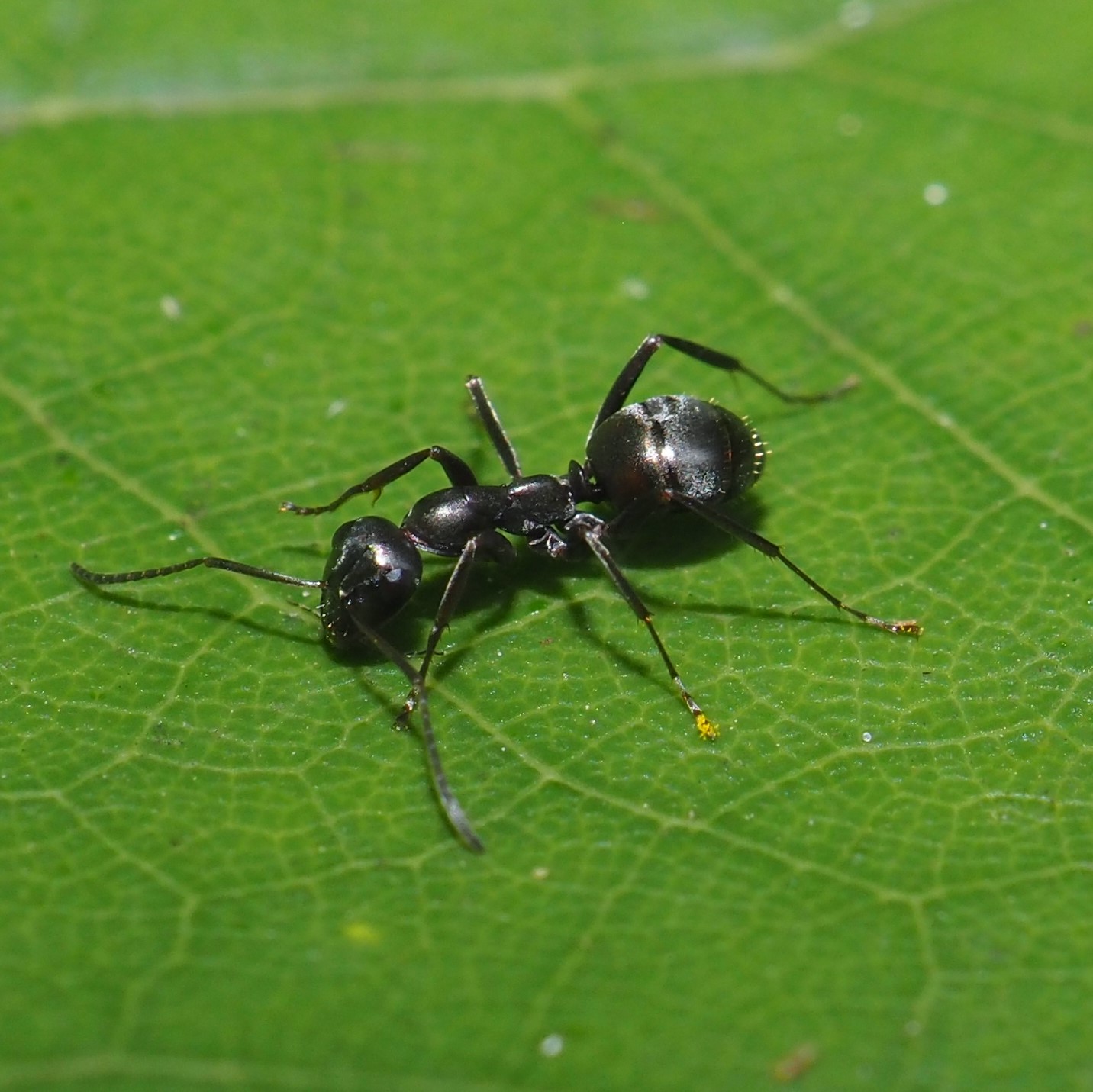
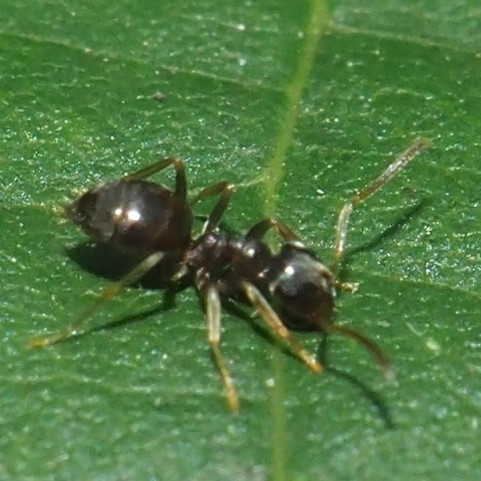
I do believe that this is an Aphid nymph. I didn't have any other Aphids in my database but when I went out at about noon there was this one (picture 2), which I SUPPOSE is an Aphid. So we can segue into the Barklice. Echmepteryx hageni was one of the most common, adult or nymph. The adult in picture 3 is a lateral view, which is the first one I have ever seen. Picture 4 shows a nymph. They are ubiquitous this week and can run like a tiny horse.
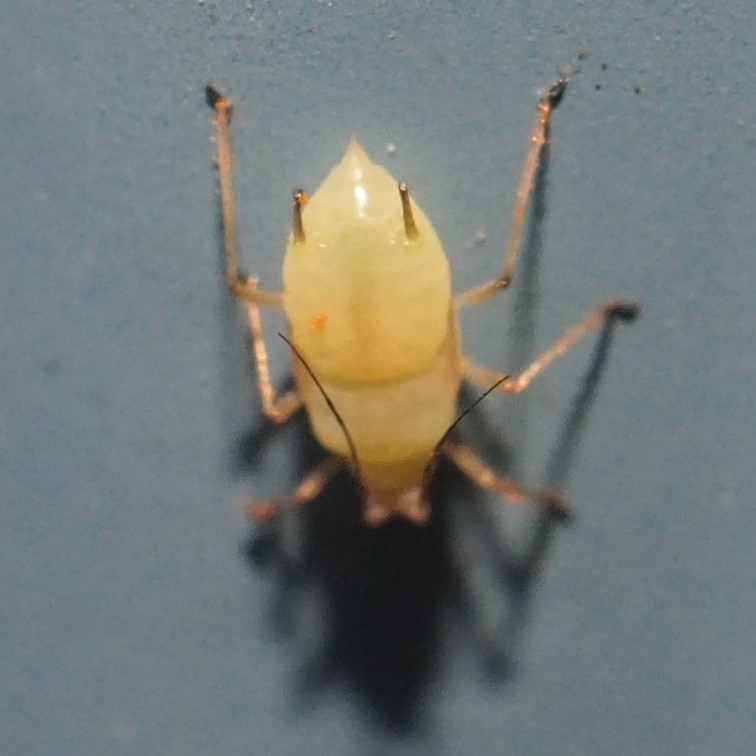
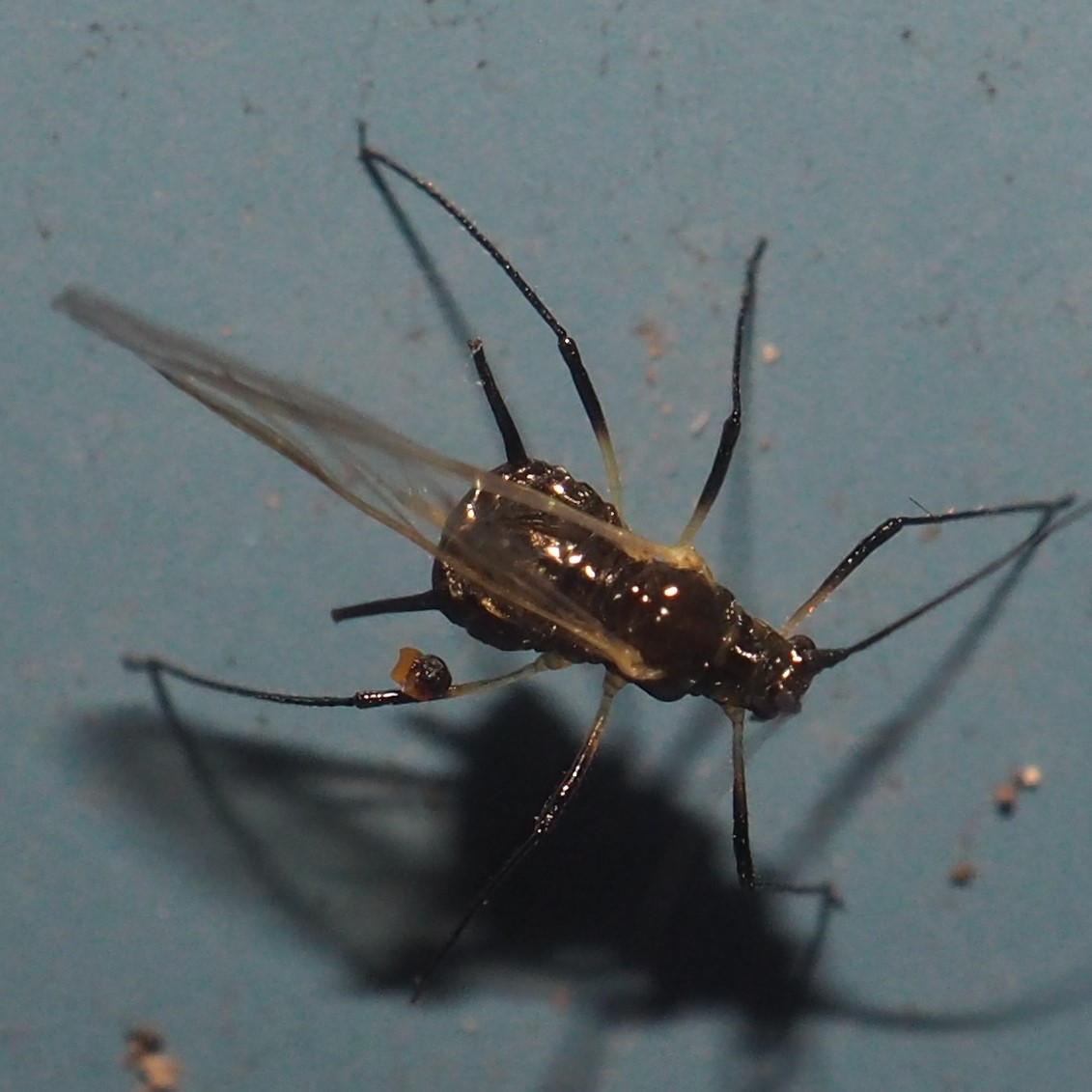
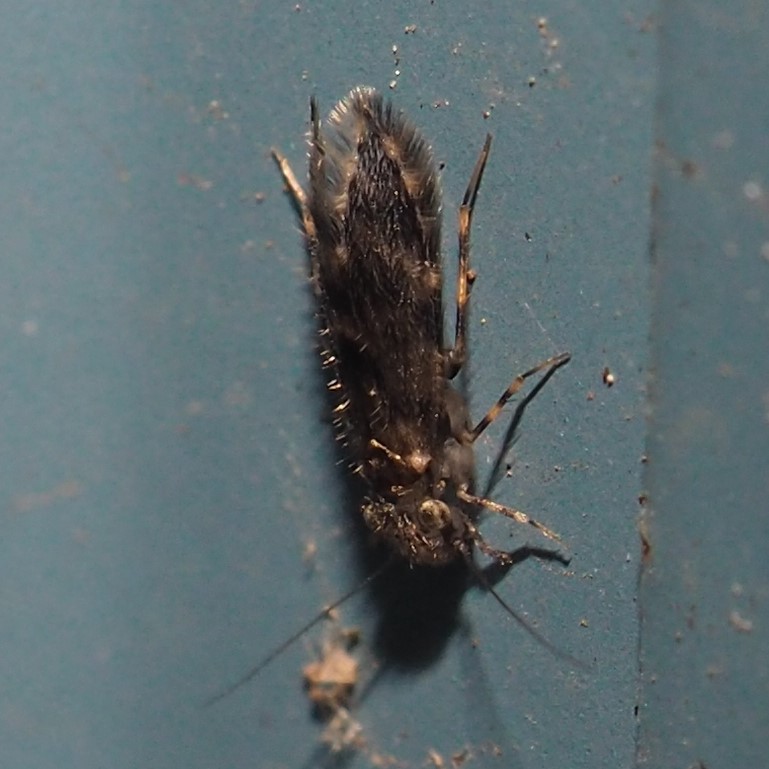
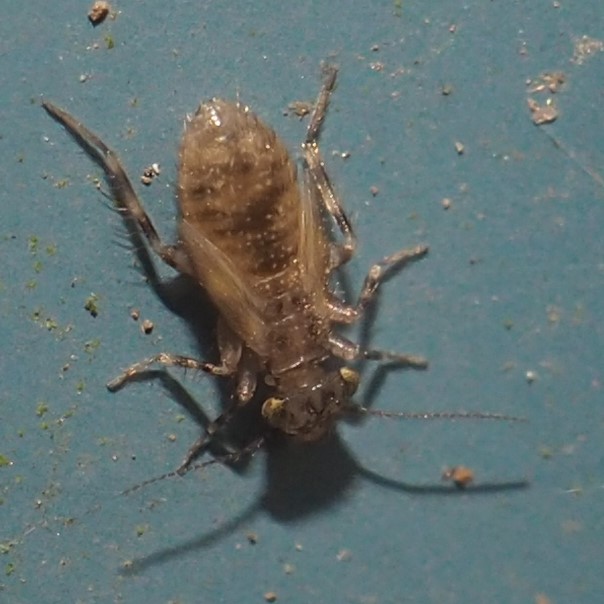
Last week we reported that a few of the Ectopsocus meridionalis nymphs had metamorphosed into adults. Up till now, the action on these Barklice was almost restrictd to panels 7, 8 and 10 on the North Wall. But yesterday, September 25, there were outstations on panels 3-10. Those creatures really moved fast. In fact, there were clutches of eggs in all those panels. Picture 1 here shows the eggs on panel 8 that until now had been guarded by that single adult. Now they are unattended. Pictures 2 - 4 show eggs and mothers on low-numbered panels. Picture 4 actually shows eggs being laid by one on panel 7. The continuing saga of the Ectopsocus clan is still in
this little web diary .
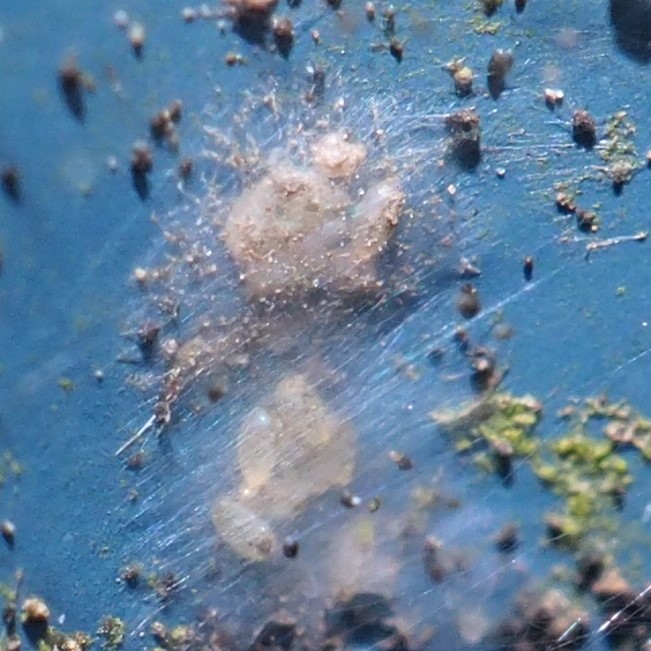
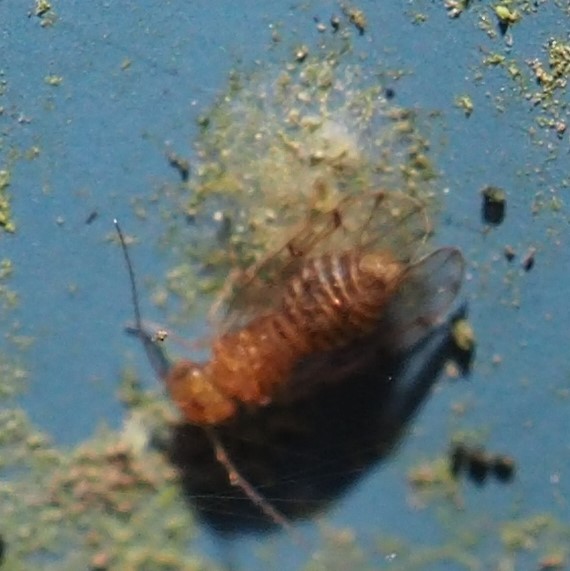
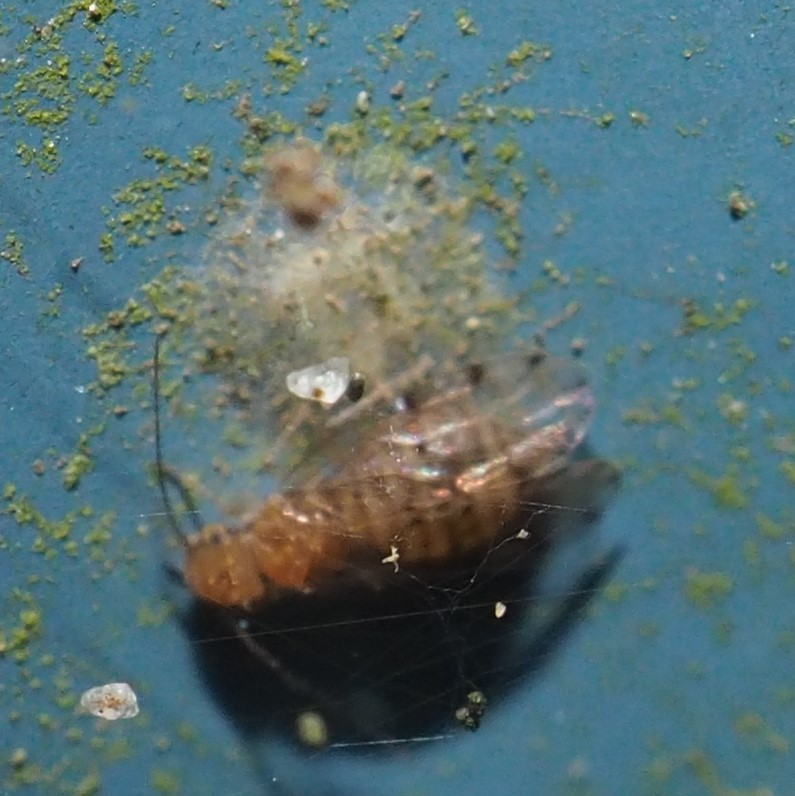
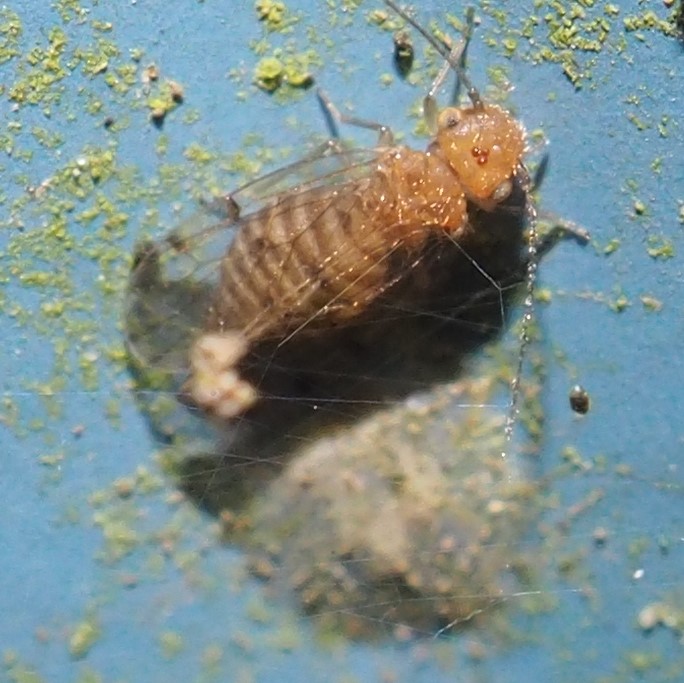
A Graphopsocus cruciatus adult and two nymphs are shown in picture 1. Next is an egg cluster on the East Wall panel 6. Last is another nymph.
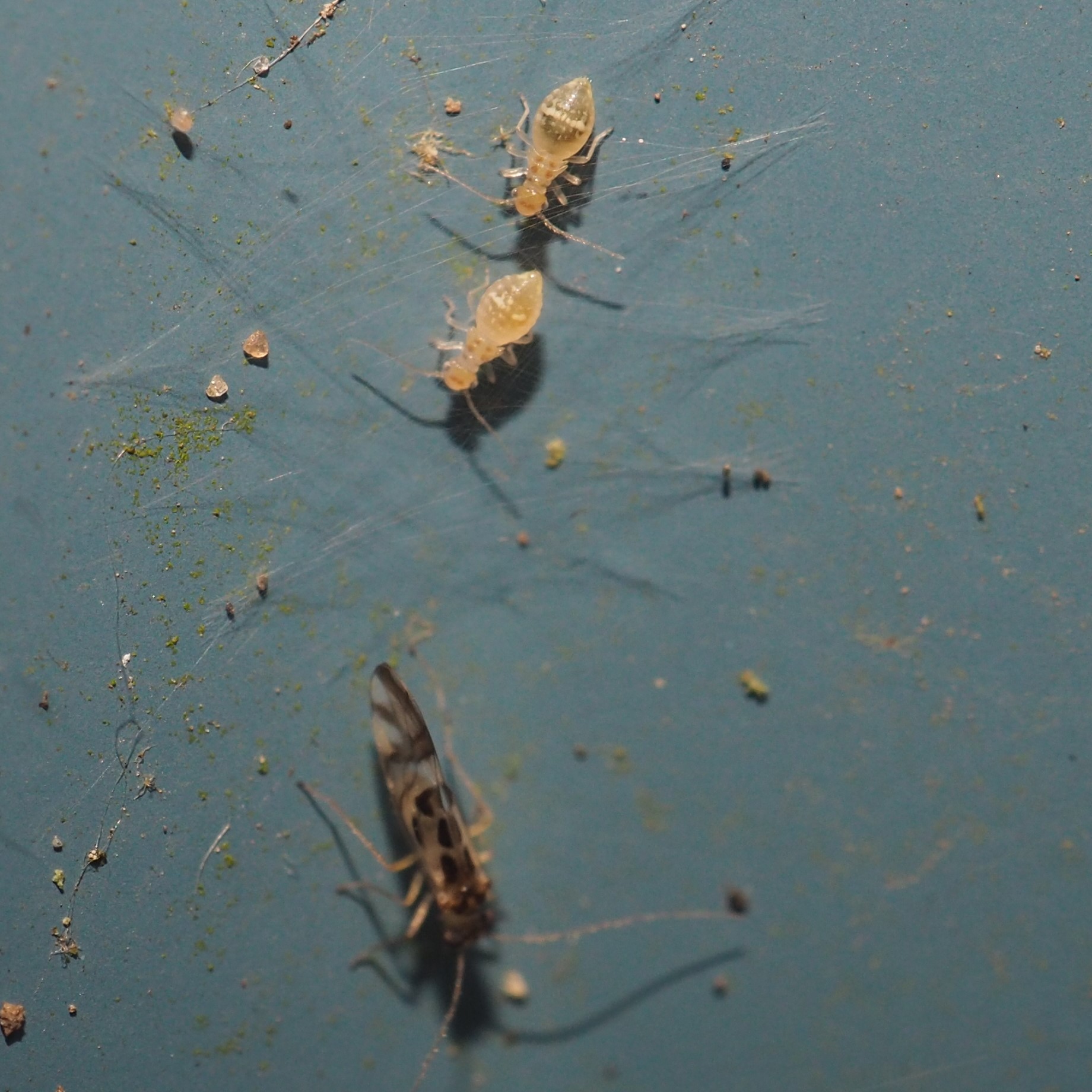
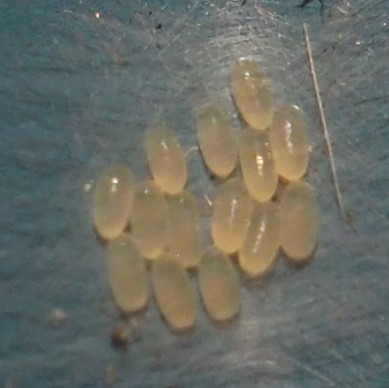

Here's Metylophorus novaescotiae (this one was found on the East Wall, but there are a few more on panel 9); Valenzuela flavidus (found on South Wall); probably Trichadenotecnum alexanderae; and a new mystery Barklouse.
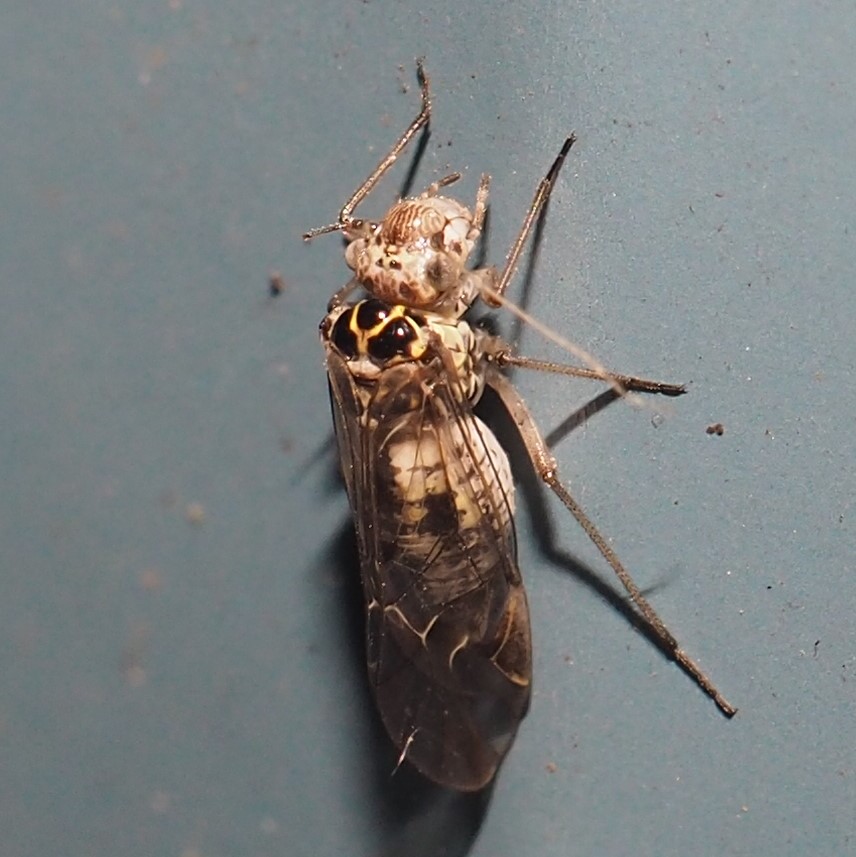
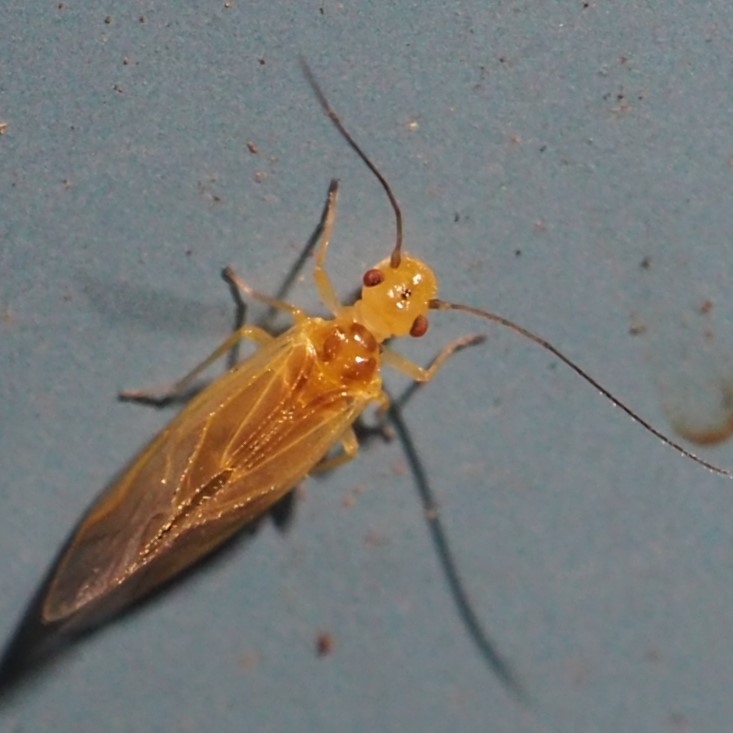
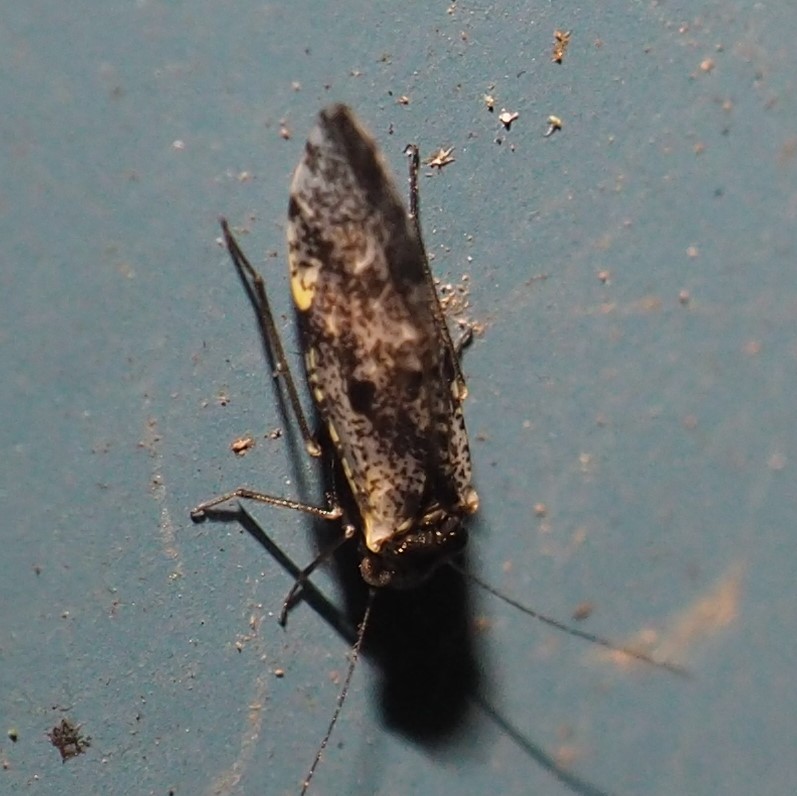
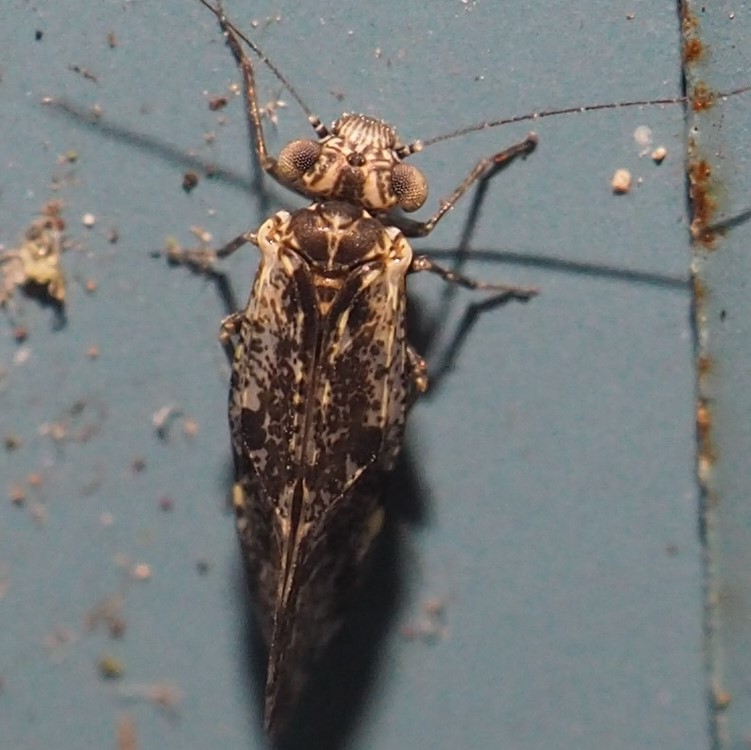
Polypsocus corruptus was another ubiquitous creature this week. Here's one that has just emerged from its nymphal skin. Third is thrown in so you will believe there were more than one individual.
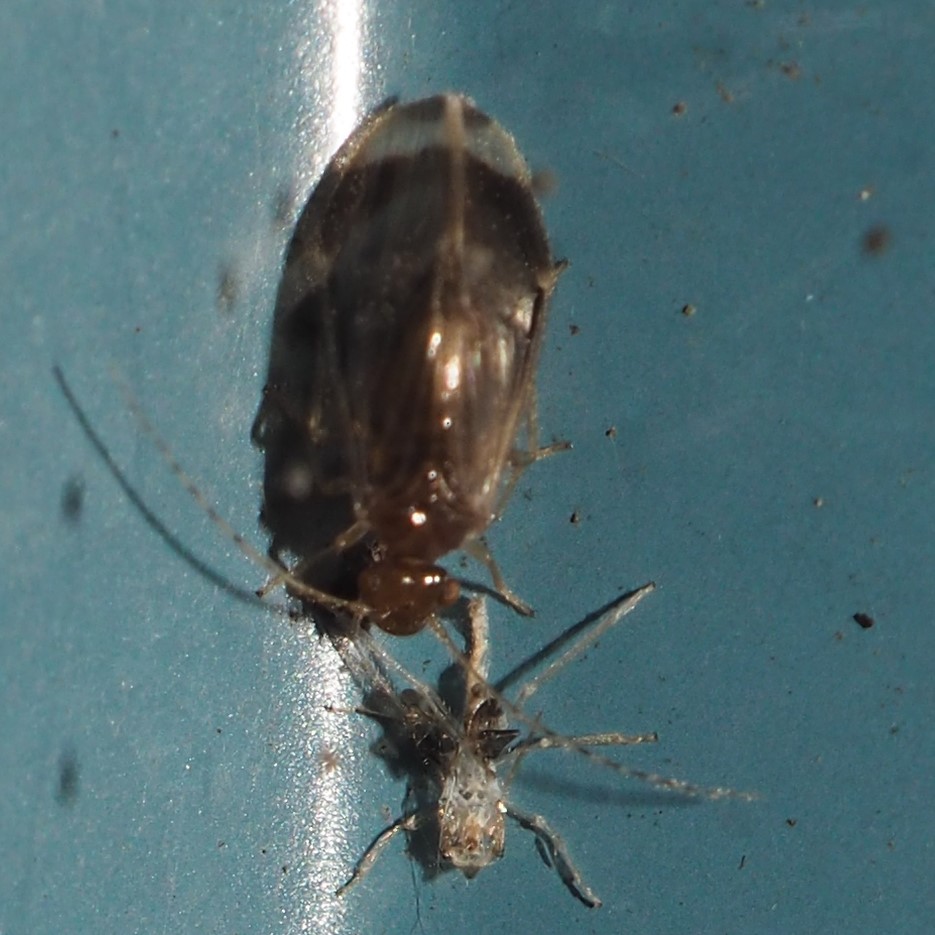
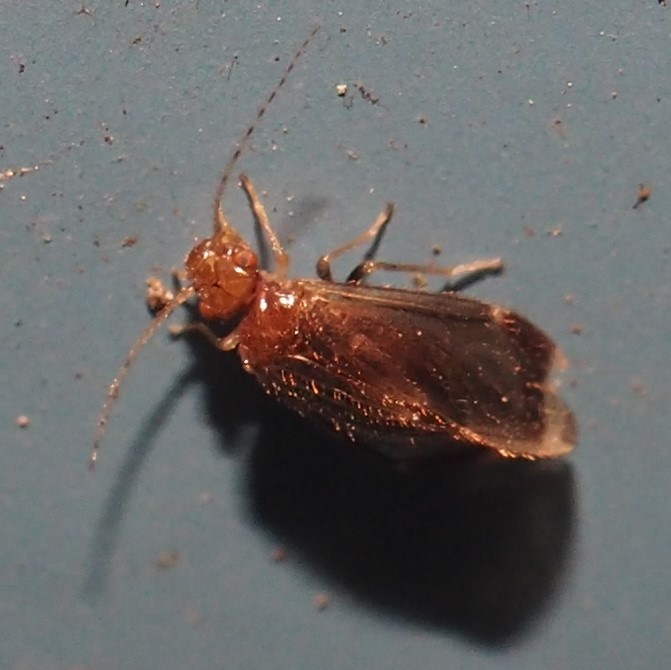
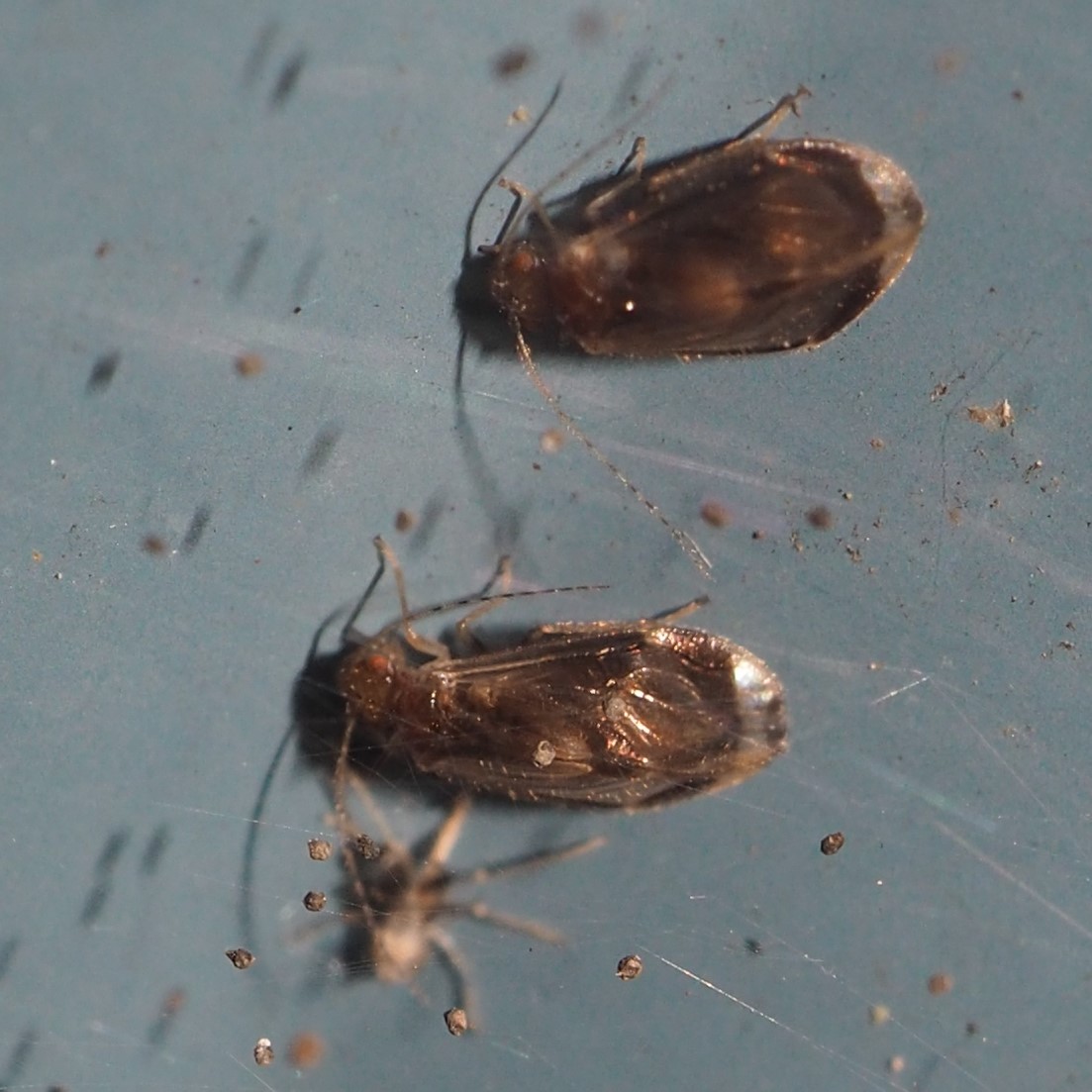
On the 22nd I noticed a new cluster of eggs (they looked so different and as if they had had some coating applied to them) in between panels 8 and 9. The next morning at 10:41 (picture 2) they had begun to hatch out.
Third is from 6:02 pm. Picture 4 shows the nymphs at 10:20 am the next day. They spread out so that I stopped being able to see them soon after. I had a suspicion that these newbies were actually turning into G. cruciatus. We'll see, I hope!
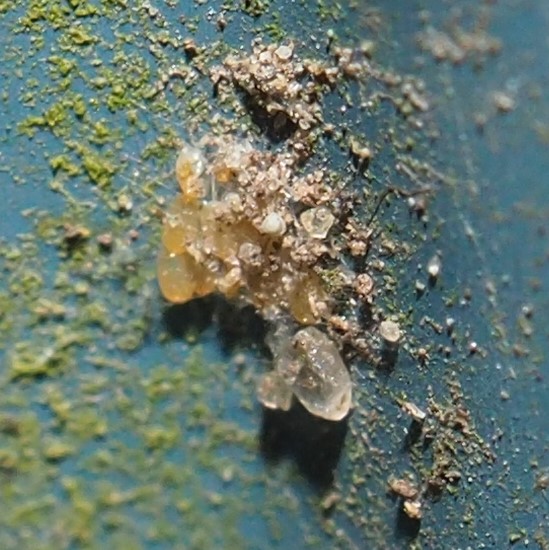
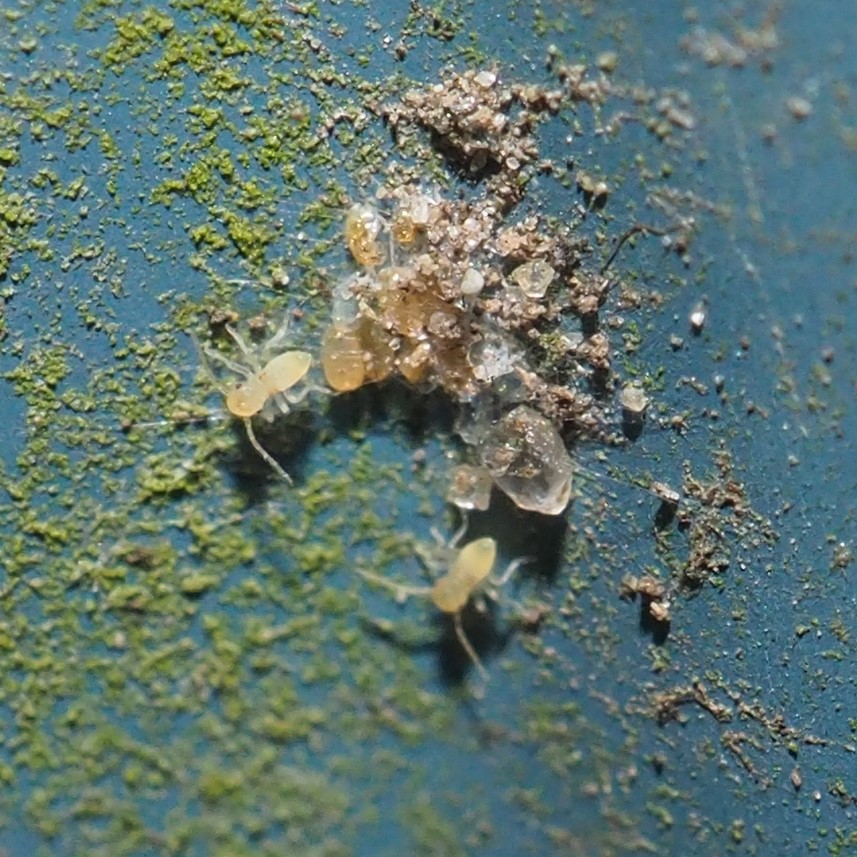
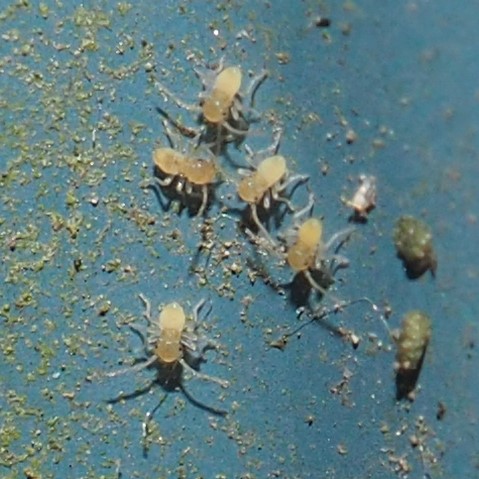
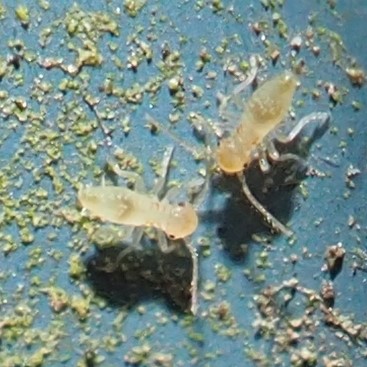
If there are Asters and Goldenrod, expect to see Bees! First here is a mystery Bee, but picture 2 shows one that I believe from the placement of pollen on its legs is in Genus Andrena, and probably is A. nebecula. Third is a Honey Bee in a Pink Aster.
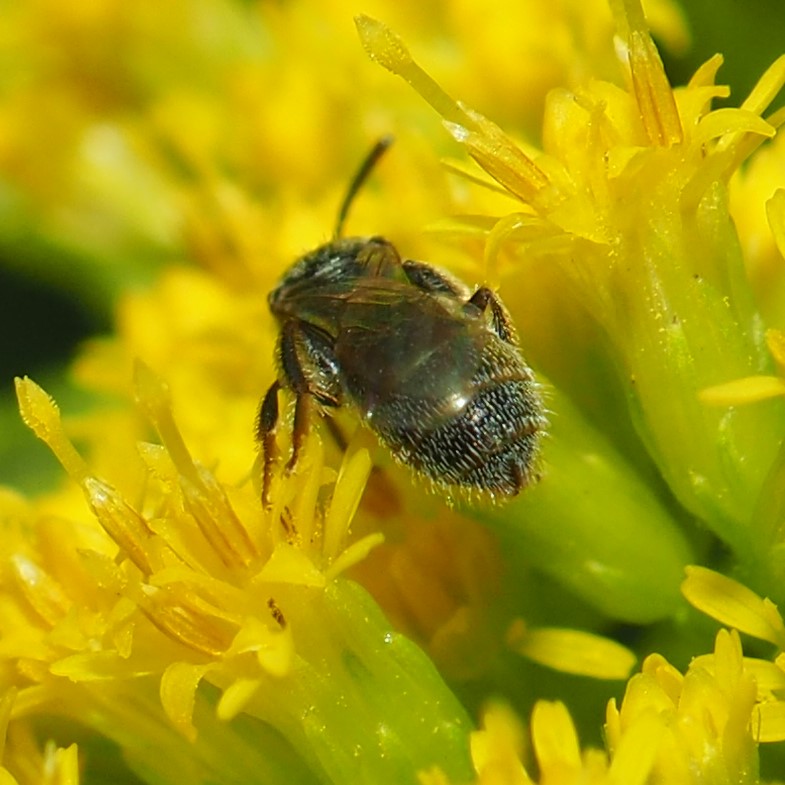
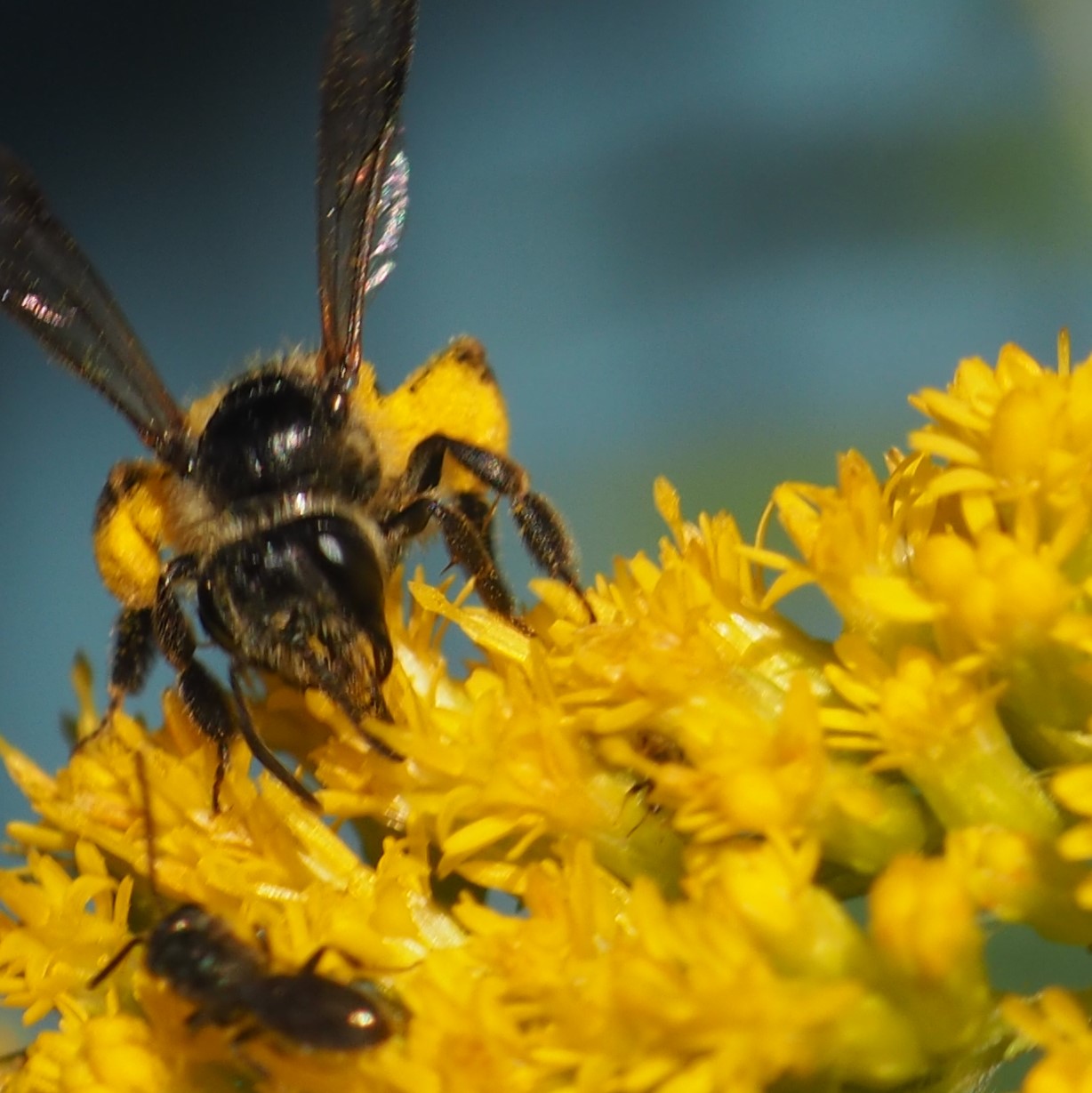
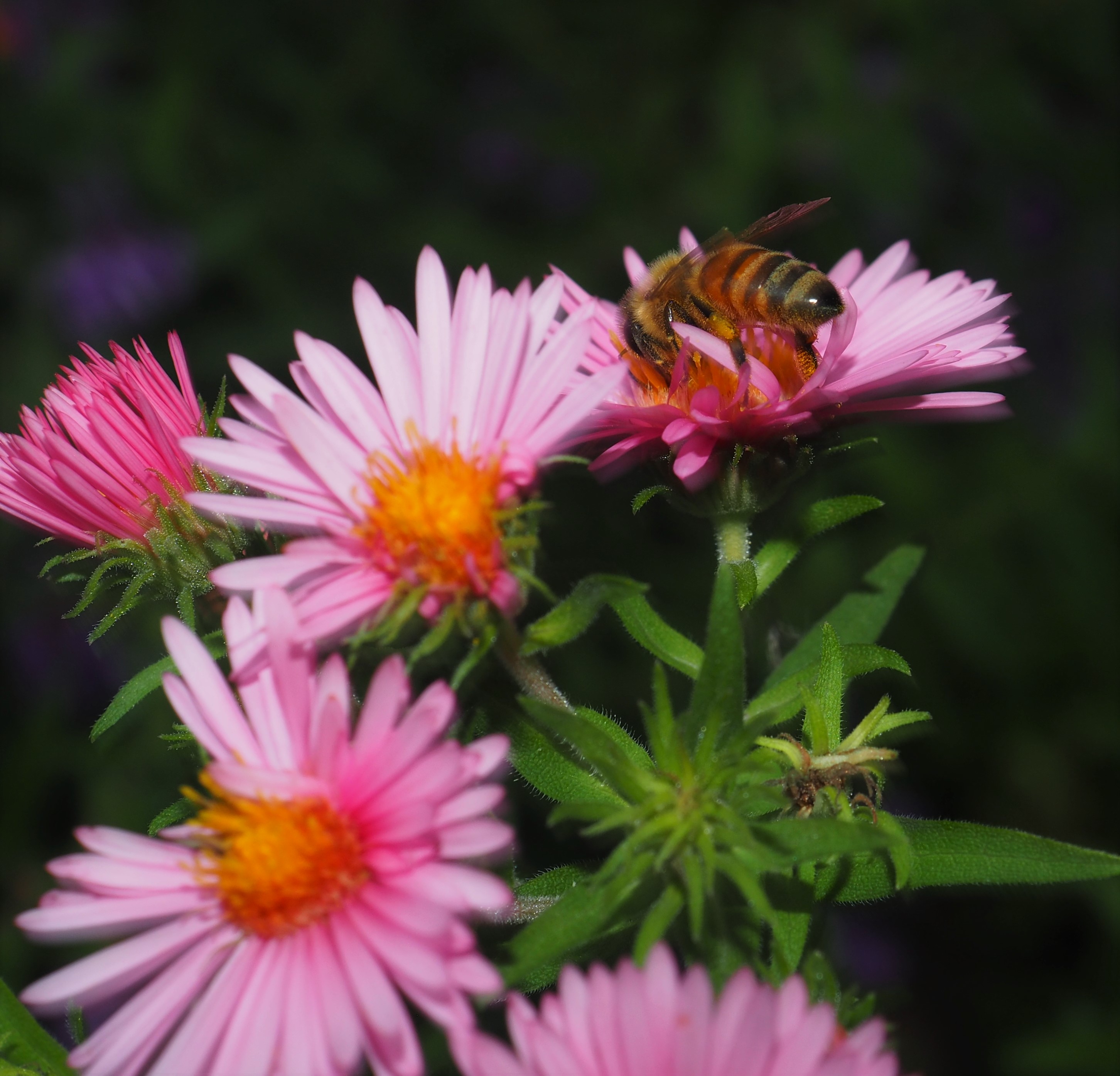
First is a little mystery Bee but the spider doesn't care which it is. Green is the order of the week, as wit this Pure Green Sweat Bee in the pink Aster. Third is one of the green bees with stripes on the abdomen in one of the sexes.
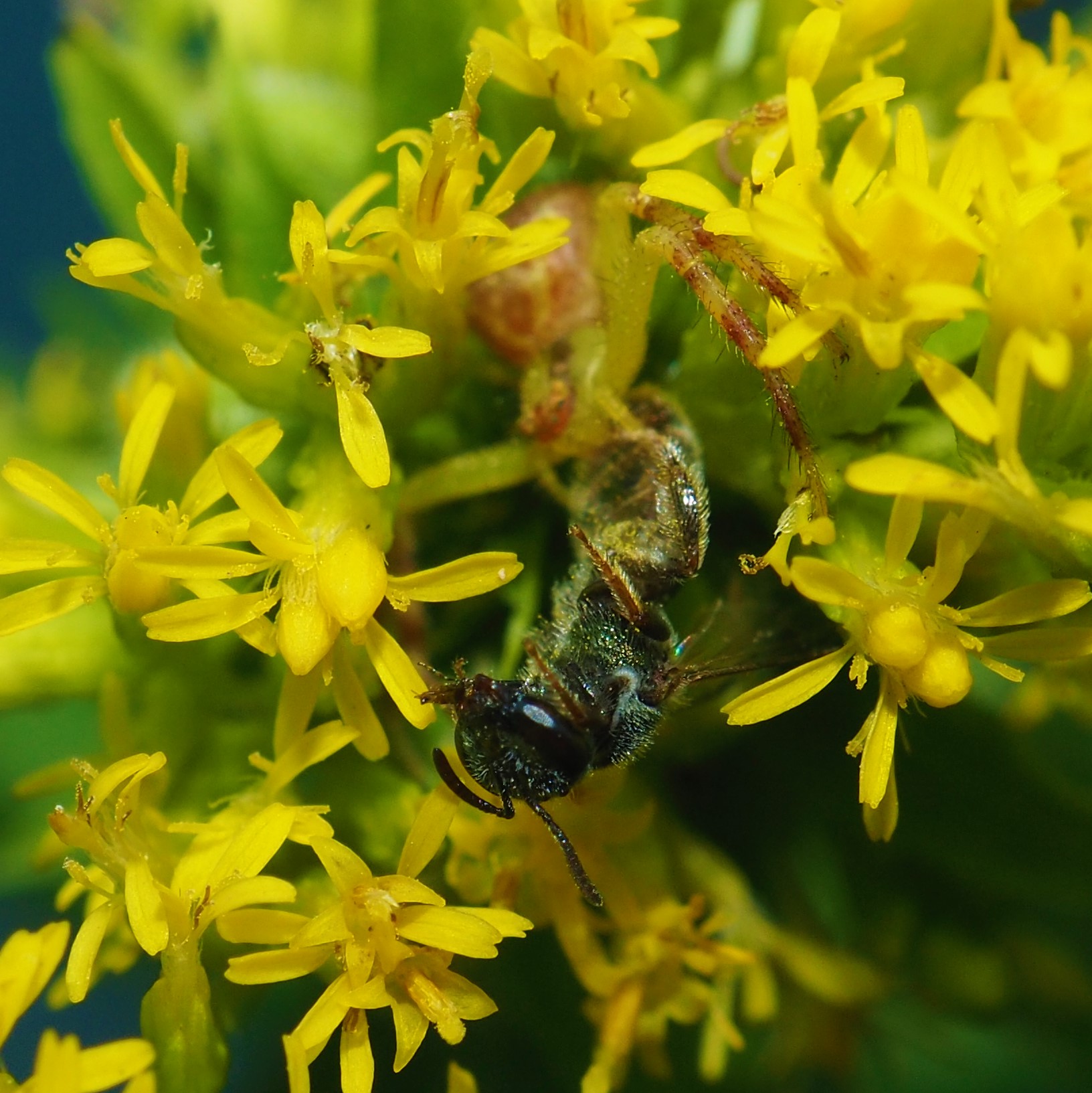
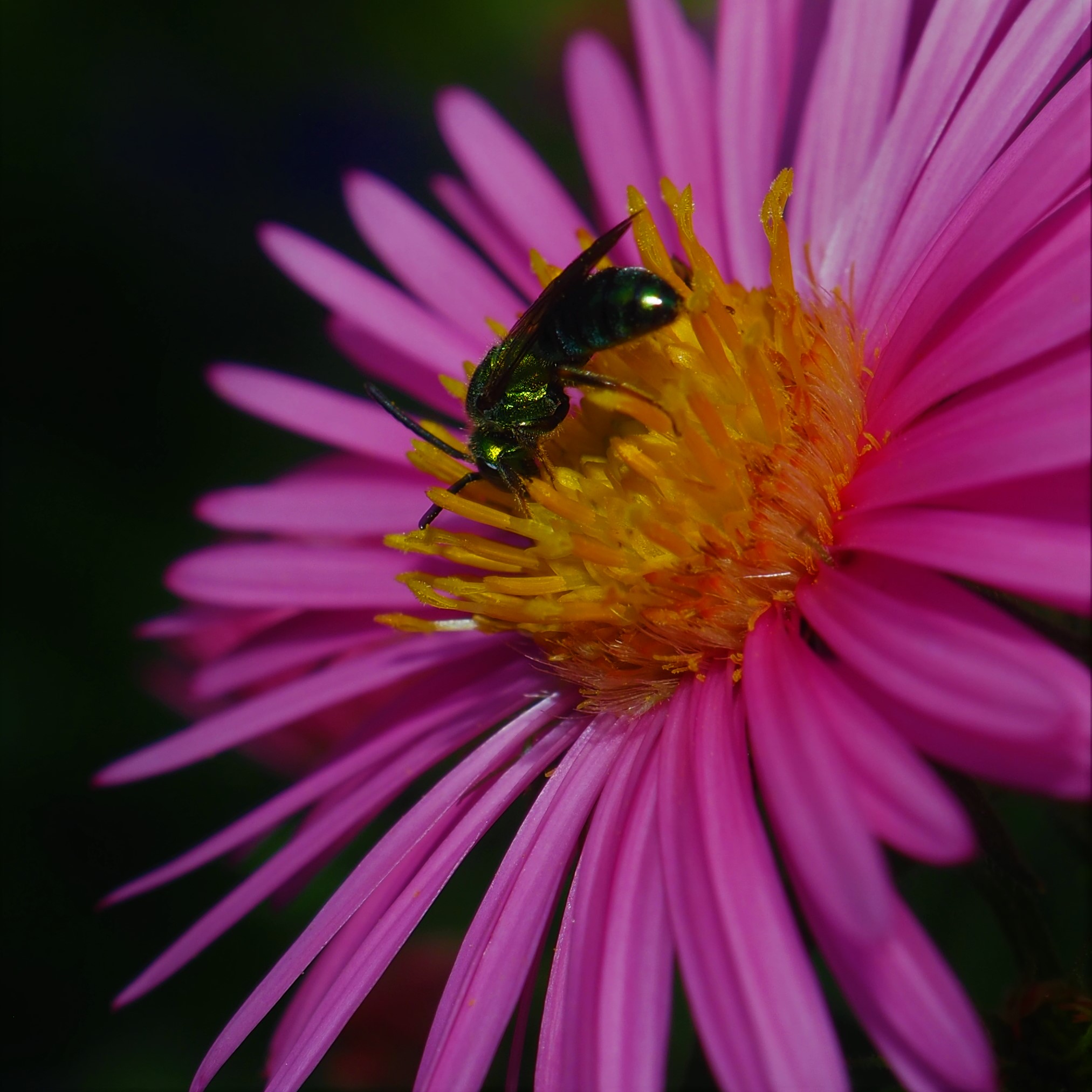
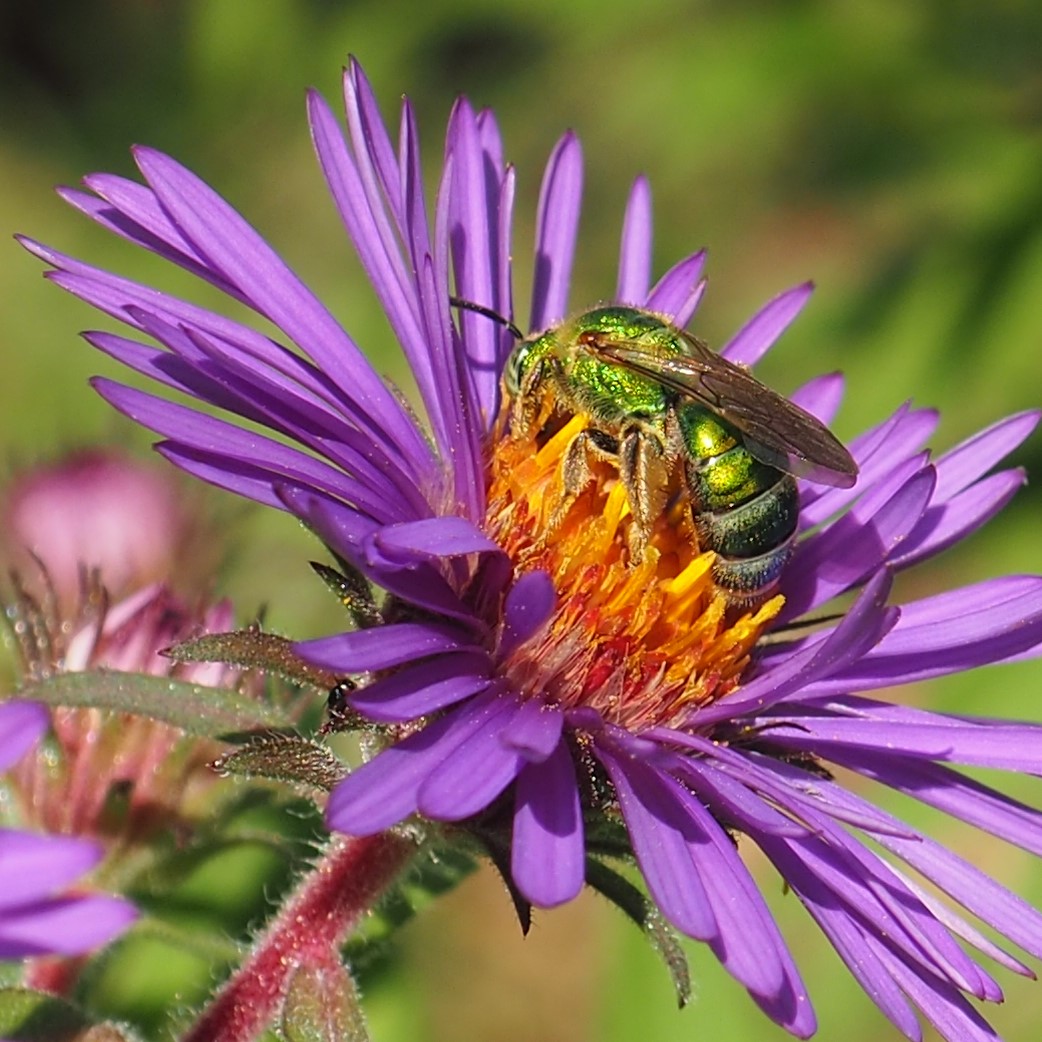
Here's another Green and Striped Bee, different from the last one. Next is a mystery, but it is showing its green face through the aster petals.
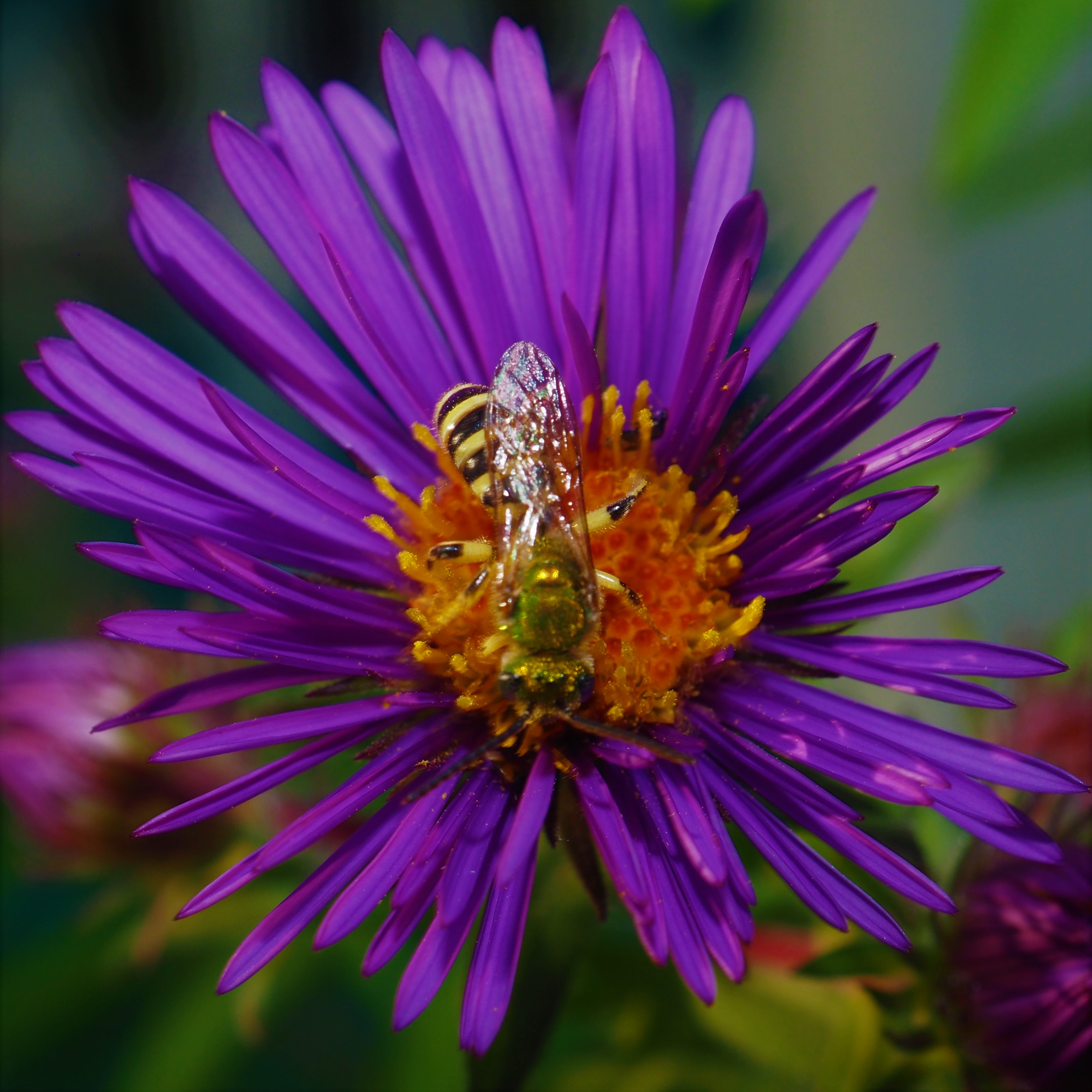
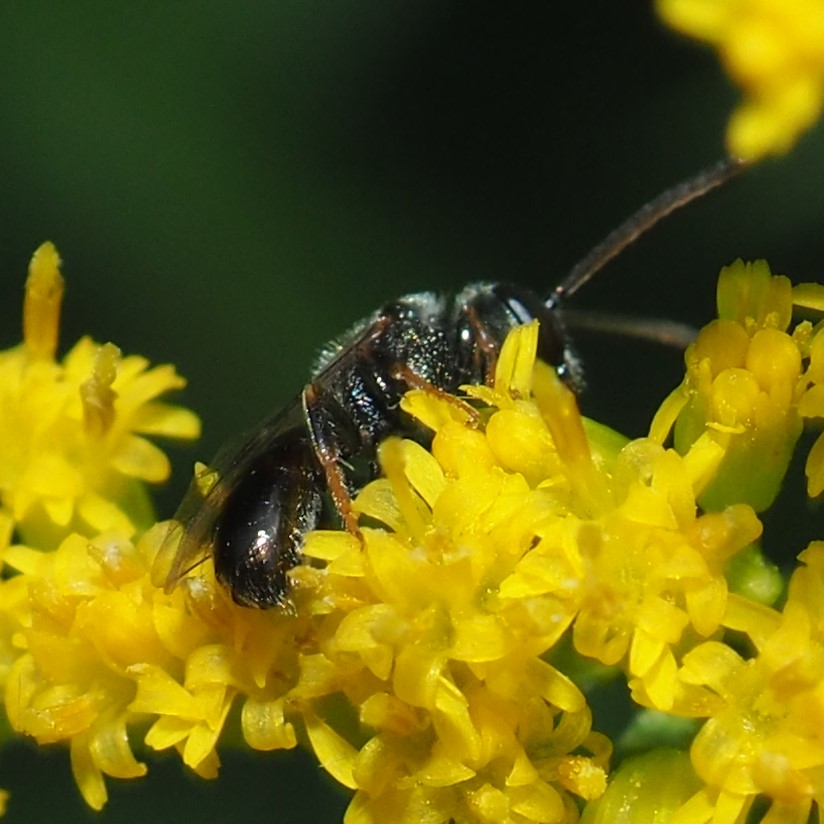
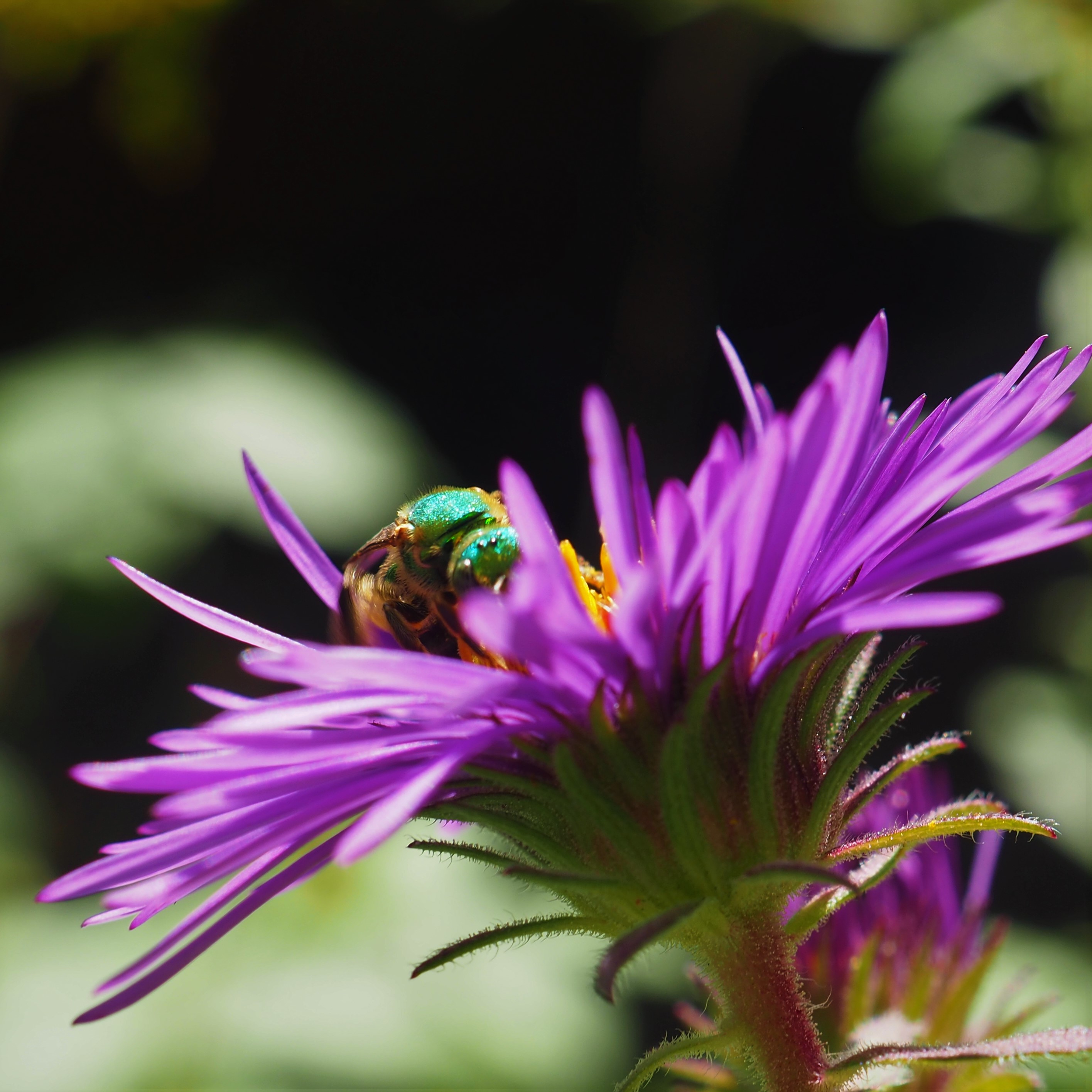
And so we visit the Beetles. There weren't so many unless you count this strange Rove Beetle (remember they have shortened hard wings that leave their flying wings uncovered.
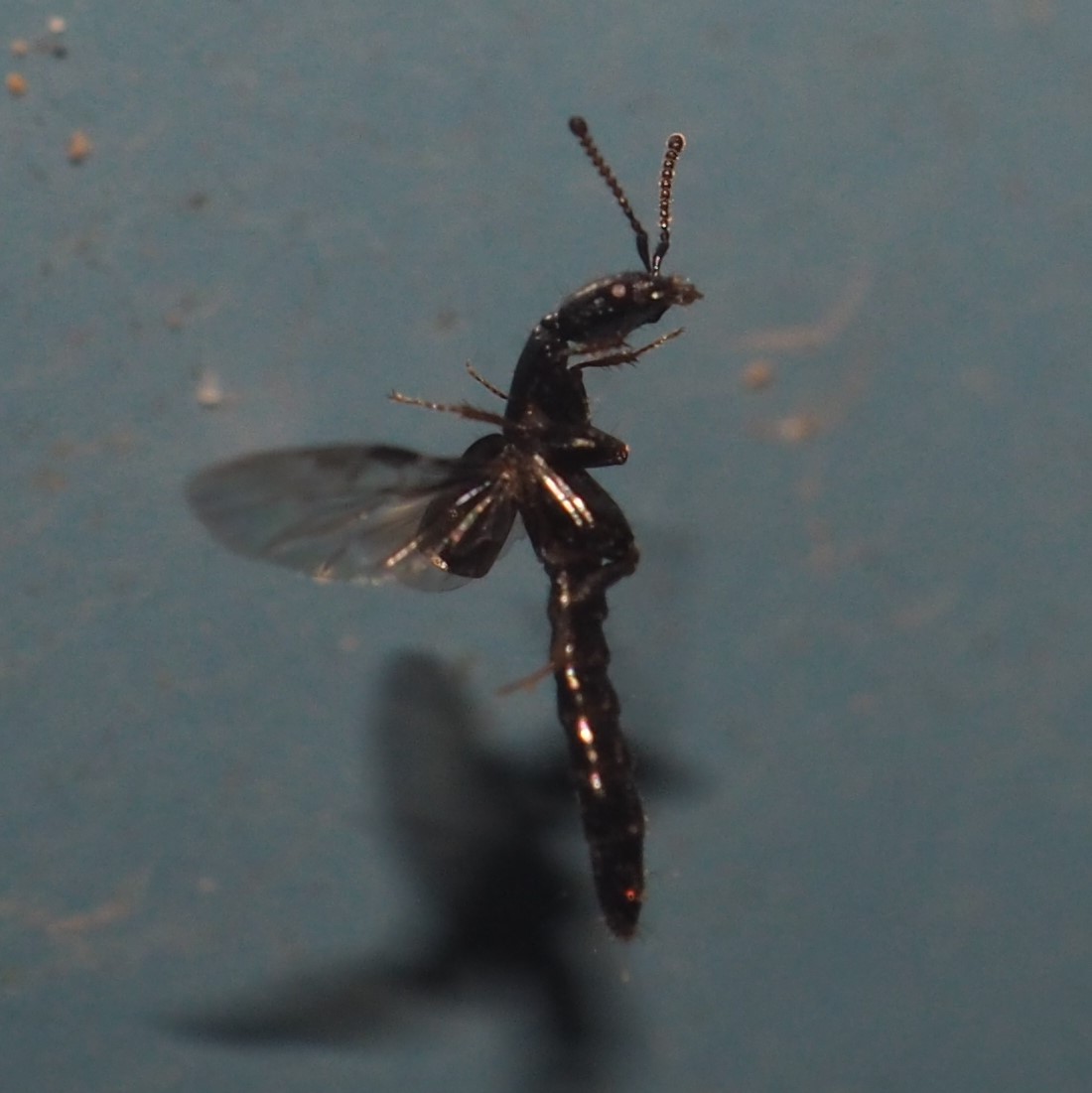
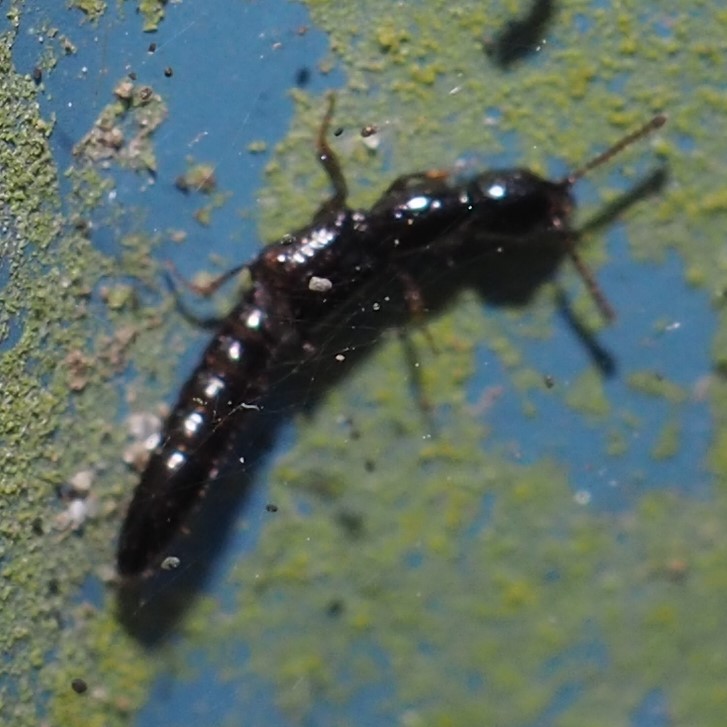
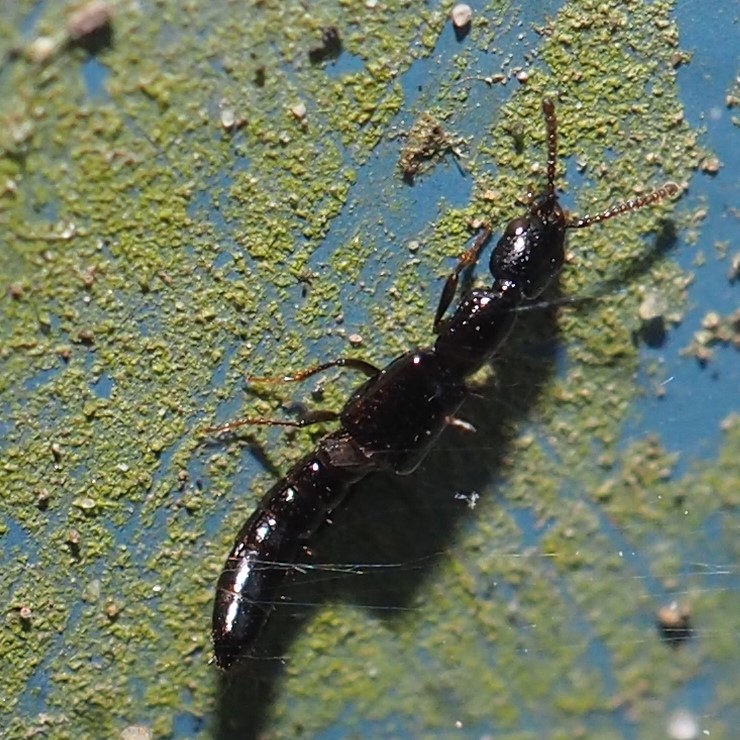
Here we have a Striped Cucumber Beetle, one last Long-horned Locust Borer Beetle, a Redbud Bruchid, and a red mystery Beetle that just showed up this morning on the North Wall of Fame.
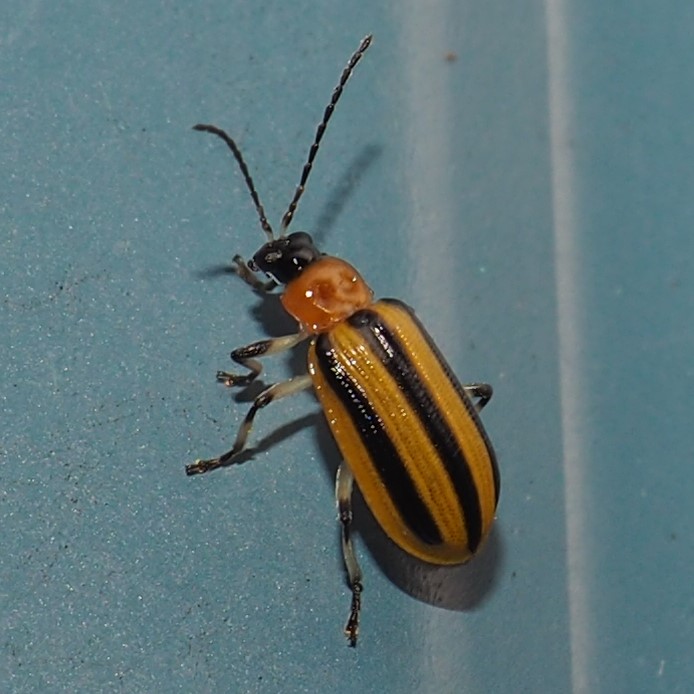
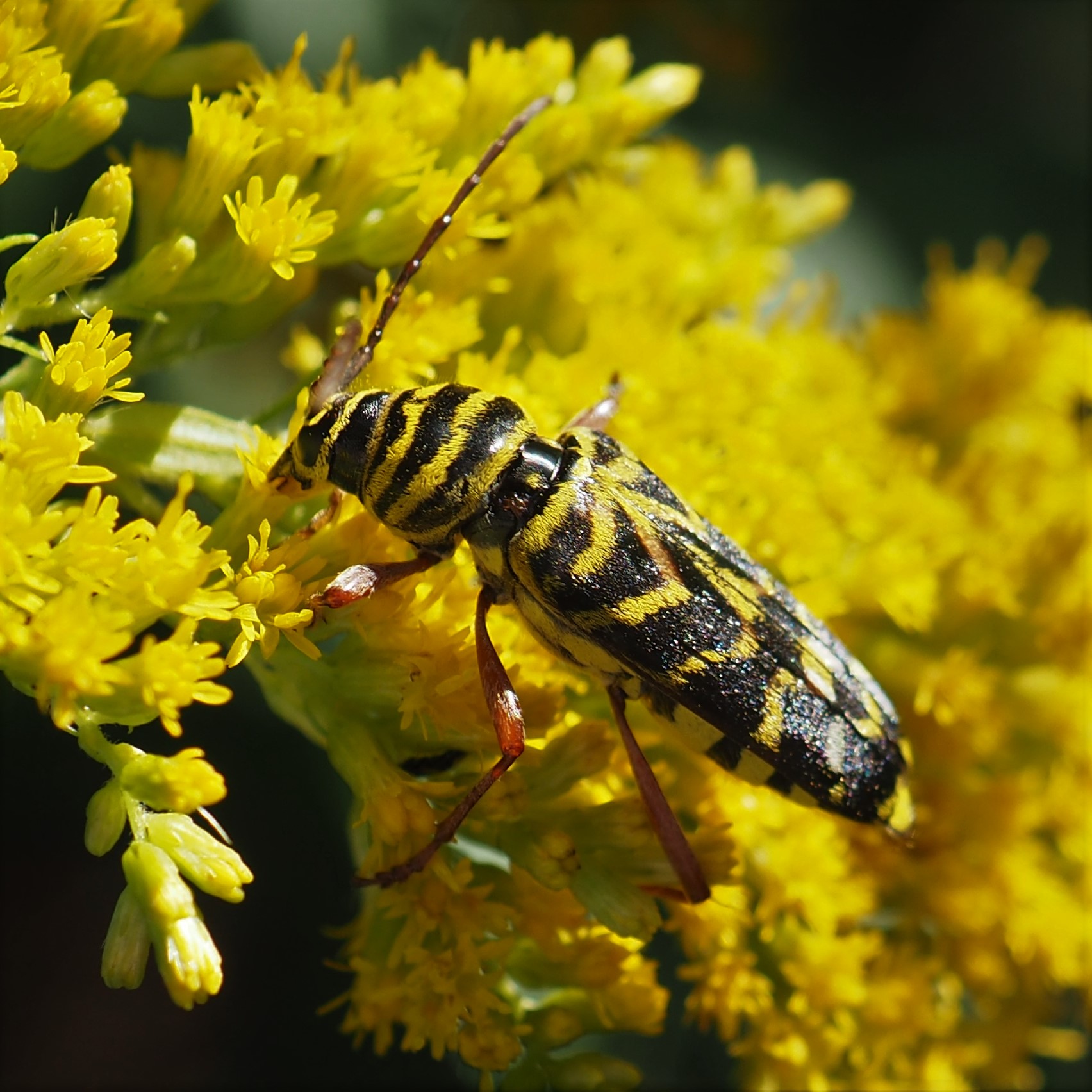
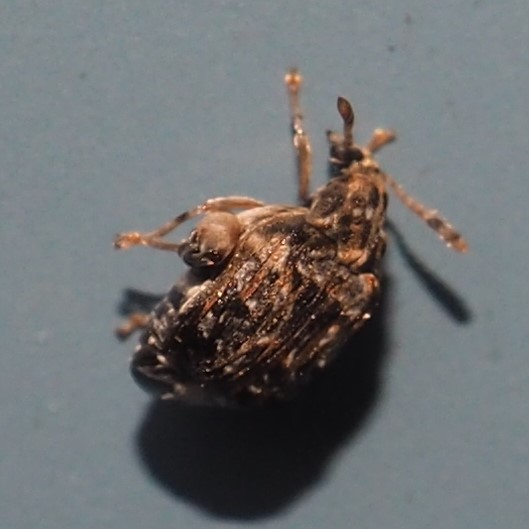
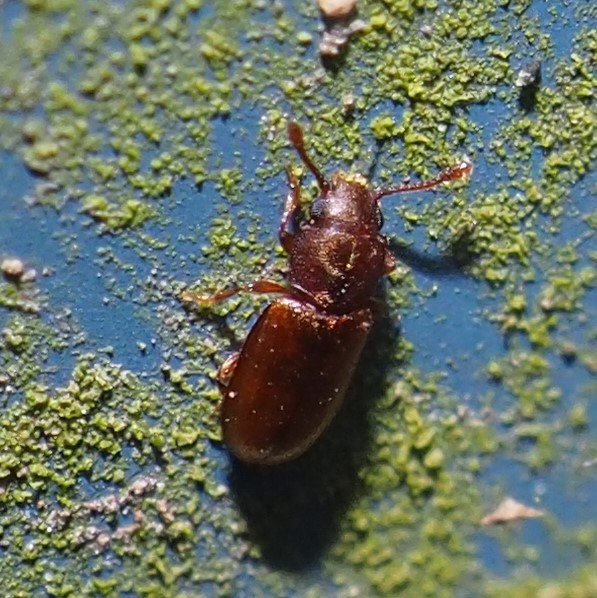
We move on to the Bugs. The camouflage is so good in this first picture, you might walk right by the scene of this Assassin Bug (Zelus luridus) and its prey. Same for picture 2. But picture 3 shows the little fellow that was walking on the Wall this morning.
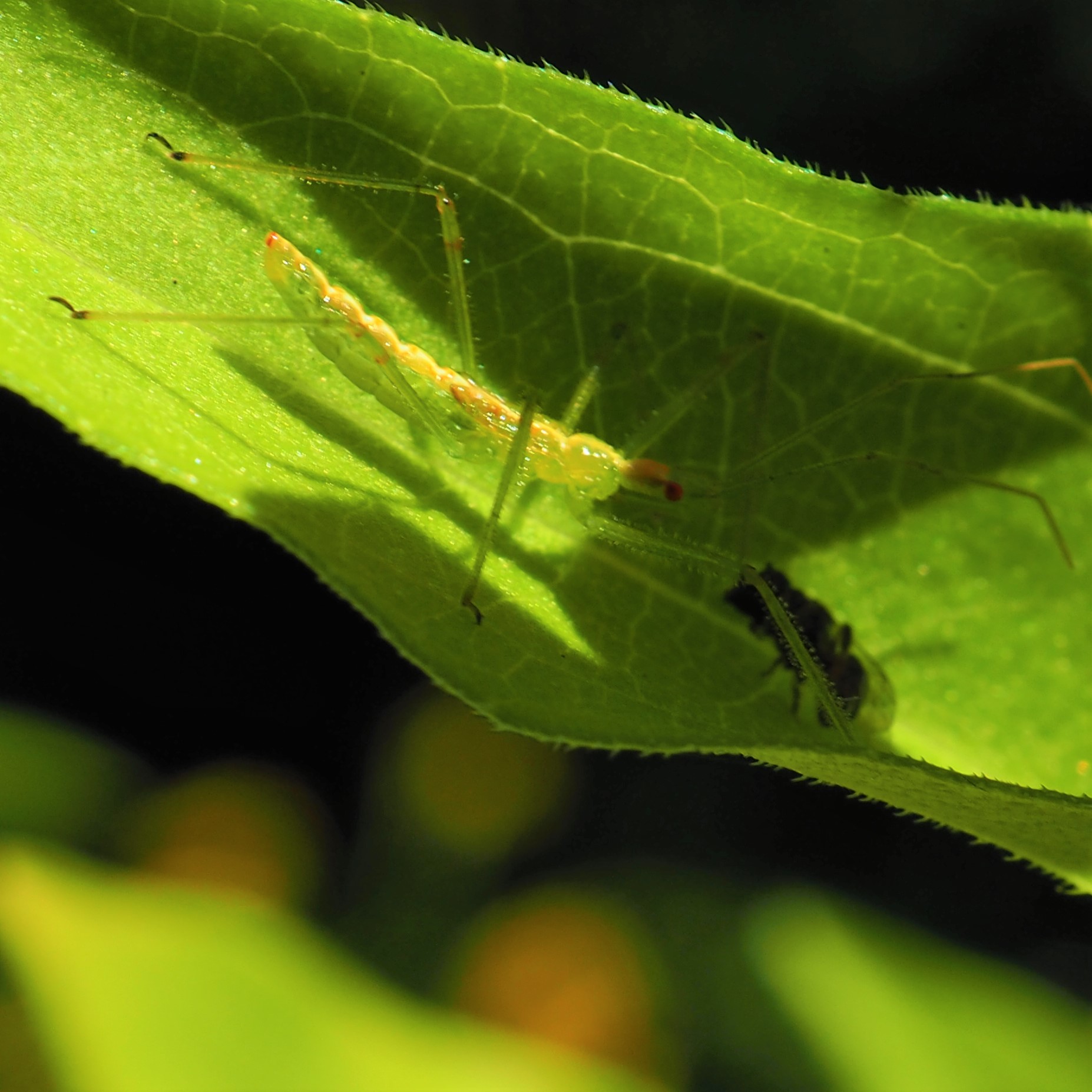
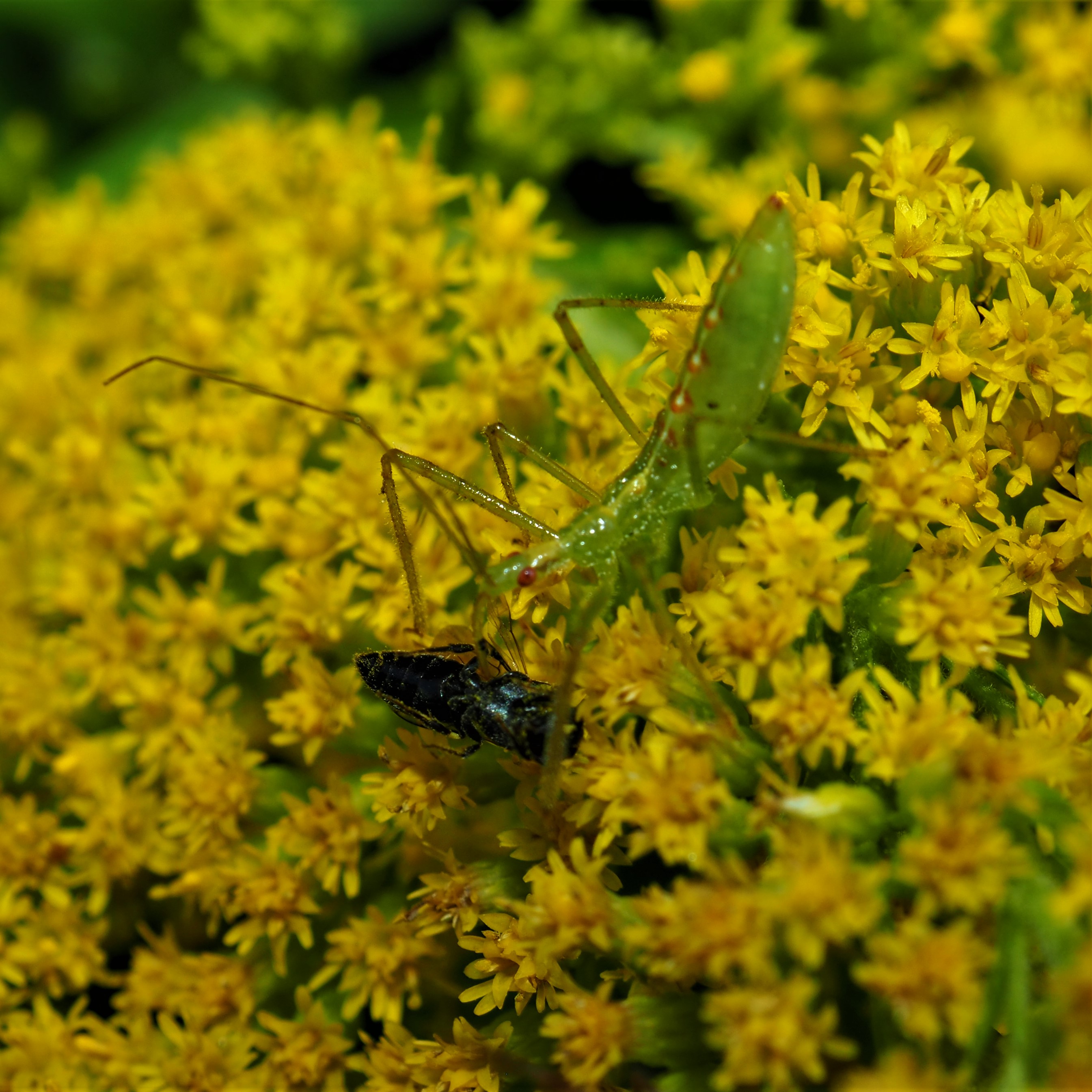
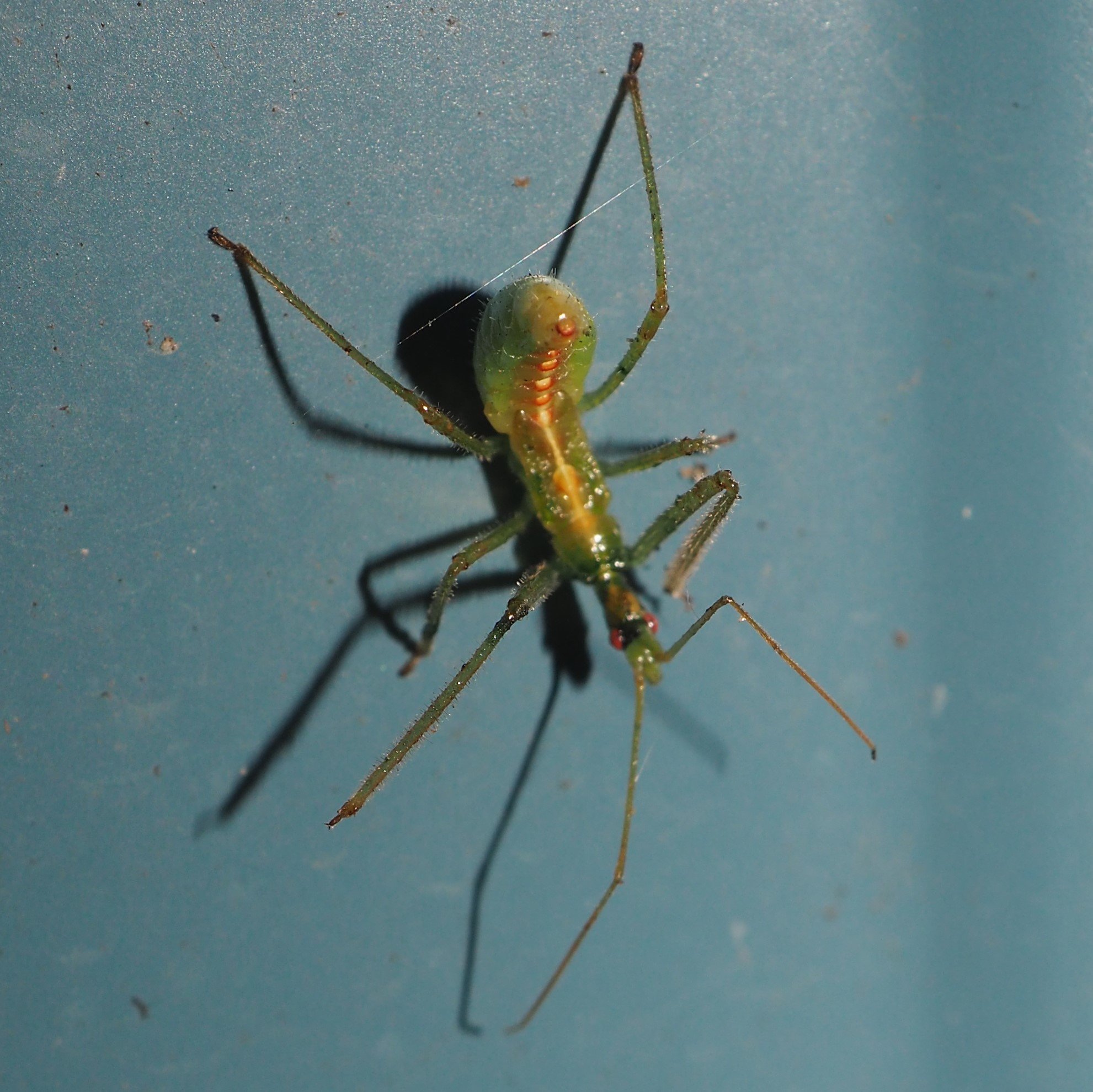
M for Mantis, doesn't really fit in here but the idea of a carnivorous Insect should (in my humble opinion) be allowed to join its tiny competitors. I've said that I wouldn't accept a Praying Mantis in my yard as it had enough murderous little creatures, and a Mantis is a murderous Huge Creature. But the other day as I came out the back door, I saw a large Chinese Mantis on the screen of the kitchen window.
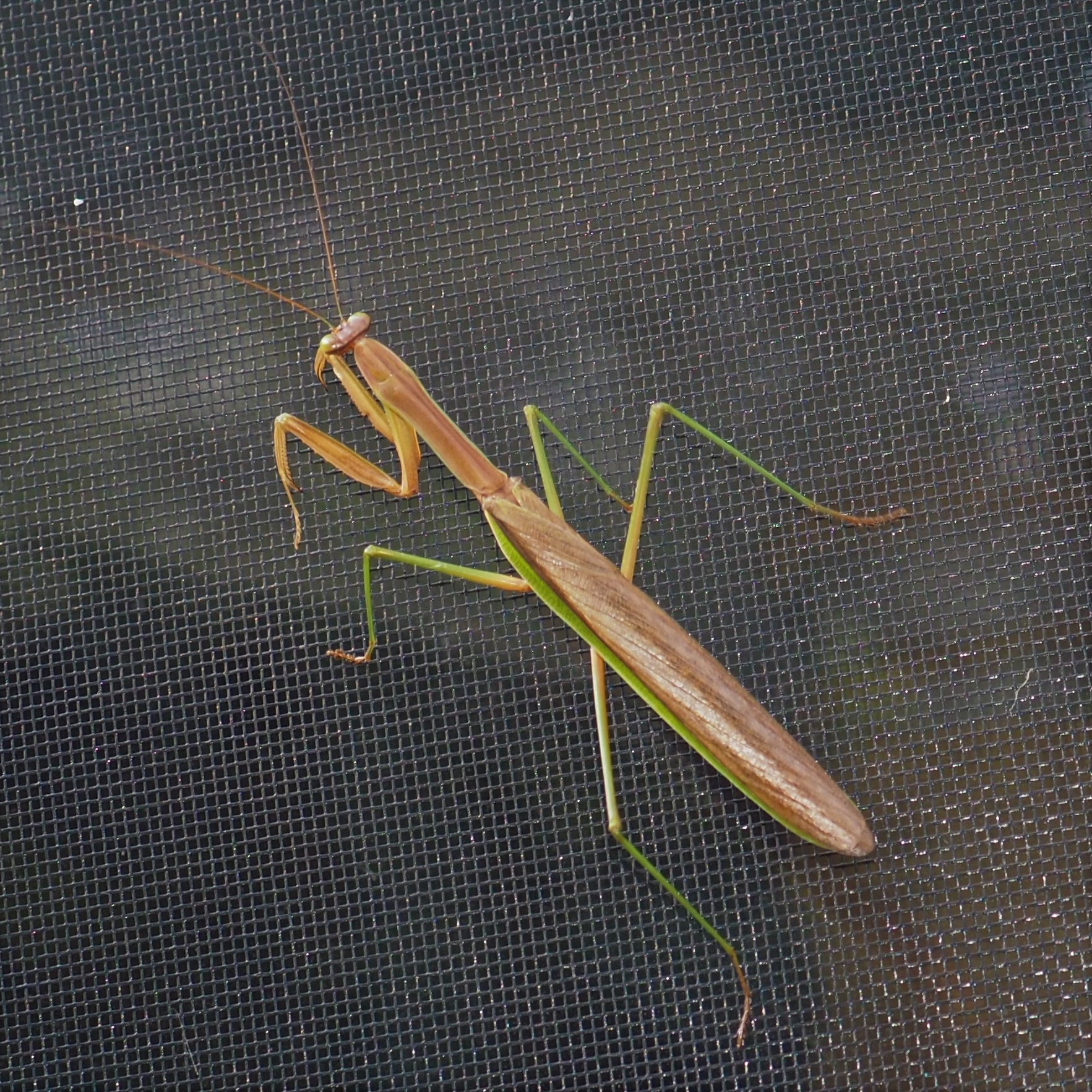
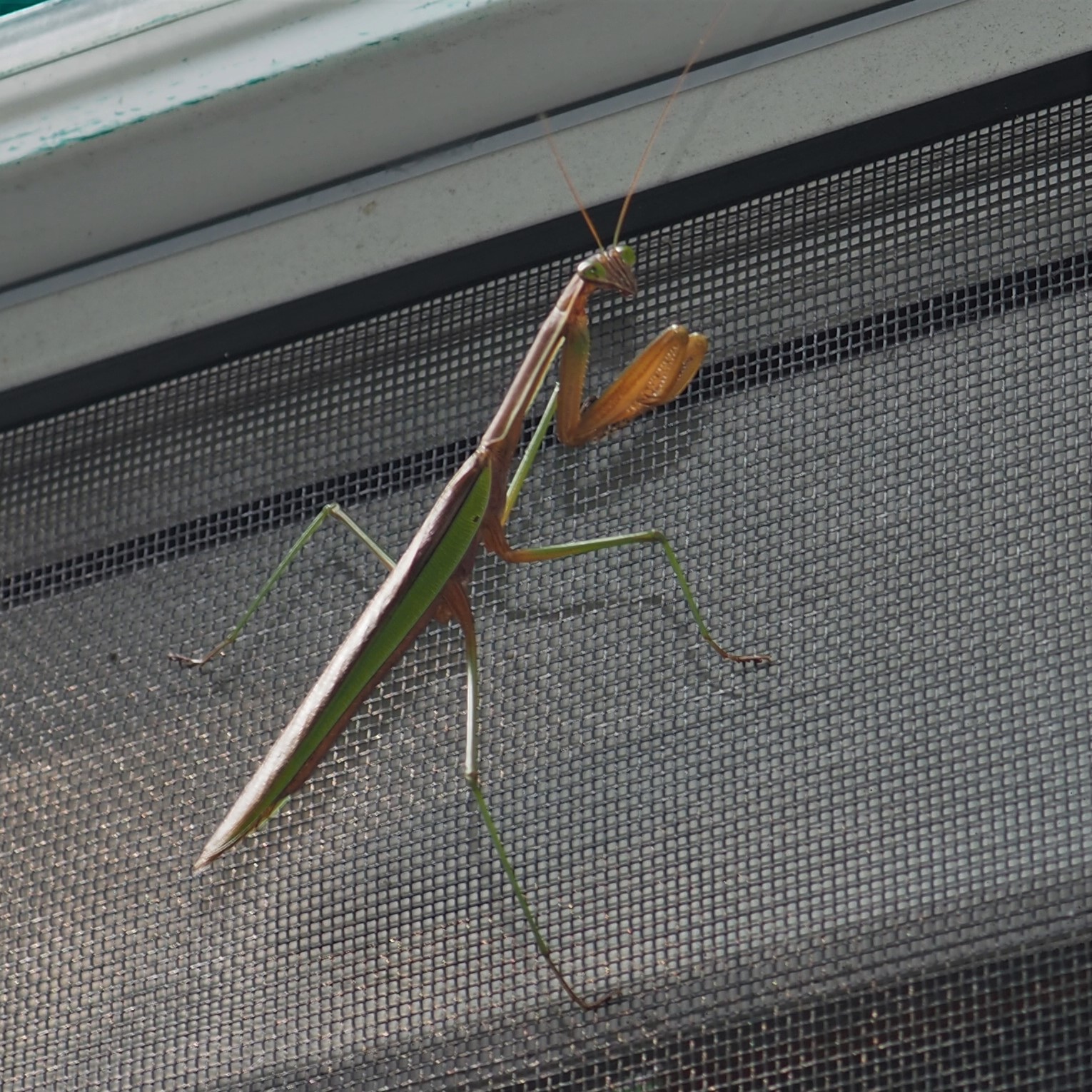
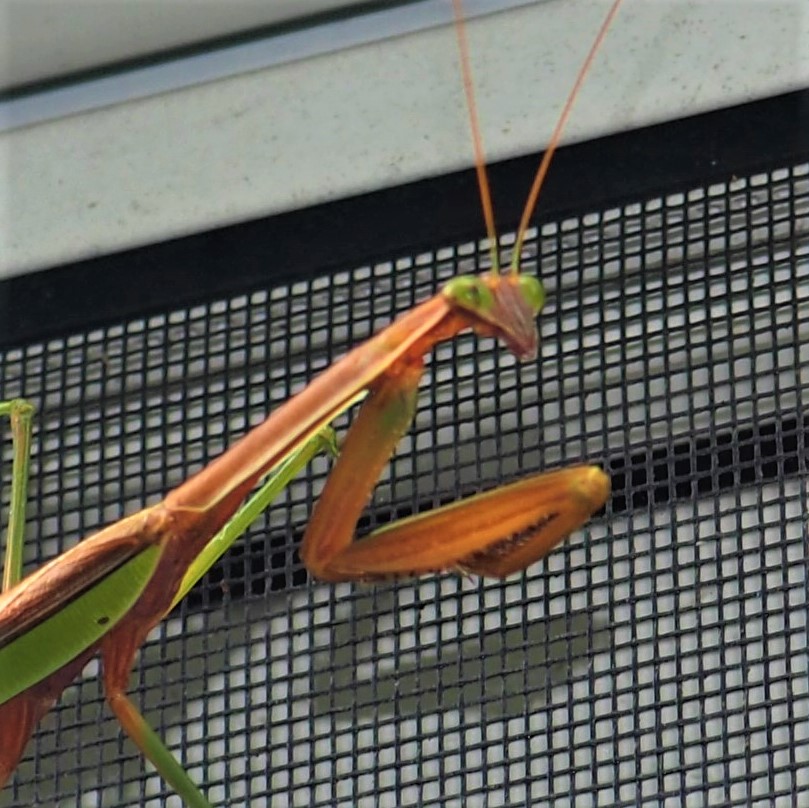
Now back to the Bugs (which a Mantis isn't). I always do the Leafhoppers first. They finally seem to be getting tired of showing off for me all over the place. Here we have an Erasmoneura vulnerata, one of the infinite numbers of variations on Eratoneura, and an Erythroneurs aclys.
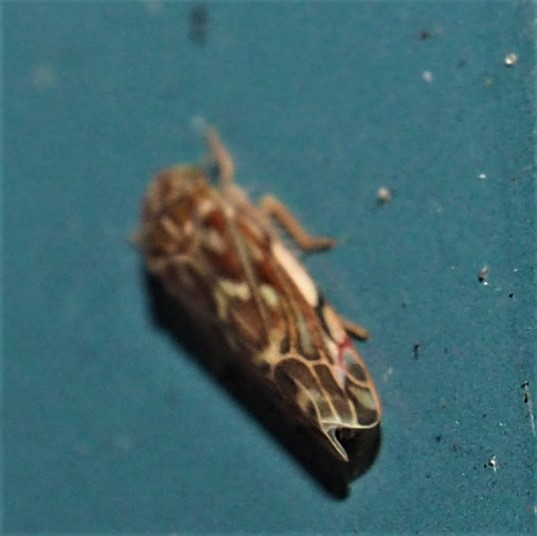
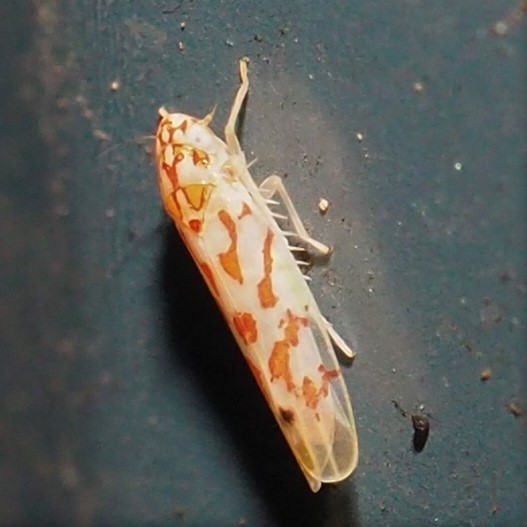
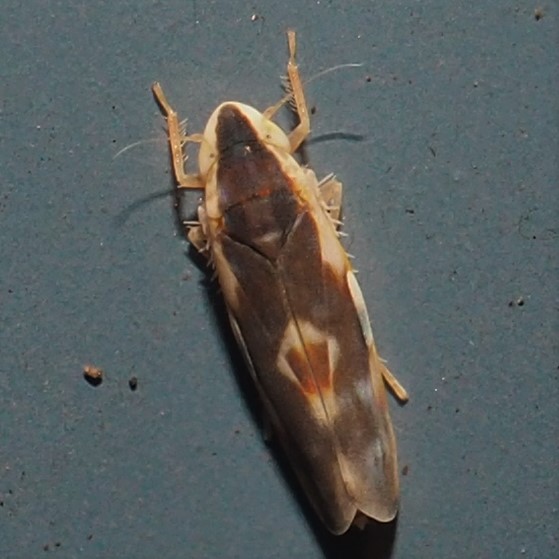
Finally, here is a Graphocela genus red and blue, and a Japanese Maple Leafhopper. What beauties!
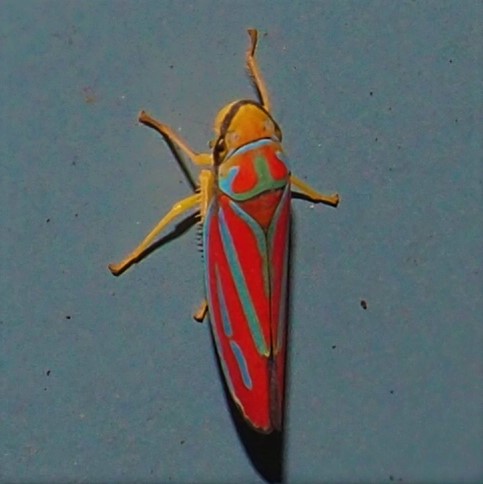
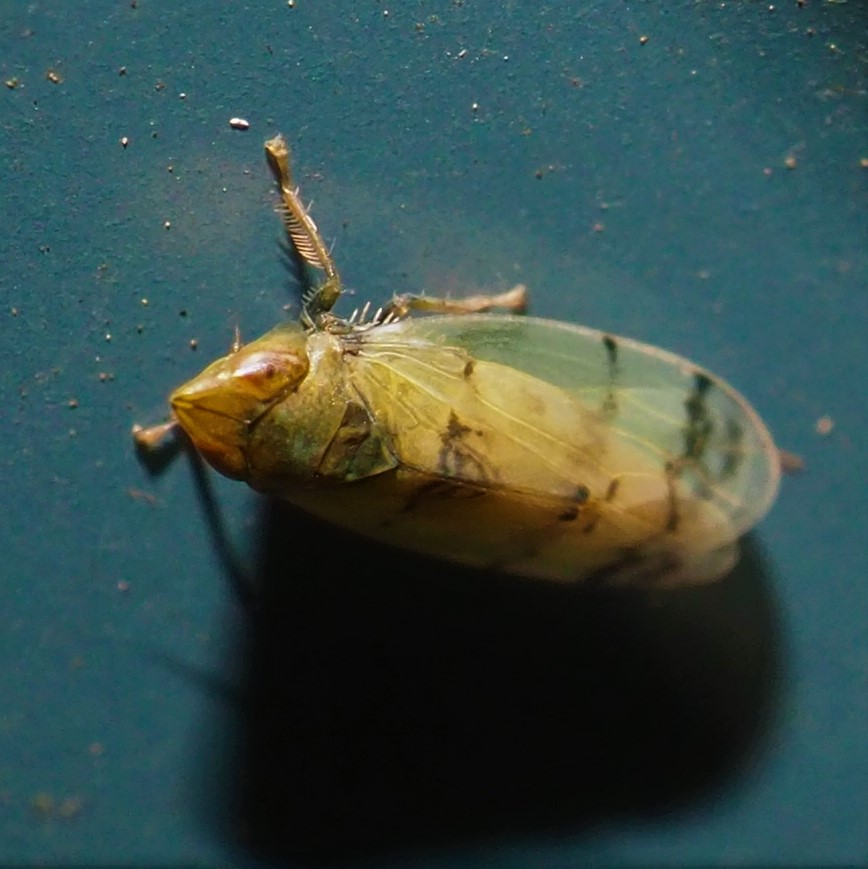
No Spittlebugs, no Planthoppers, no Treehoppers. But there were a few Bugs. First up, some kind of Plant Bug; then another Plant Bug in genus Lygus. Third, a Stilt Bug.
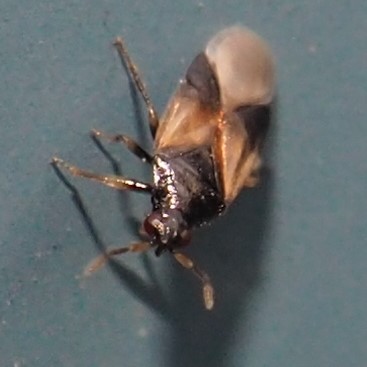
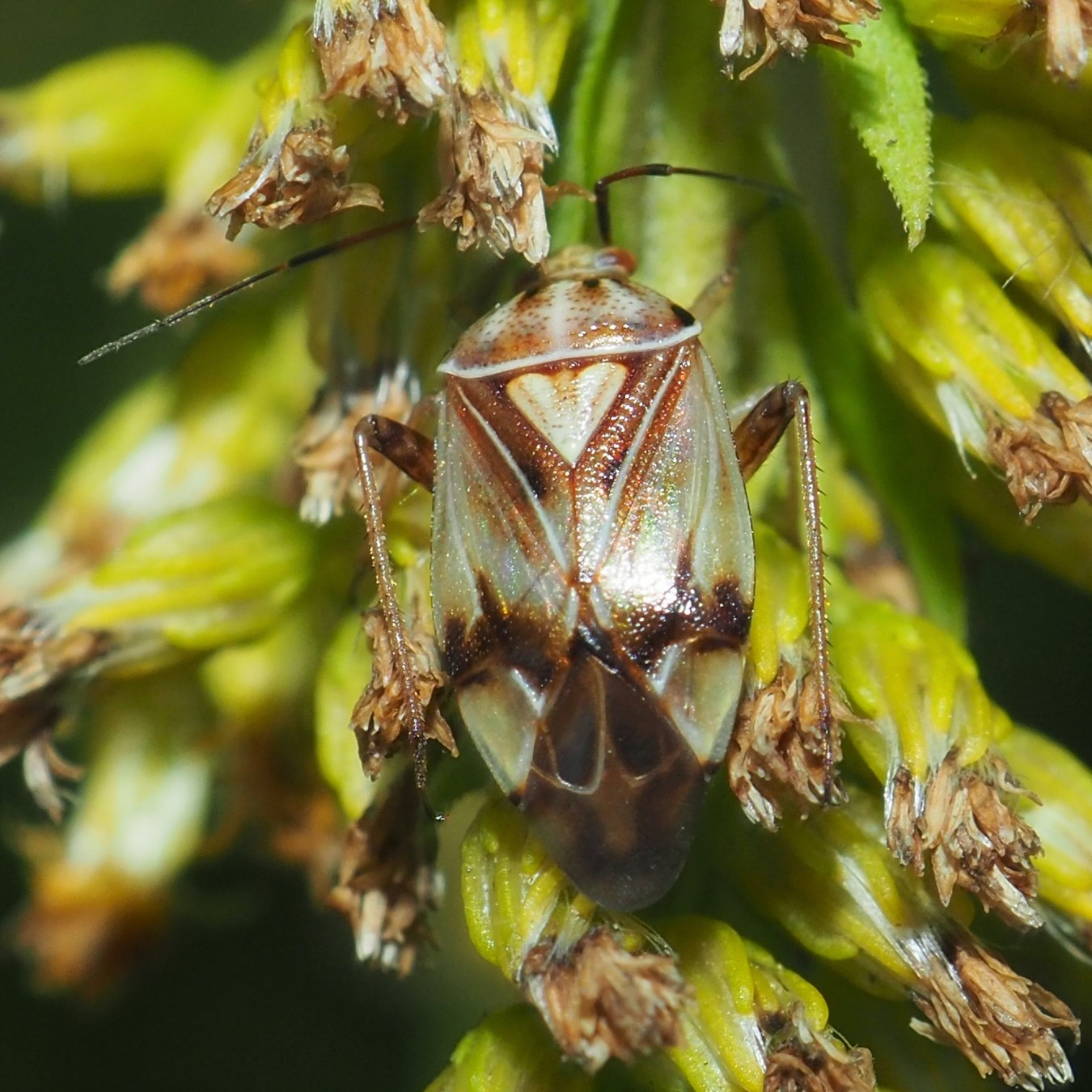
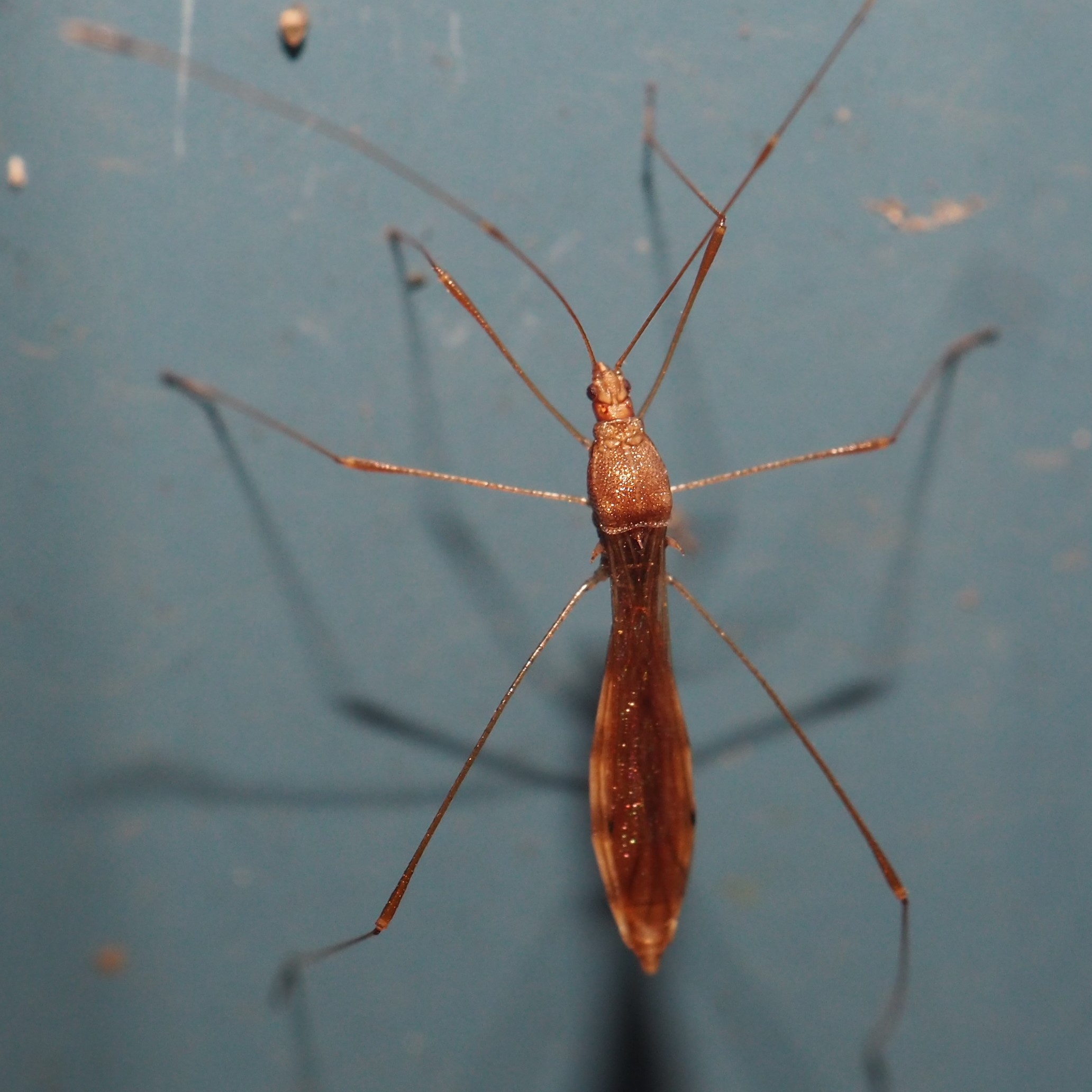
Now, the two that have Seed Bug in their names: first off is Drymus unus, a Dirt-colored Seed Bug. Then comes this Long-necked Seed Bug. Finally, we see the Brown Marmorated Stink Bugs are still kicking.

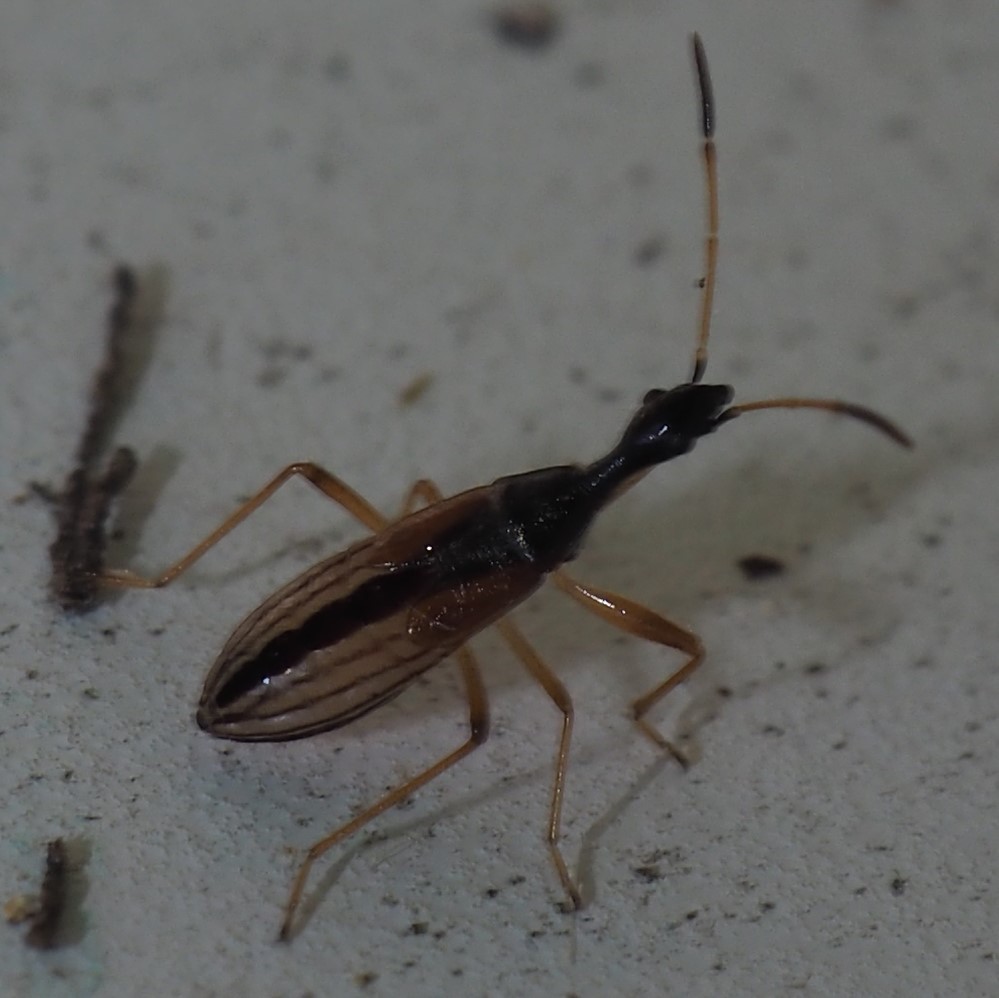
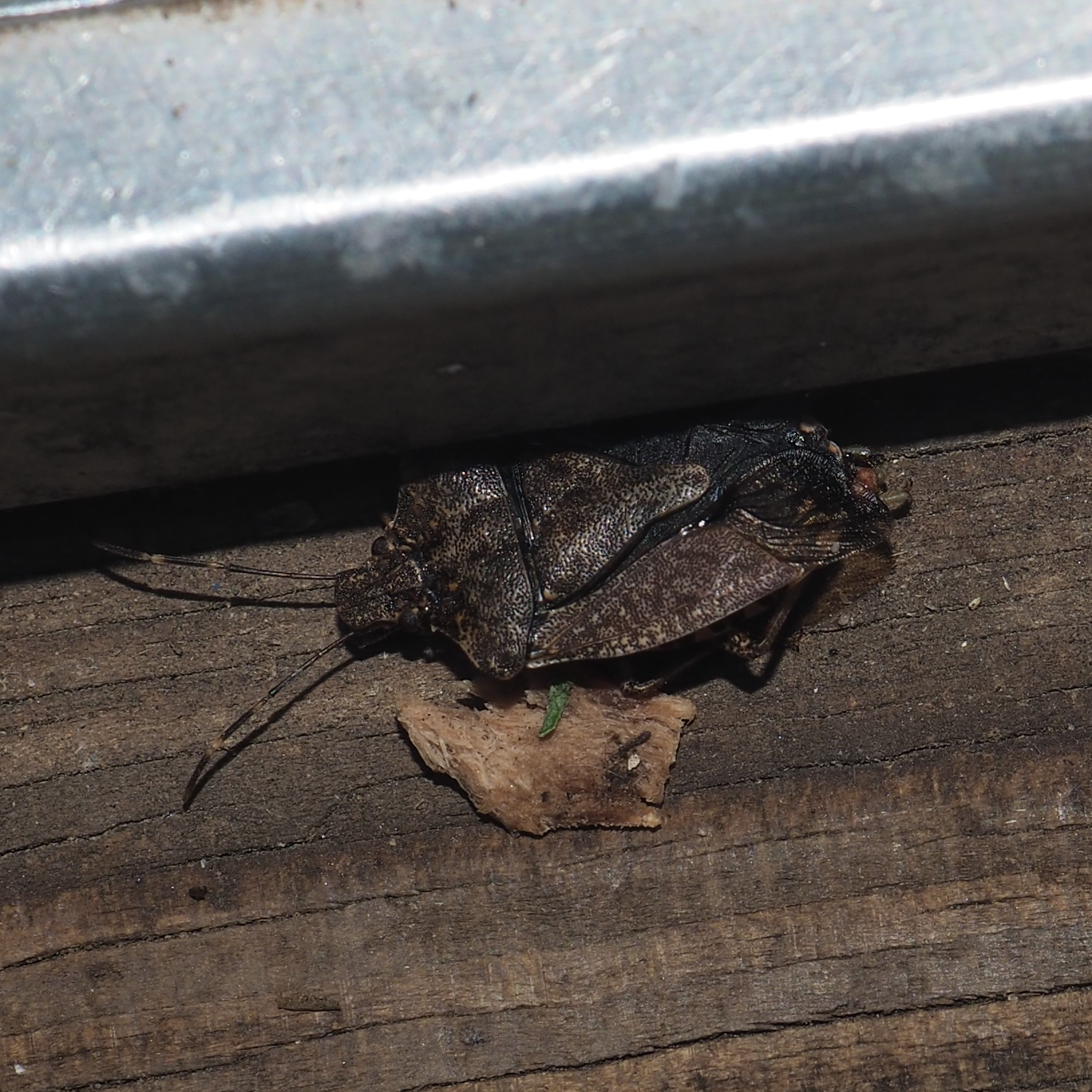
Here is a bug that I COULD NOT identify, even to say it was a Bug, not a Beetle. But James Bailey of iNat reminded me that I HAD seen it back in June (picture 2), but it looked completely different. Part of the reason picture 1 looks so different from picture 2 is that picture 1 shows a nymph. So this insect is actually Empicoris errabundus, a thread-legged Bug. I probably should have placed this back with the Assassin Bugs, since it is a carnivorous creature. Look at the mantis-like claws in picture 2!

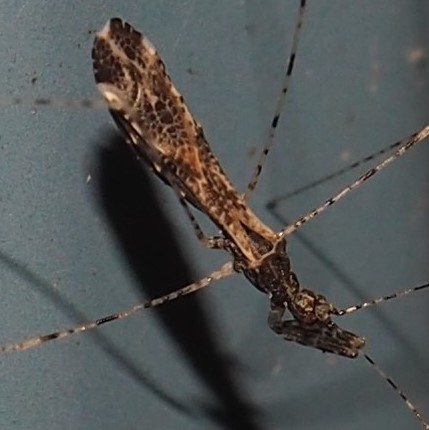
Since there was only this one Orthopteran, I decided to put this Jumping Bush Cricket here in alphabetical order. It is followed by the lovely action shot Chaim got of this Shadow Darner.
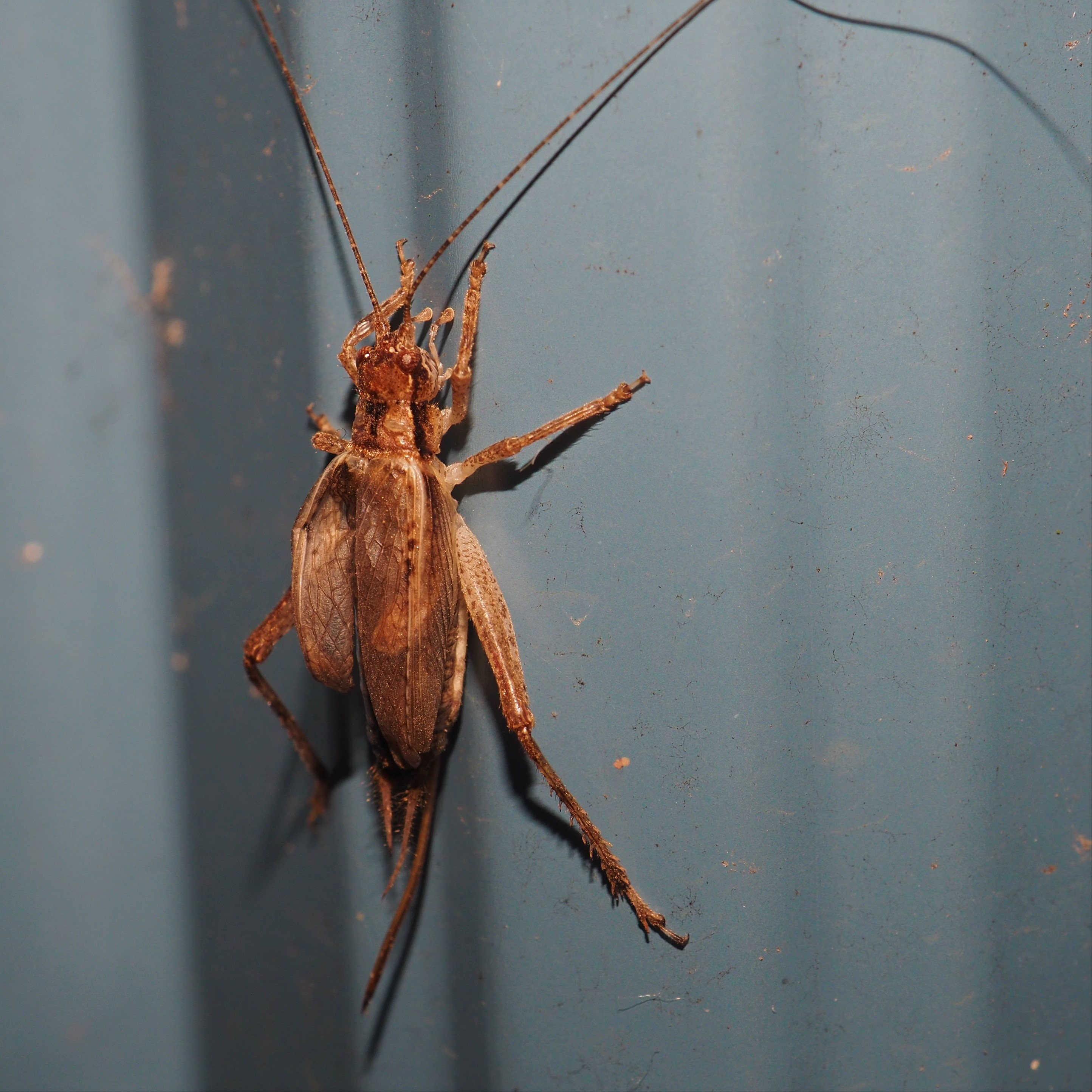
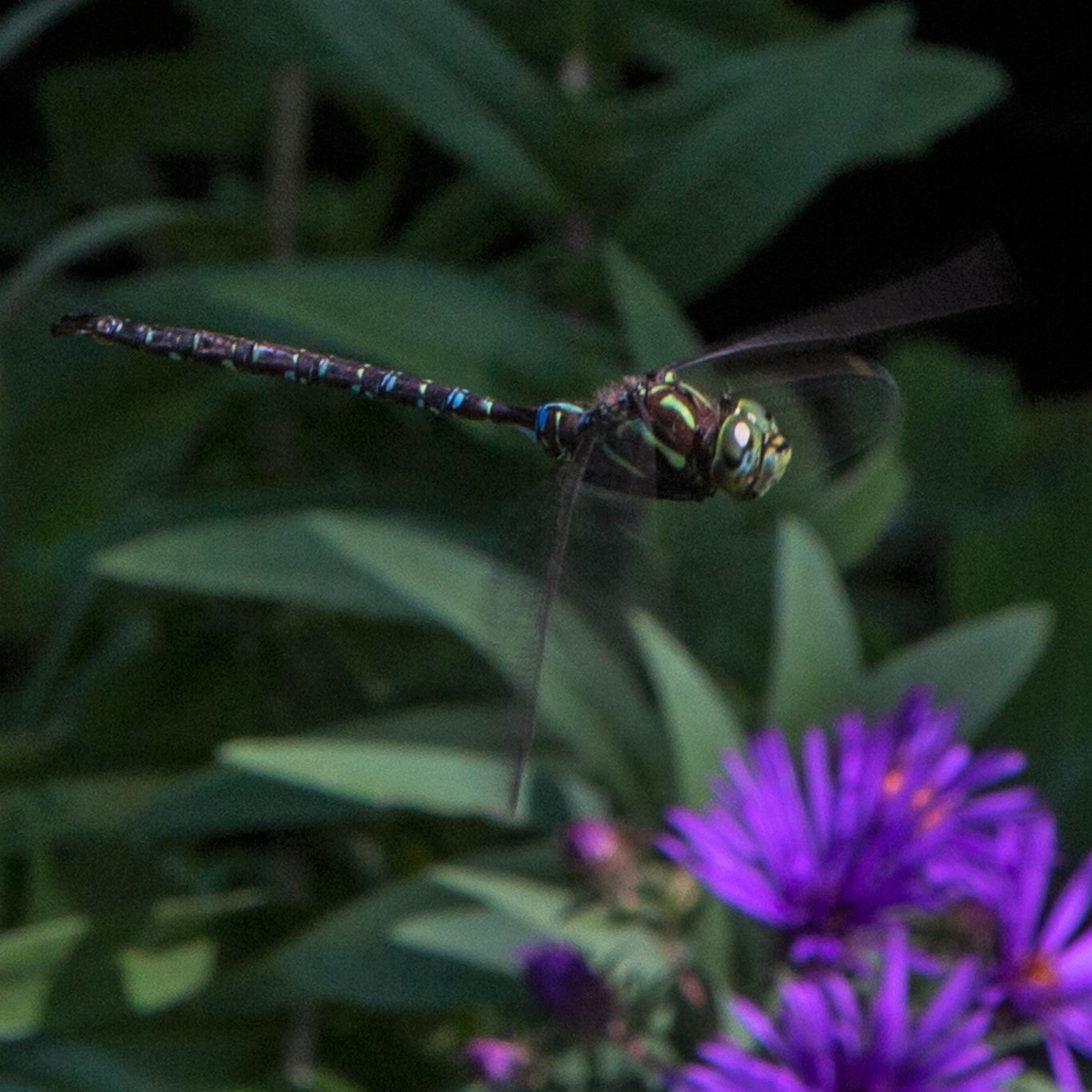
We continue to look at the interesting color patterns the baby fish were developing. Here is the Dark one, followed by Little Chico and Spotty.
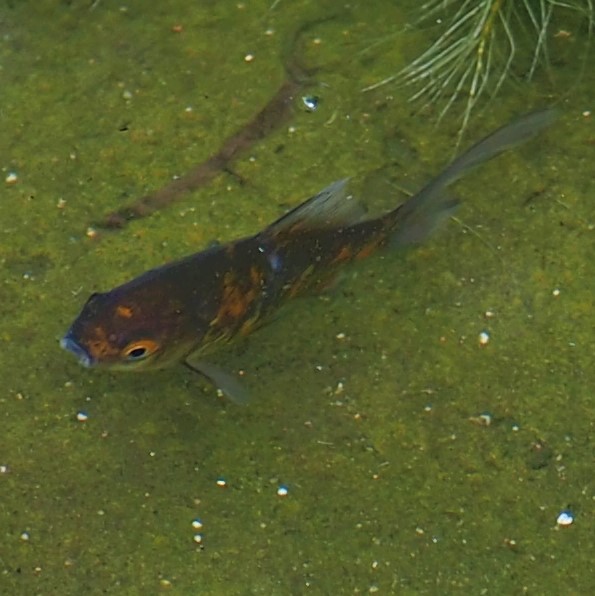
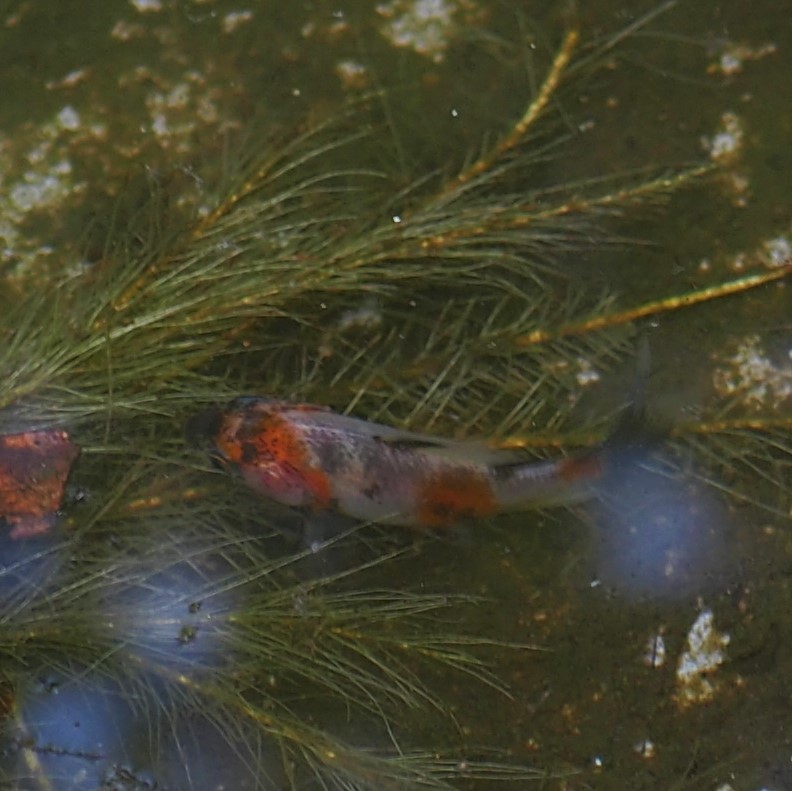
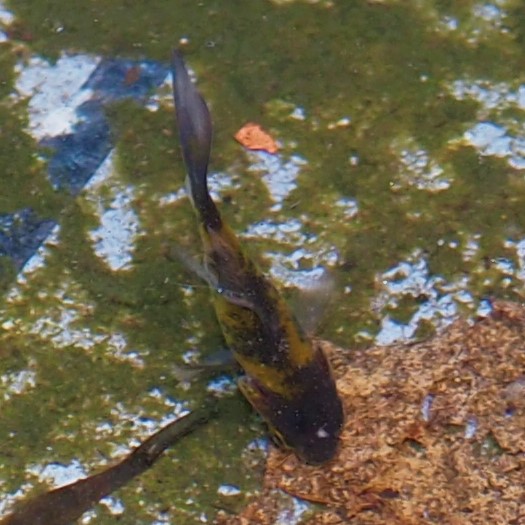
Here are Chica, the mother of the babies, and a few of the other fishes.
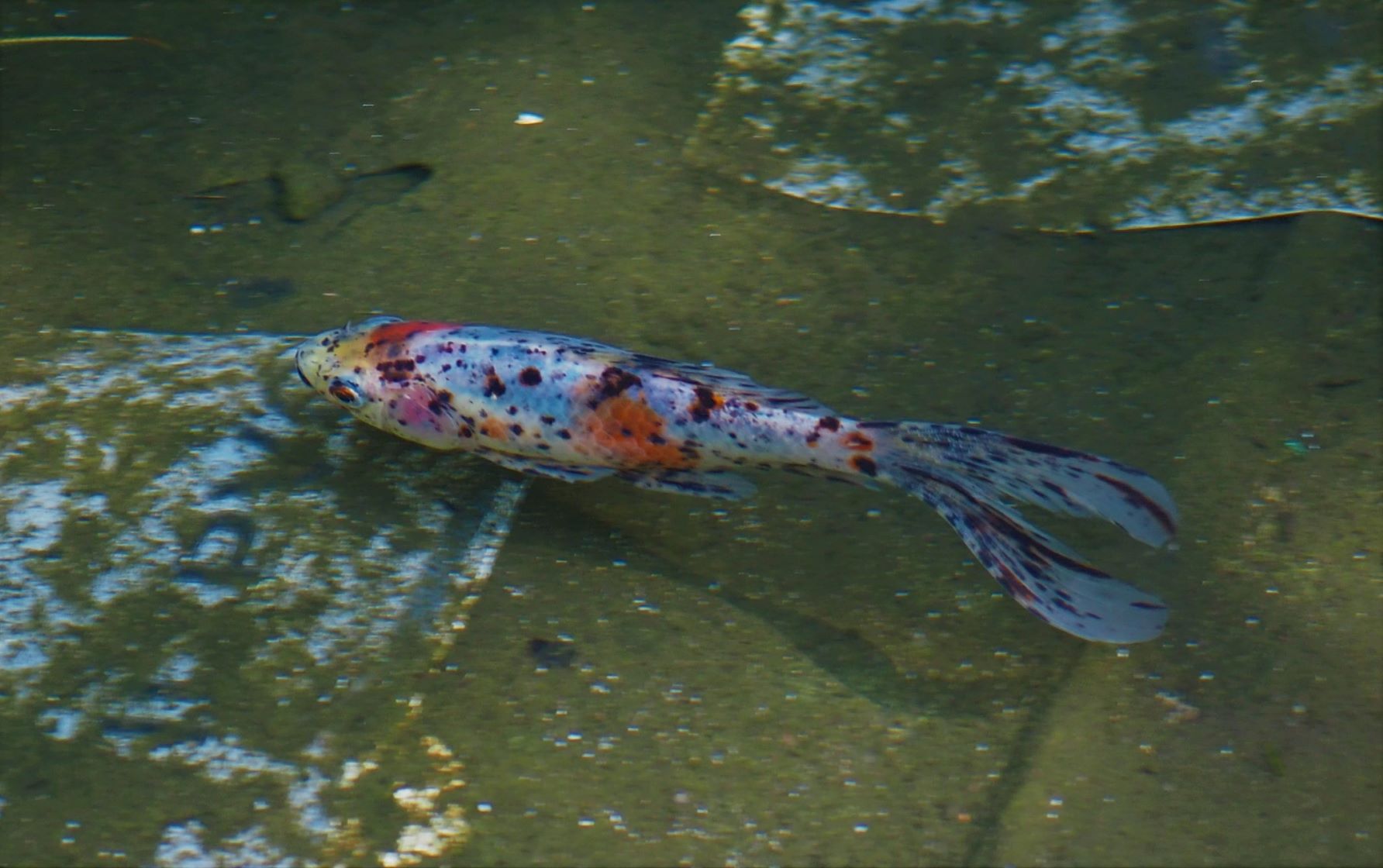
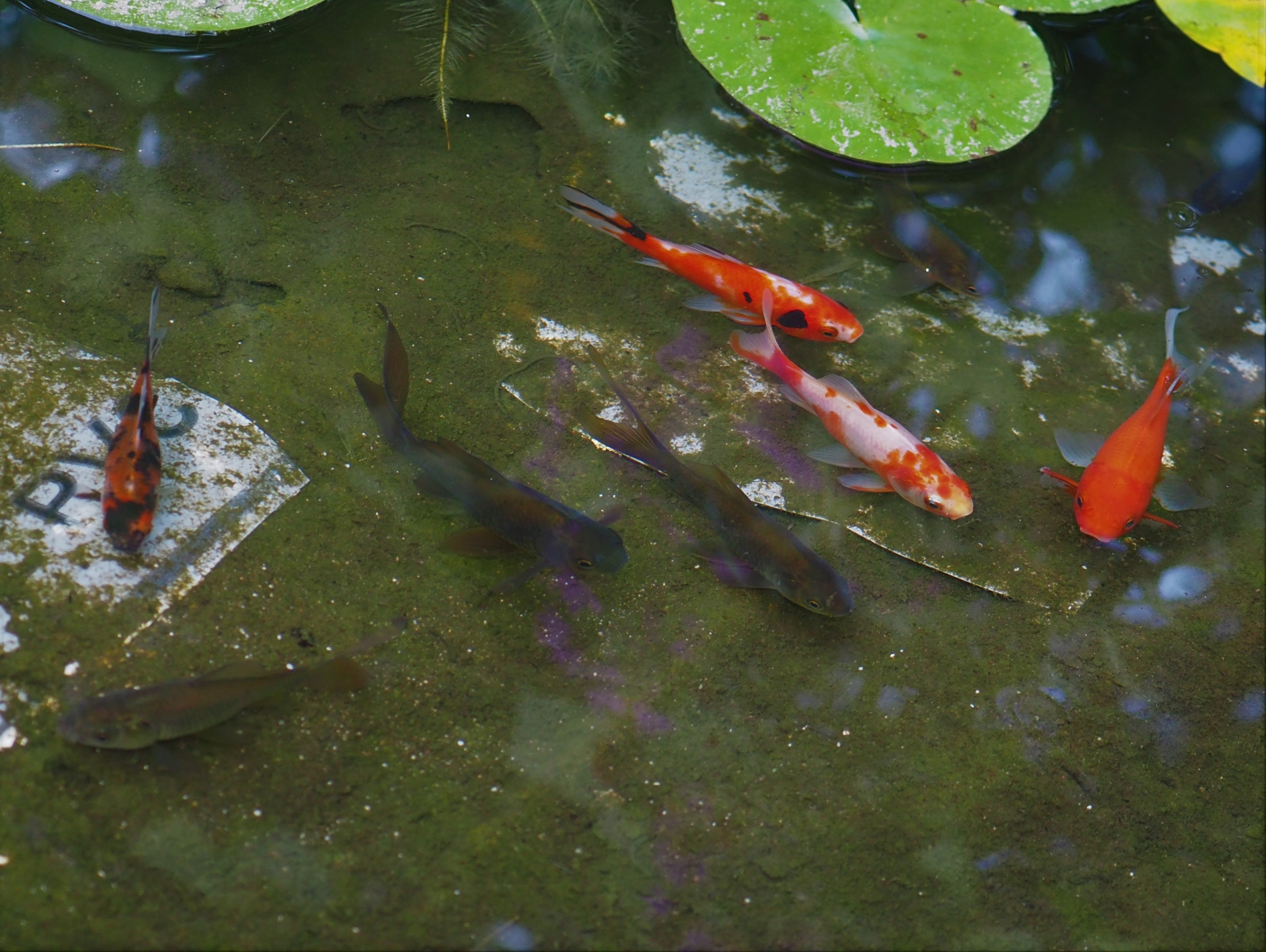
We have reached the Flies. Remember when we had that Gigantic Crane Fly a couple of weeks ago? Well, now the tiny ones are out. Third is a fly that looks to be related to the Dung Flies.
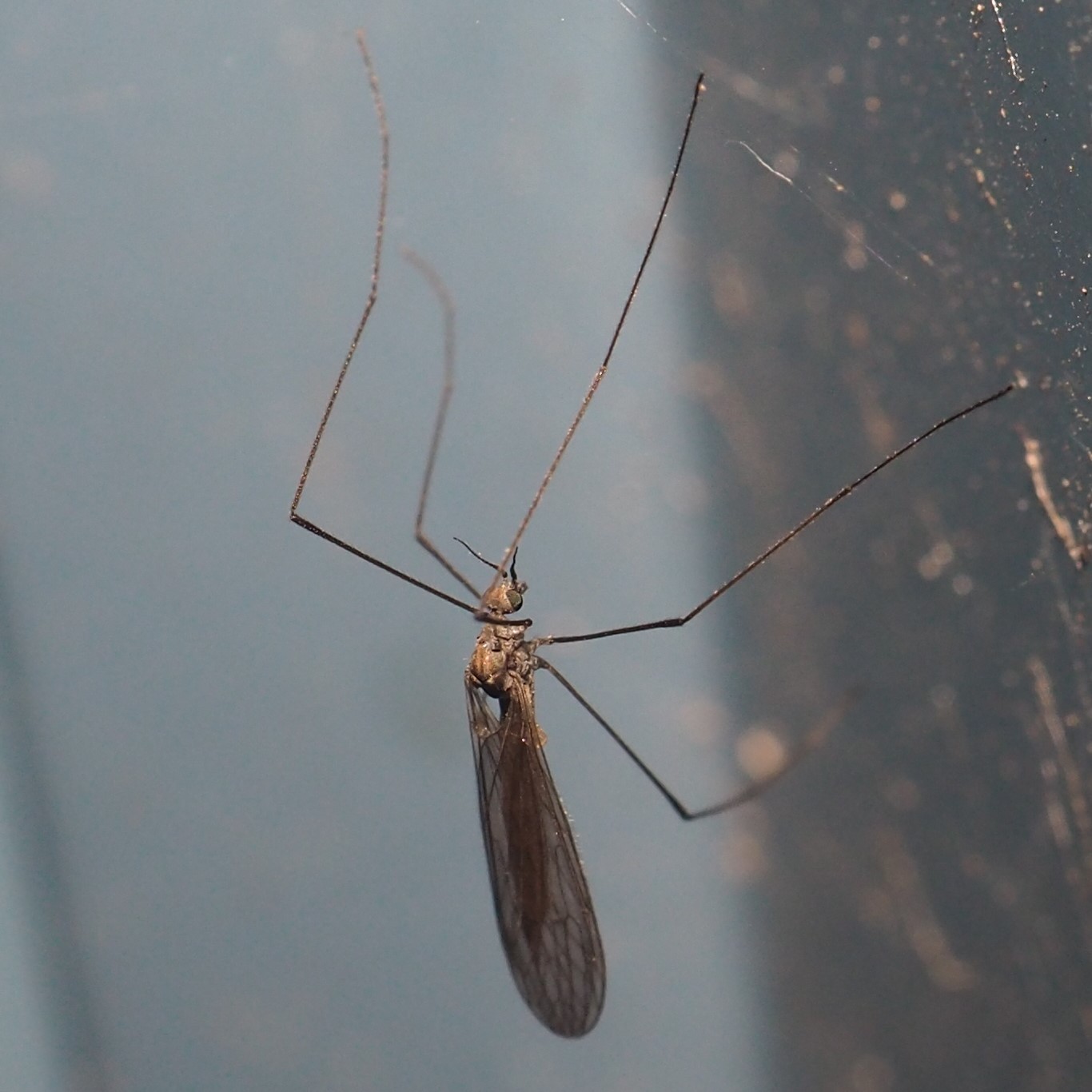
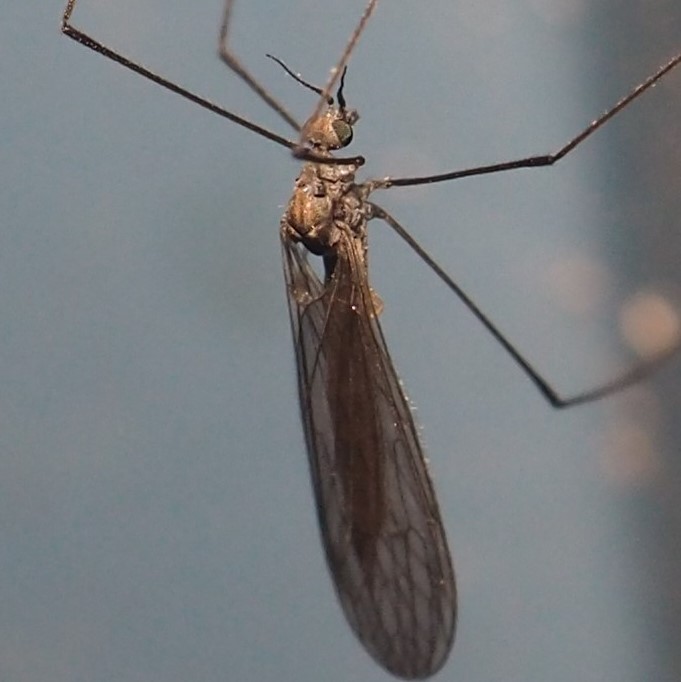
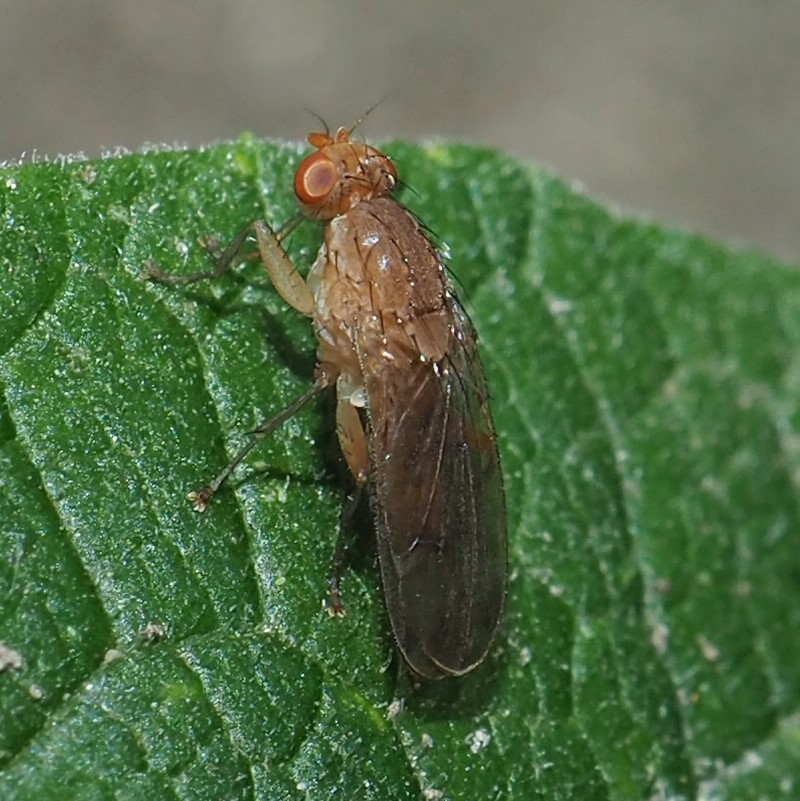
Here we have a Gall Midge; then a Midge or Fungus Gnat; then a real Mosquito, the Asian Bush Mosquito; and finally a mystery Mosquito.
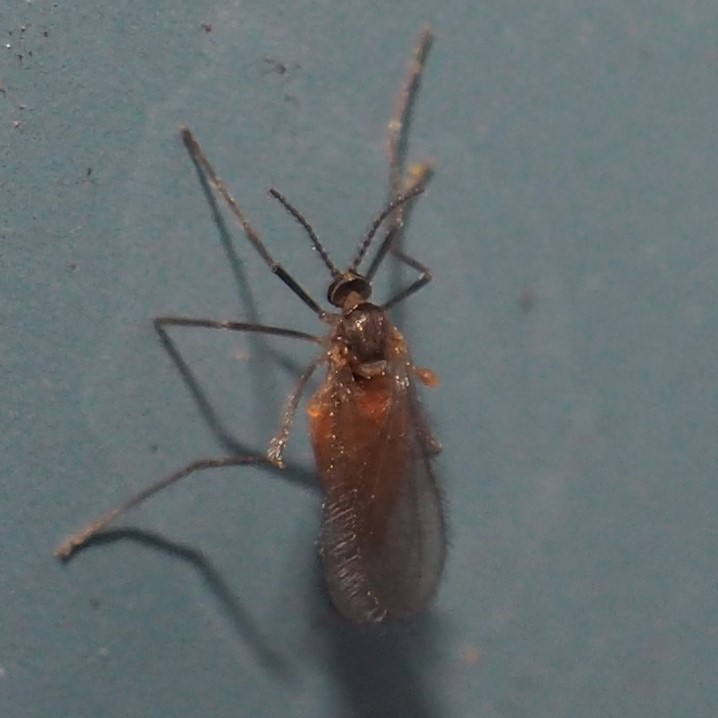
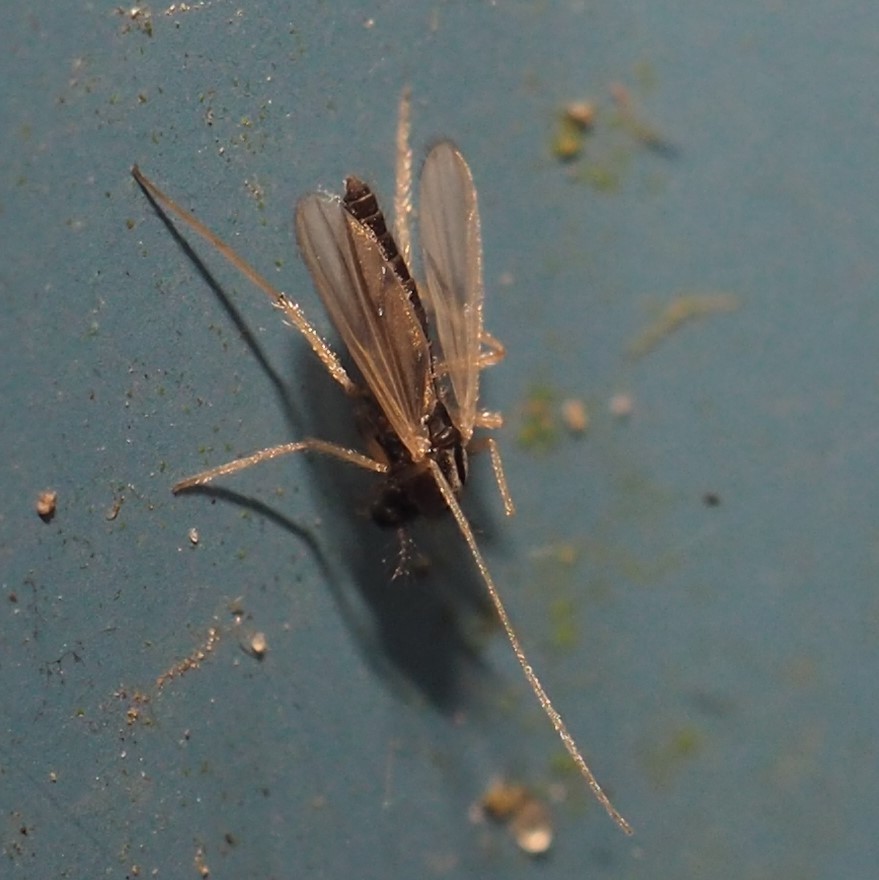
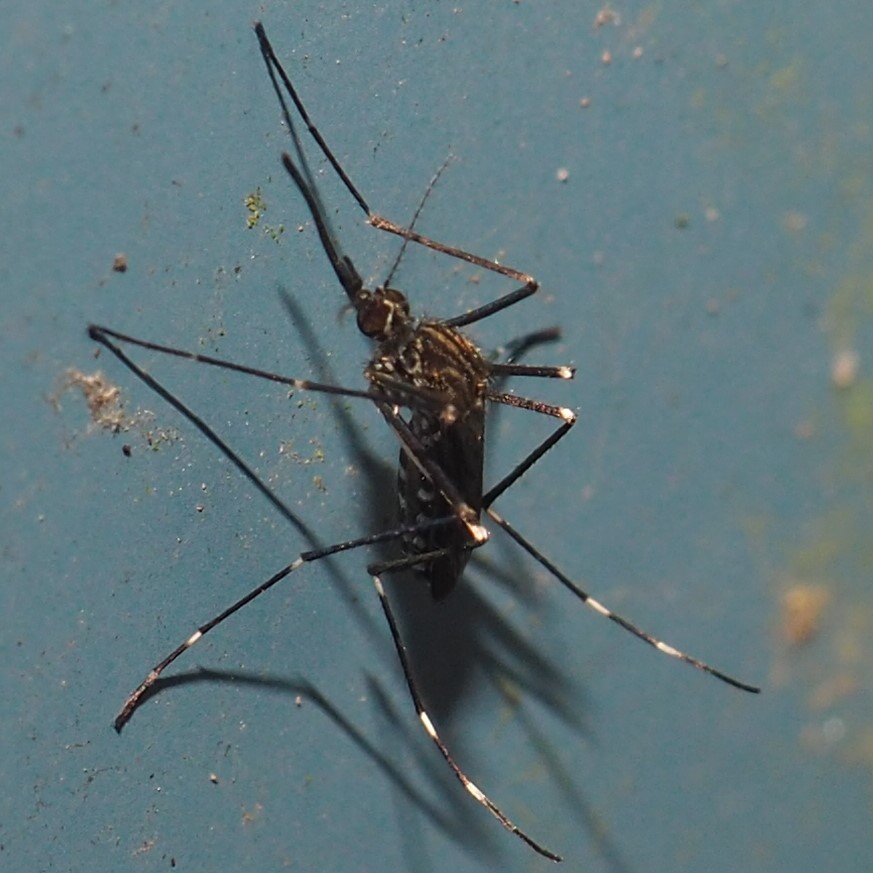 i
i
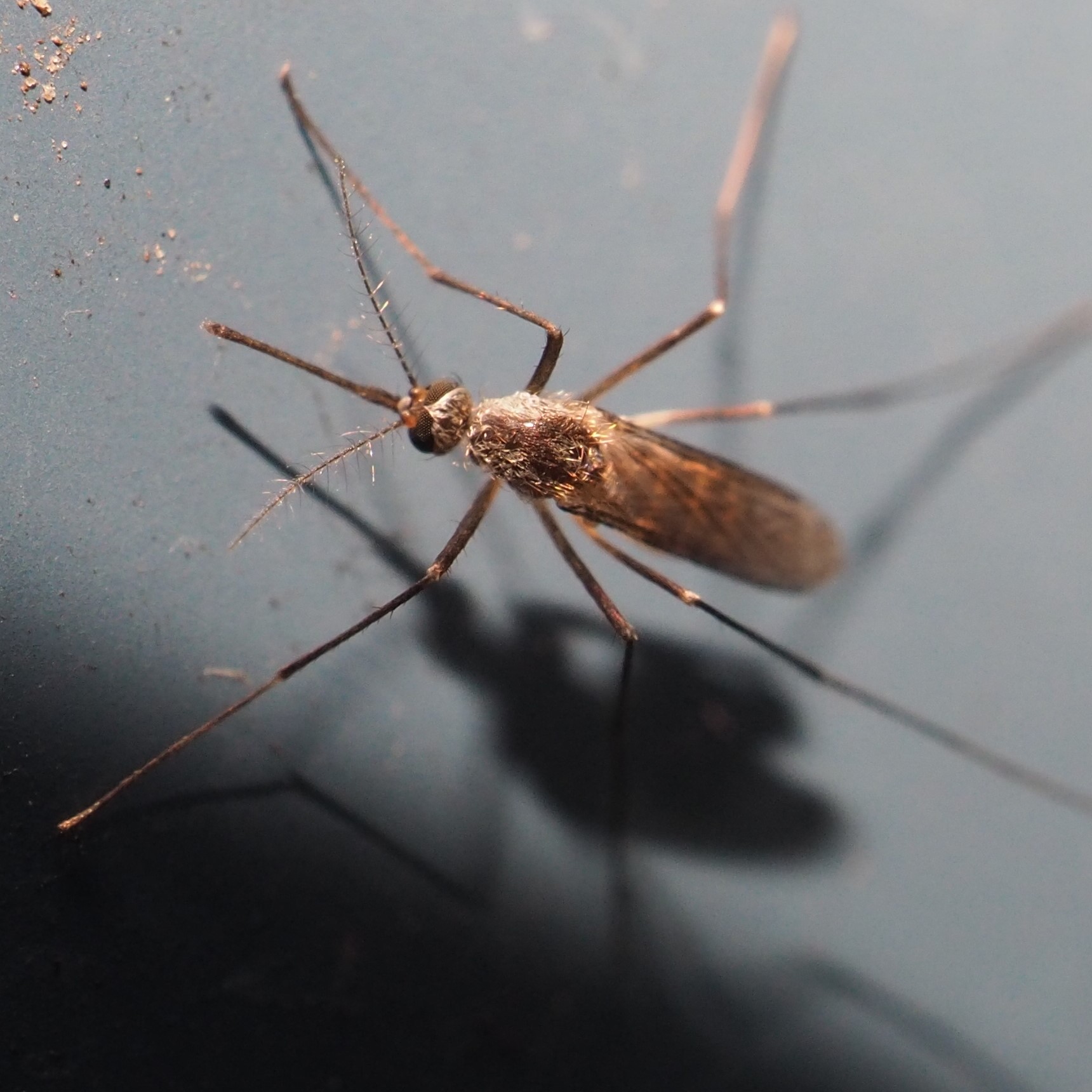
Here are some of the bigger Flies. I don't know the name for this first very common blue-black Fly. Second is a Moth Fly. Third is a Hover Fly, toxomerus geminatus, that was sitting in the reblooming Fleabane on the North Wall.
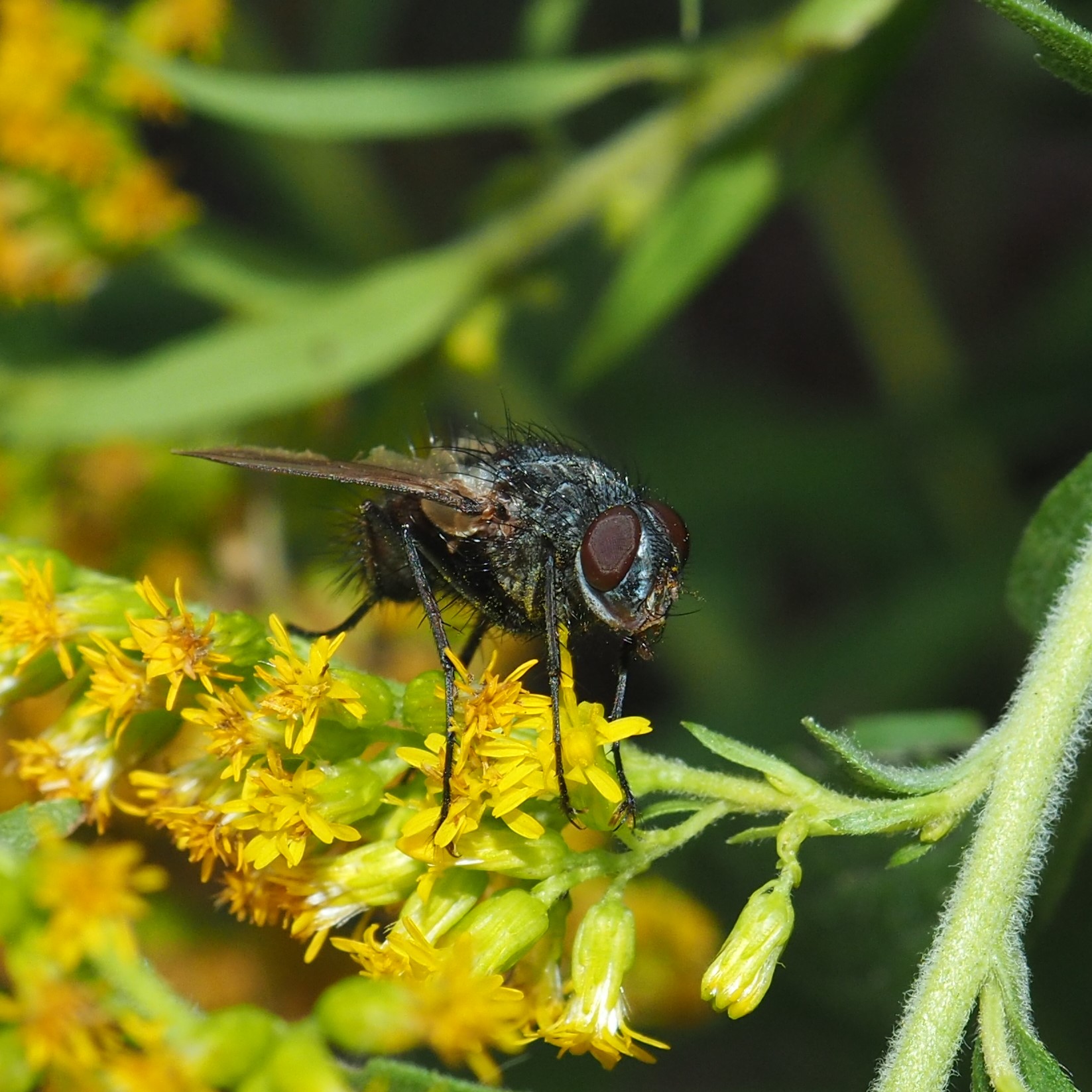
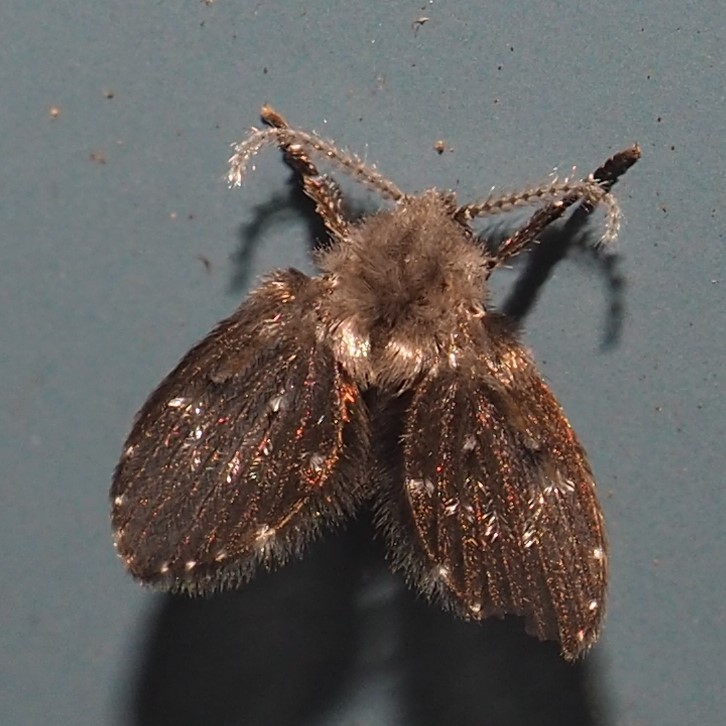
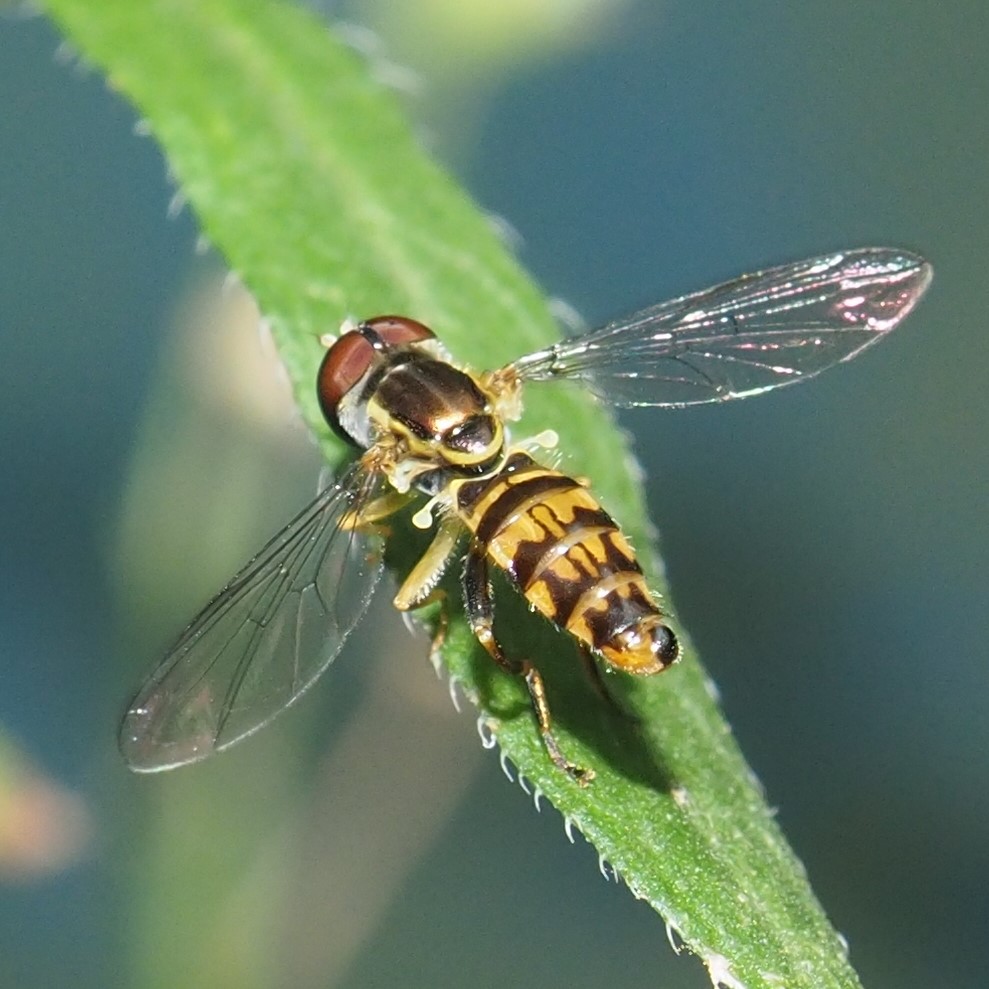
Wouldn't you like some Flower Time? Here are the Phlox reblooming with a sprig of goldenrod to frame it. The last stand of those gorgeous Trumpetvine trumpets. And the Climbing Fumitory vine. A few days ago I noticed that the whole plant had been cut off from the ground. I took the few remaining flowers and put them into a box to mature. Yesterday I harvested the seeds from the flowers - about 3 dozen seeds. I'm supposed to leave them outside but the person who suggested that also said that if I left them out in the wood shop, which is heated only to 40 degrees F unless I've working out there, and then pop them into the freezer, they might feel like germinating in the spring.
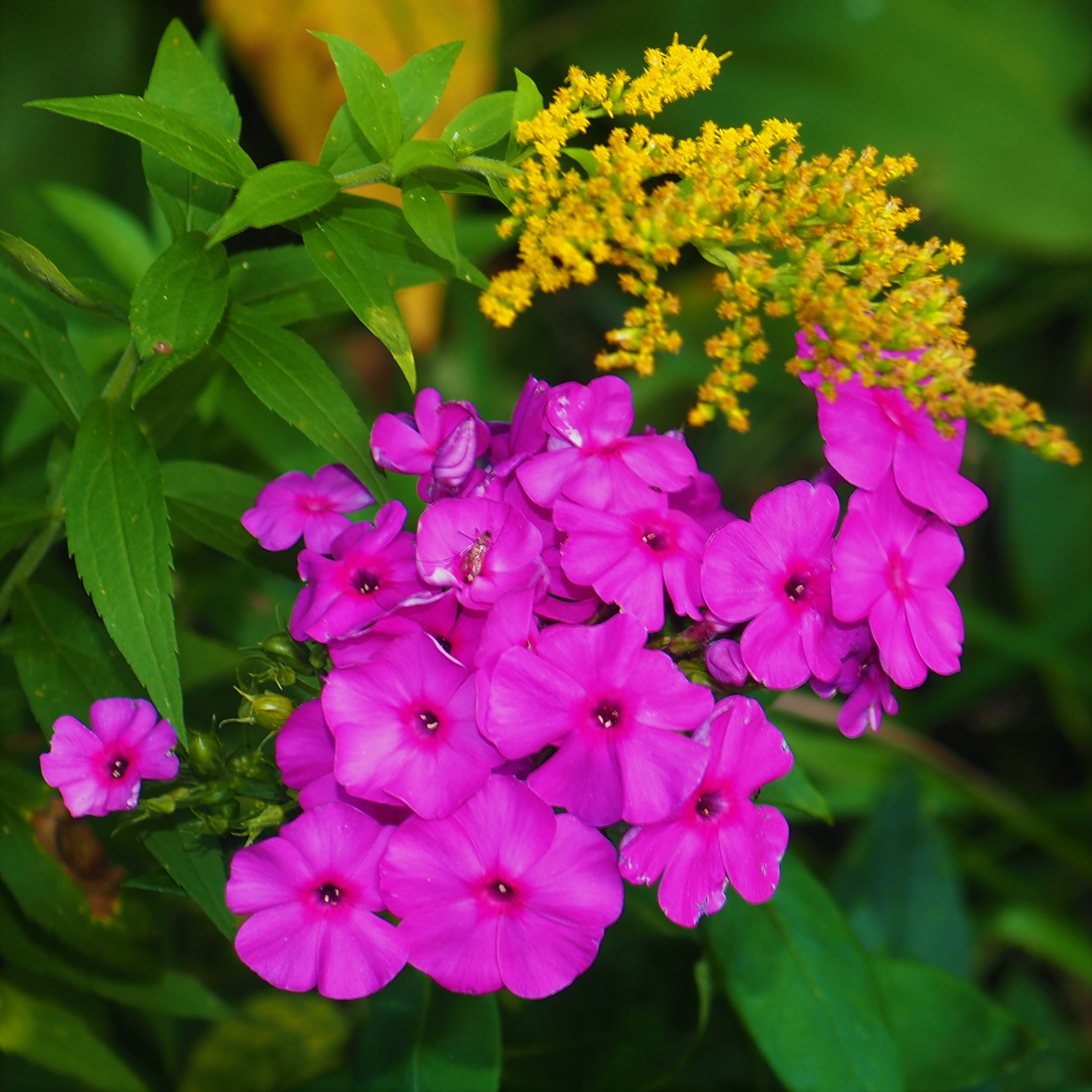
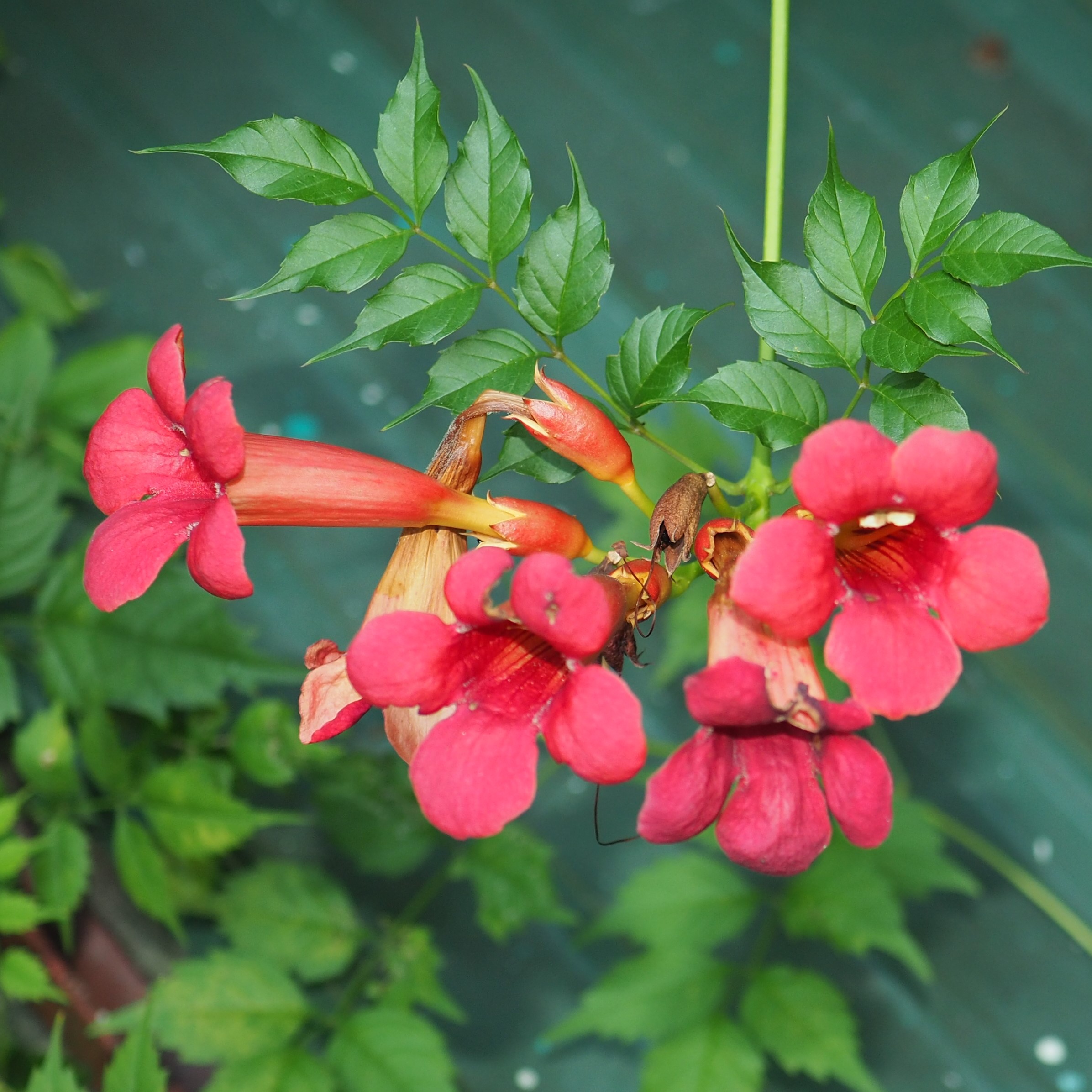
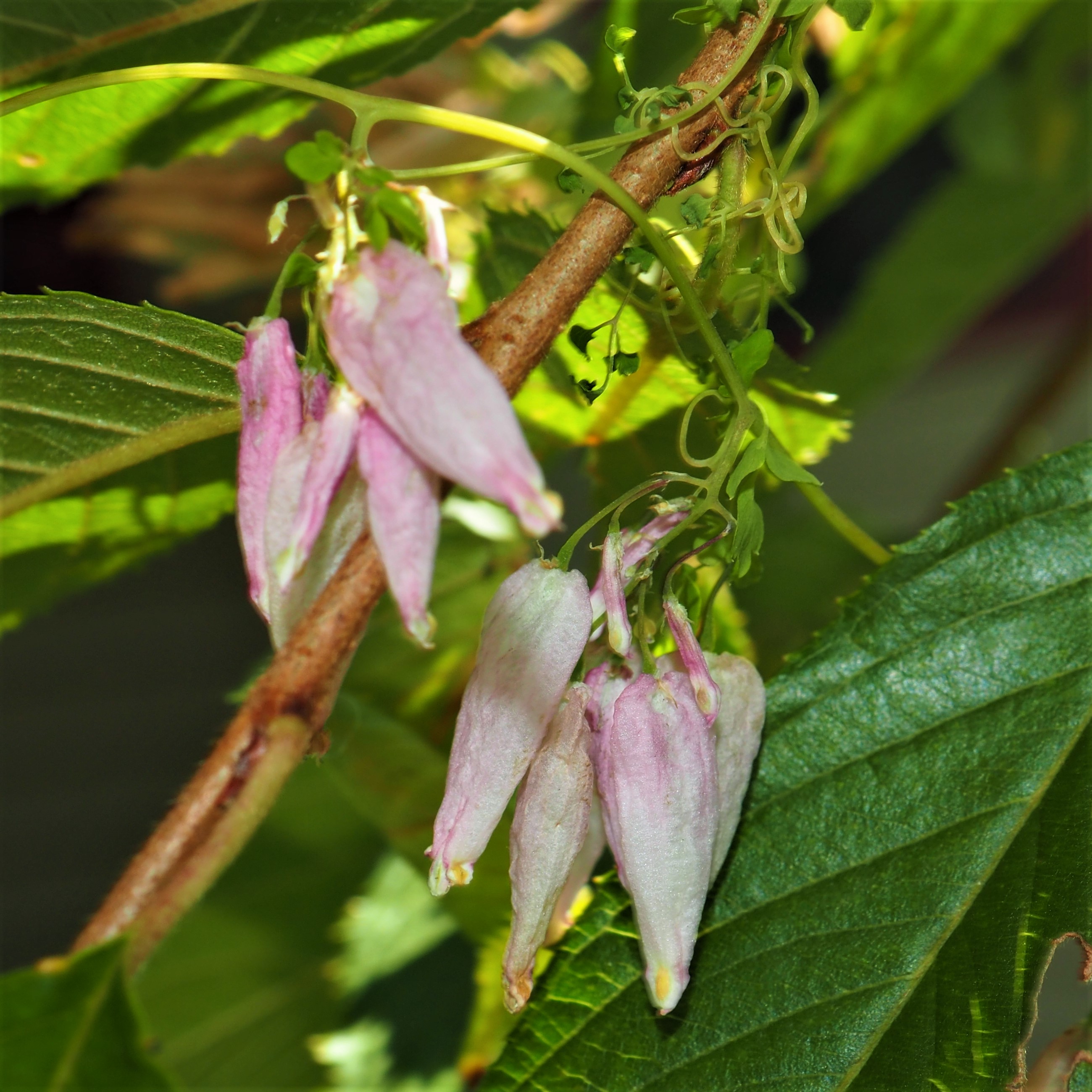
Continuing around the yard, here is the only Water Lily to be seen before months. The Japanese Anemones are peaking - what a show they've made this year. The next is a natural still life - both purple and powdery-pink Asters
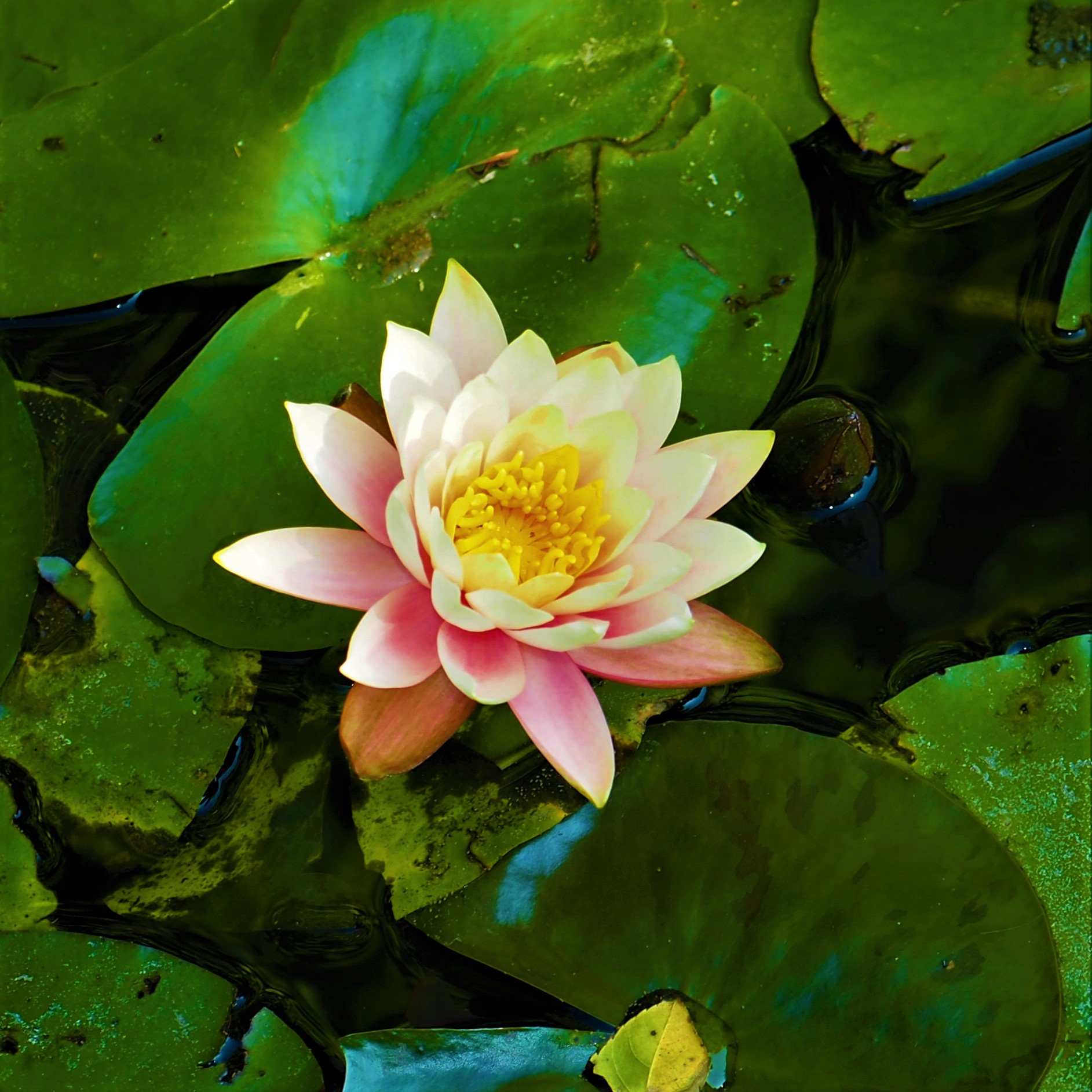
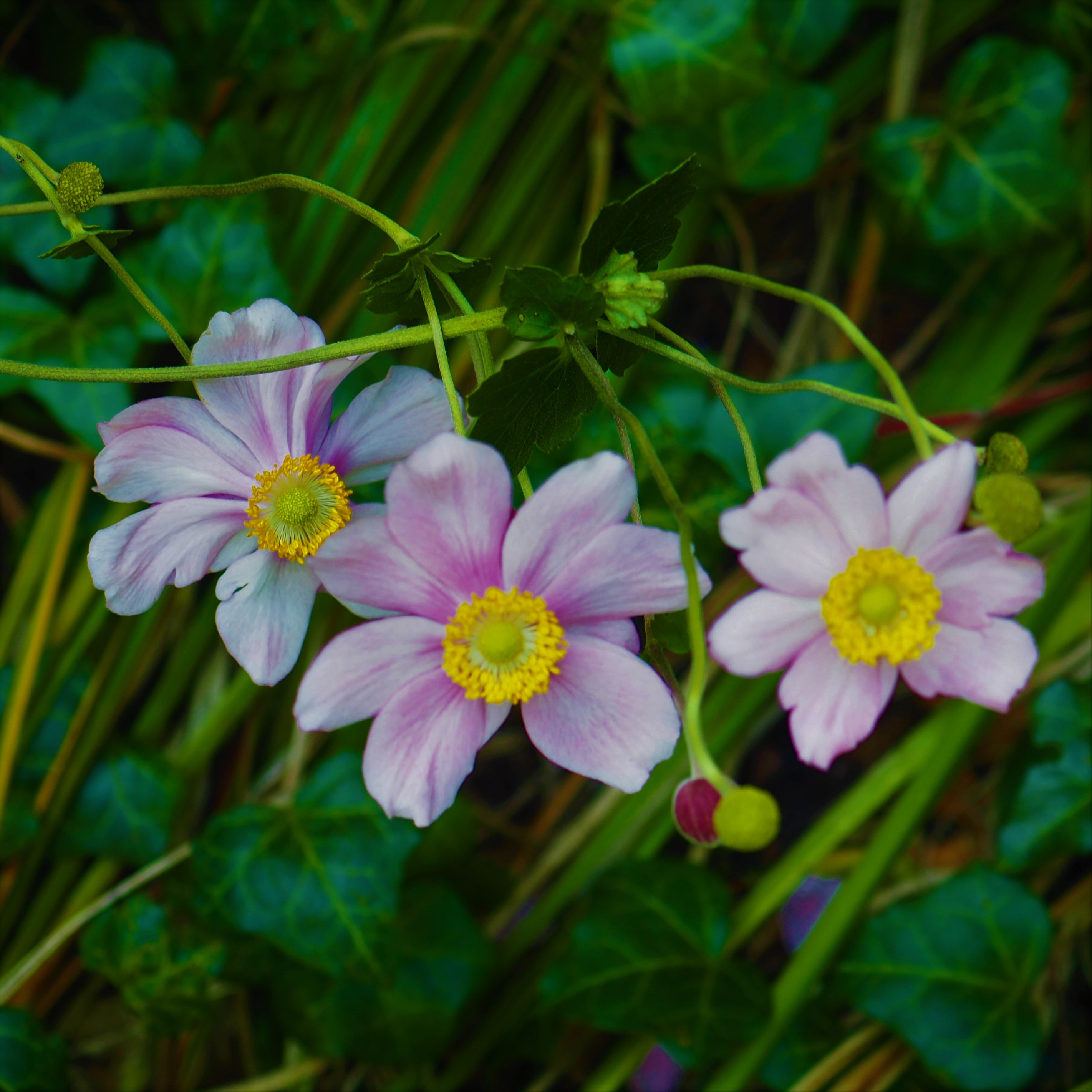
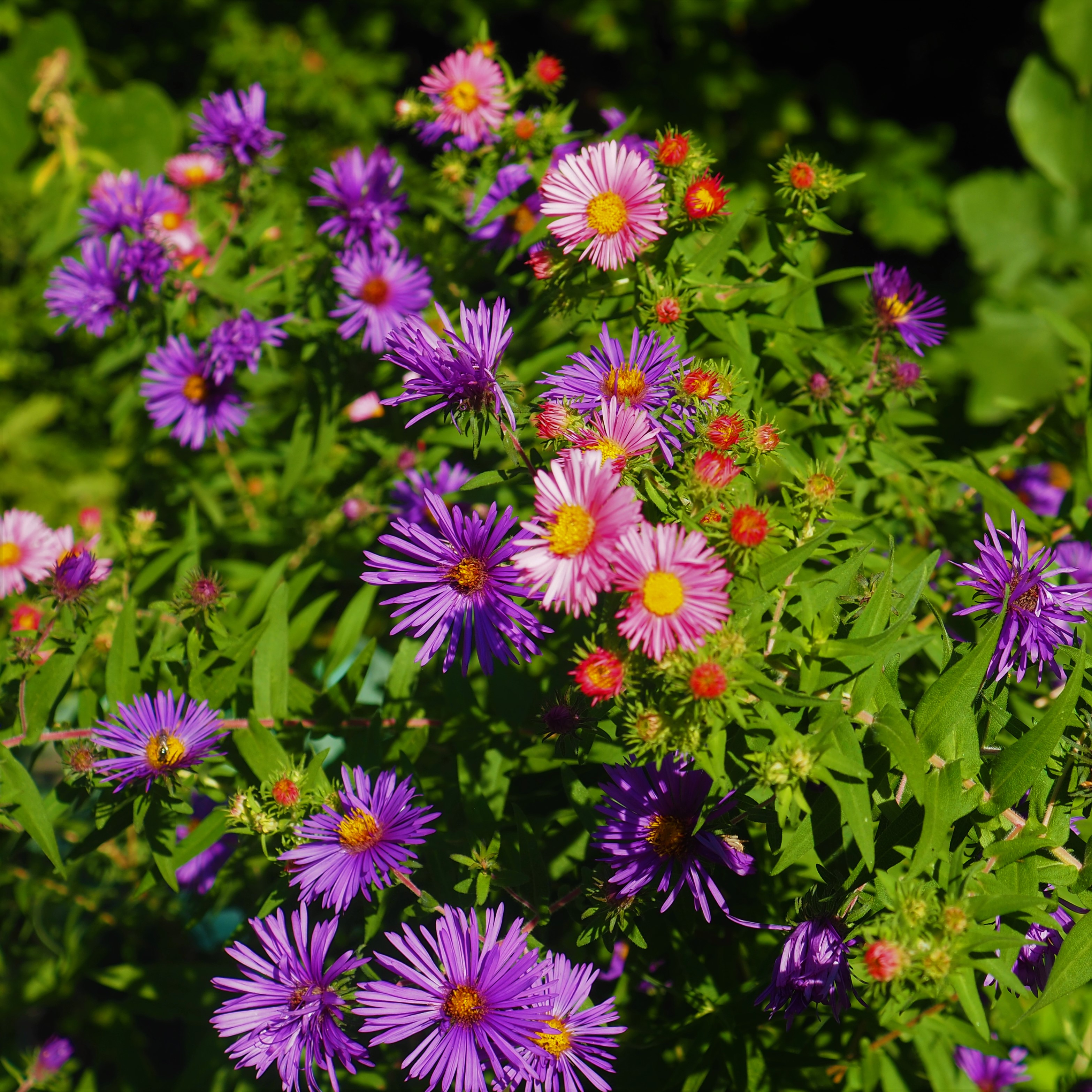
The Colchicums you may have forgotten. They send up long and wide green leaves in the spring, then go back to earth for a long nap. Then in the fall they send up their flowers. These flowers are quite floppy but very delicate and ethereally colored. In some lights, they seem pink and in others lavender. First is one with a honey bee. Second is a lightly purpled set. Third is one from the front - it was called something like "waterfall".
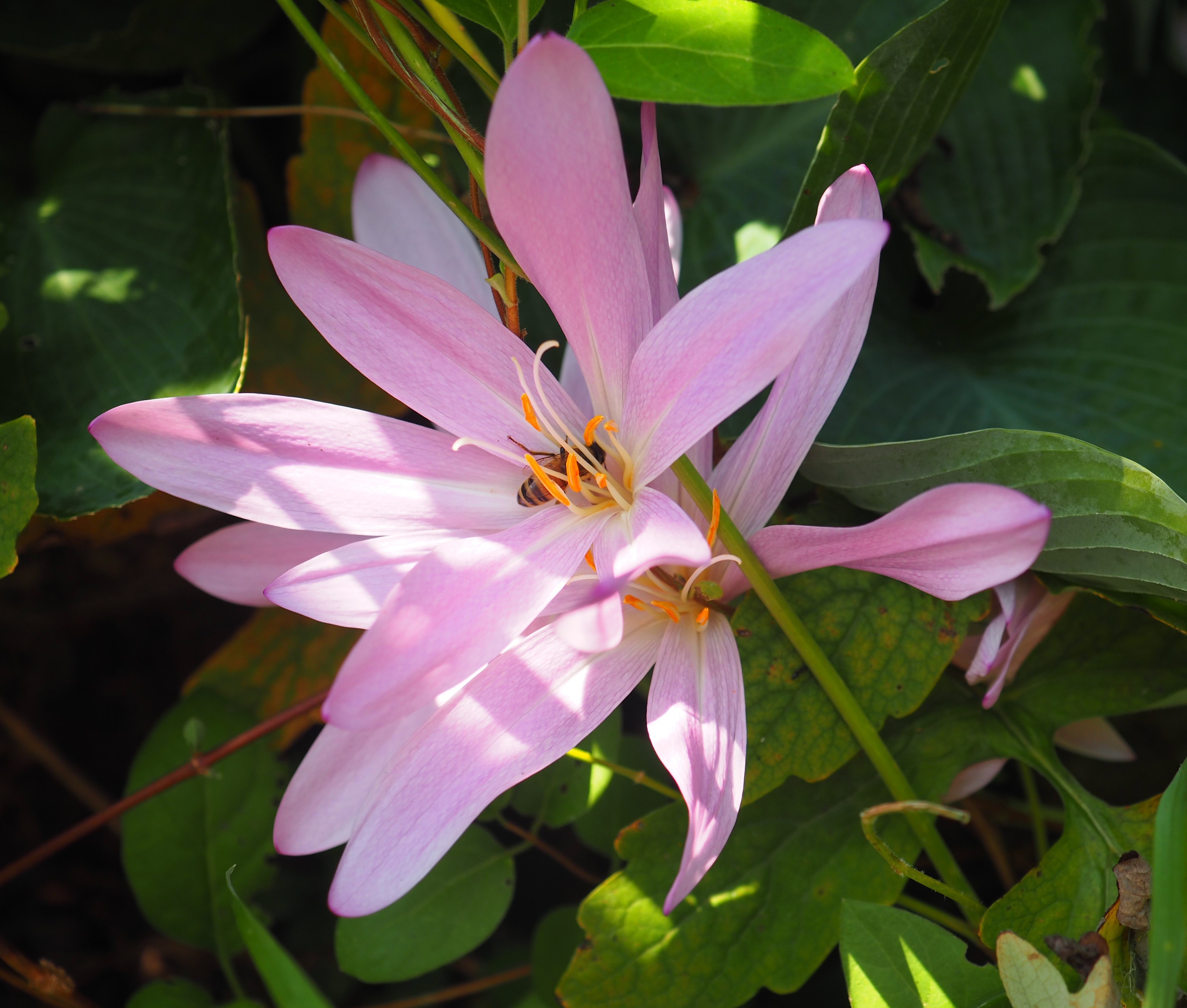
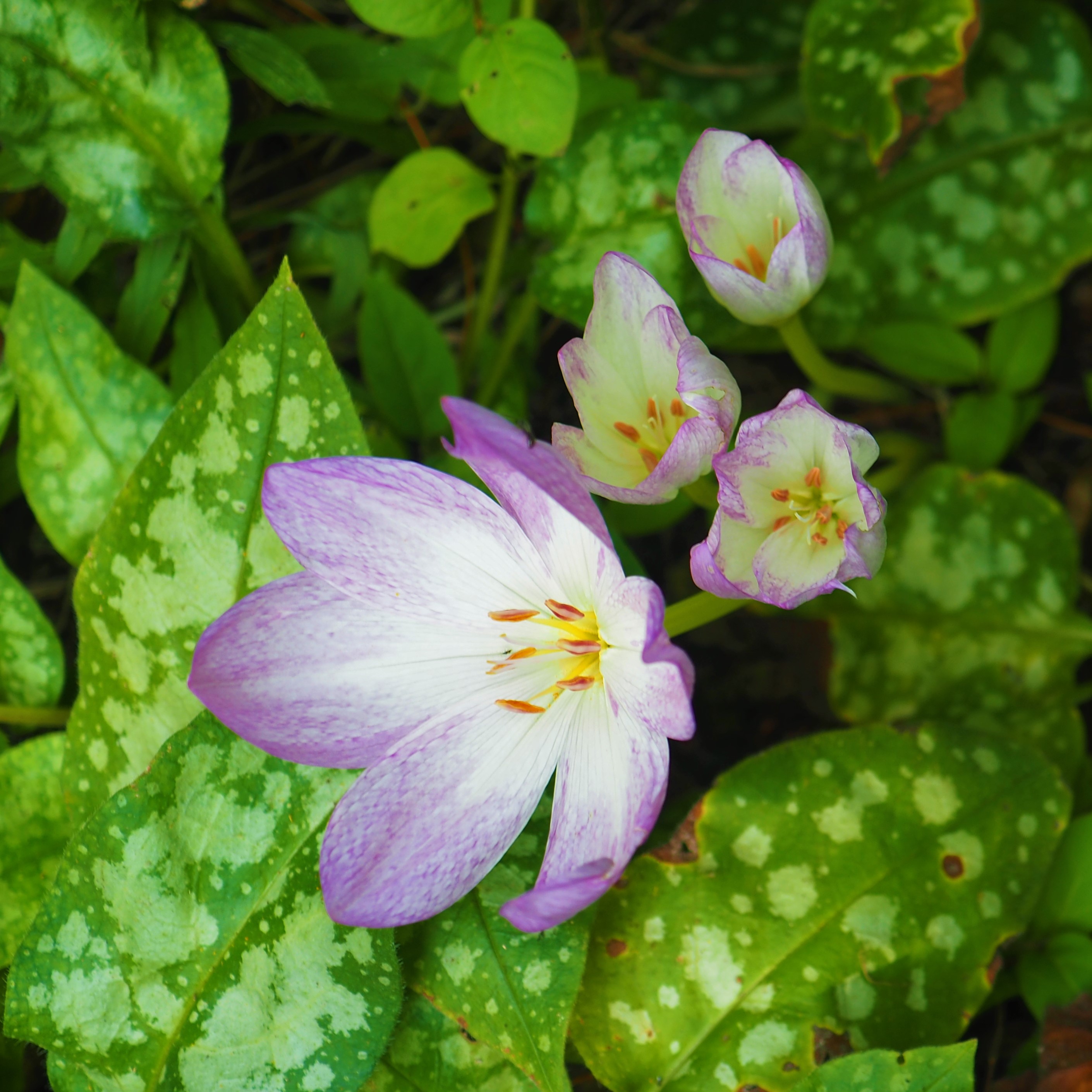

Here are a few mysterious-looking creatures. First is a descendant of the Millipedes called Polyxenus. They can move very quickly. Second is SOMETHING that had attached itself to the South Wall. Third seemed to be a kind of Gall attached to a Redbud leaf by a long pole, but the word from iNat was "a seed of some sort". Does anyone here know of such a seed?
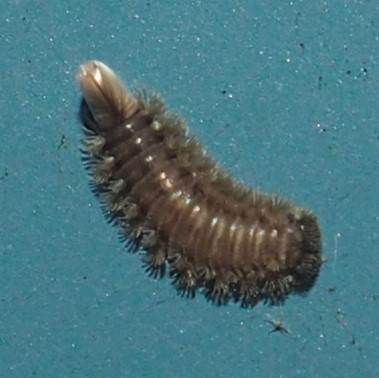
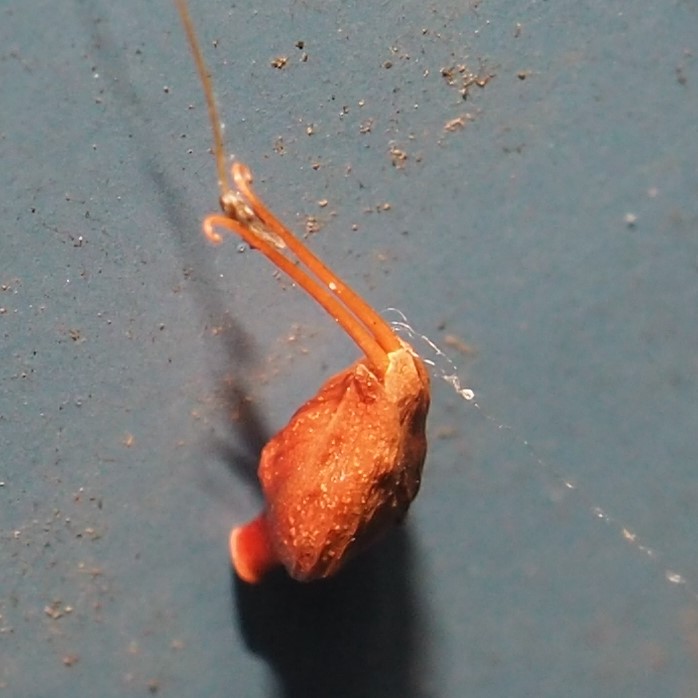
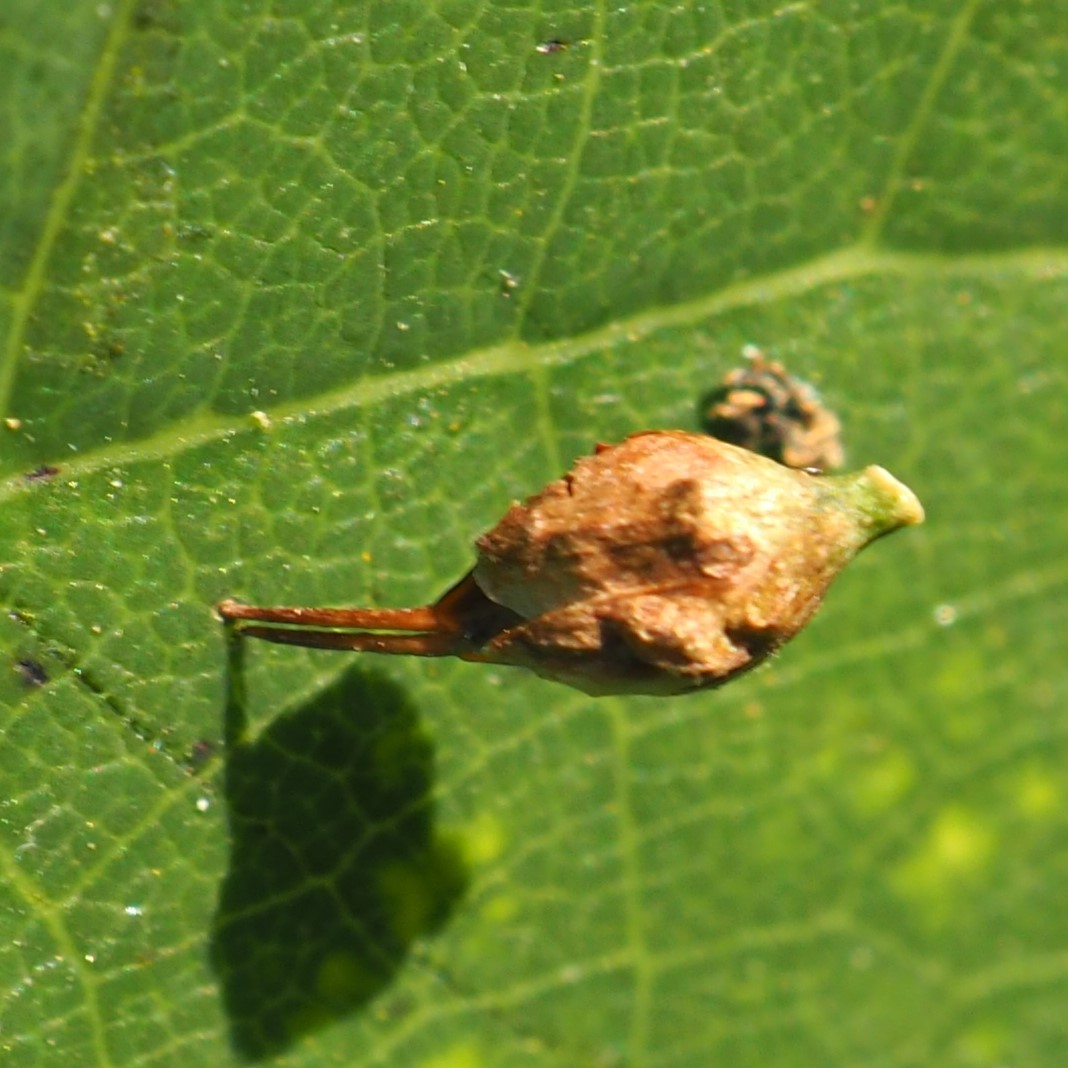
Let's check out the Spiders. They were much more interesting this week. In other words, they weren't all Cobweb Spiders. First is a Broad-Faced Sac Spider. Next, a Triangular Combfoot Spider. And third, a Tan Orbweaver.

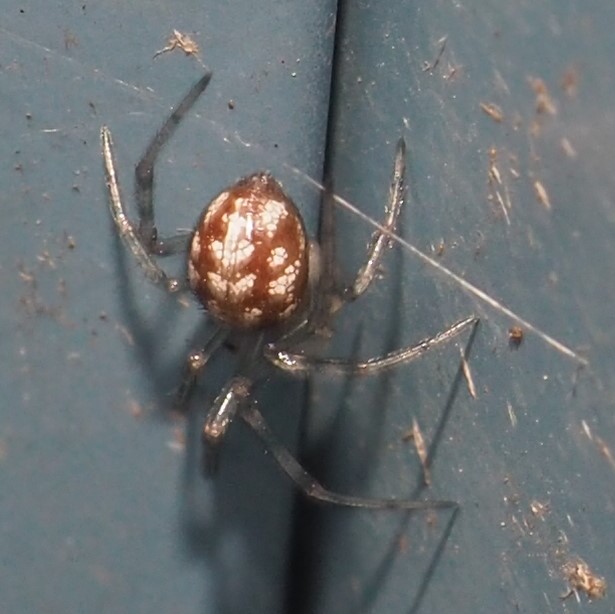
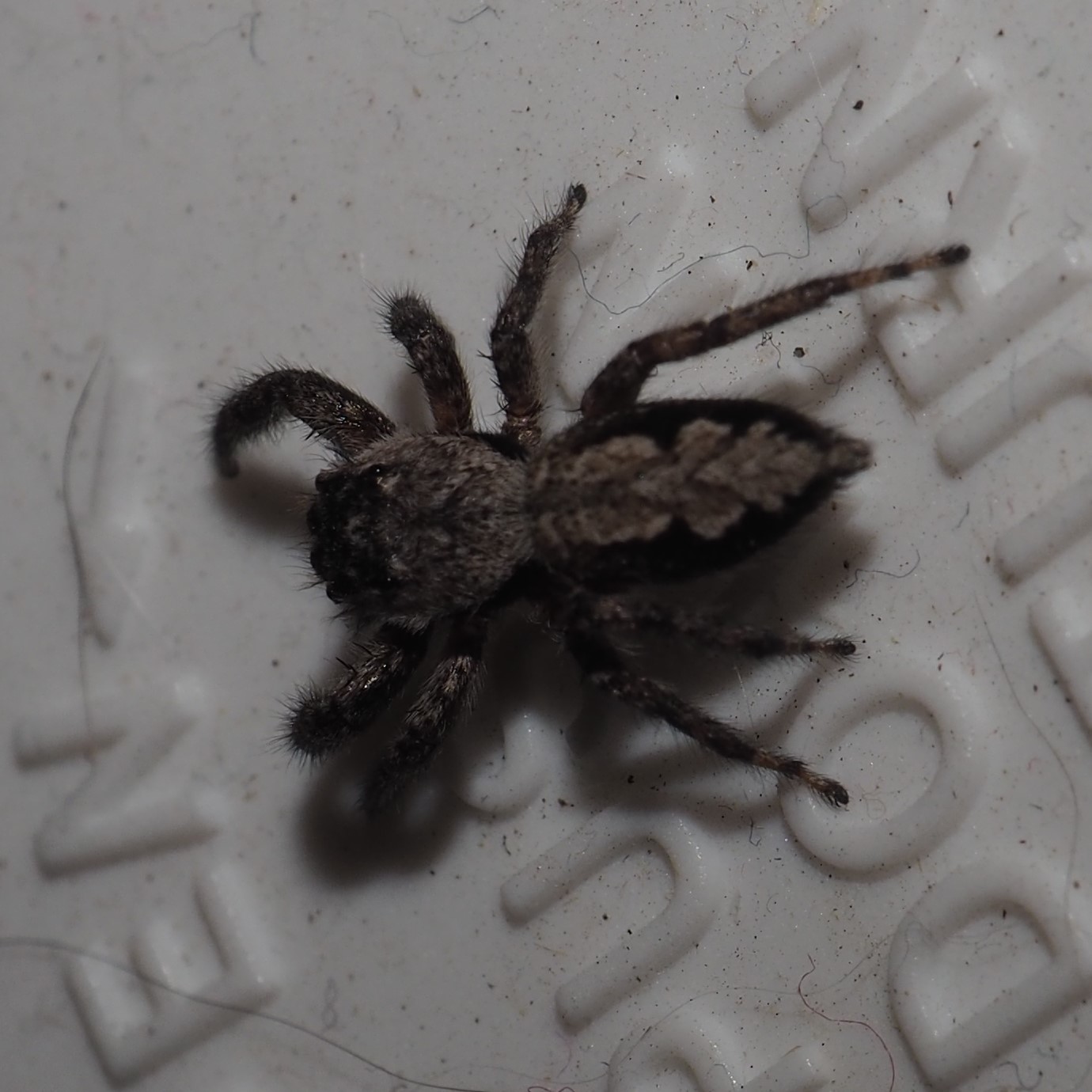
Here are some of the usual suspects: A Common House Spider, a typical Cobweb Spider, and a little Crab Spider in the goldenrod.
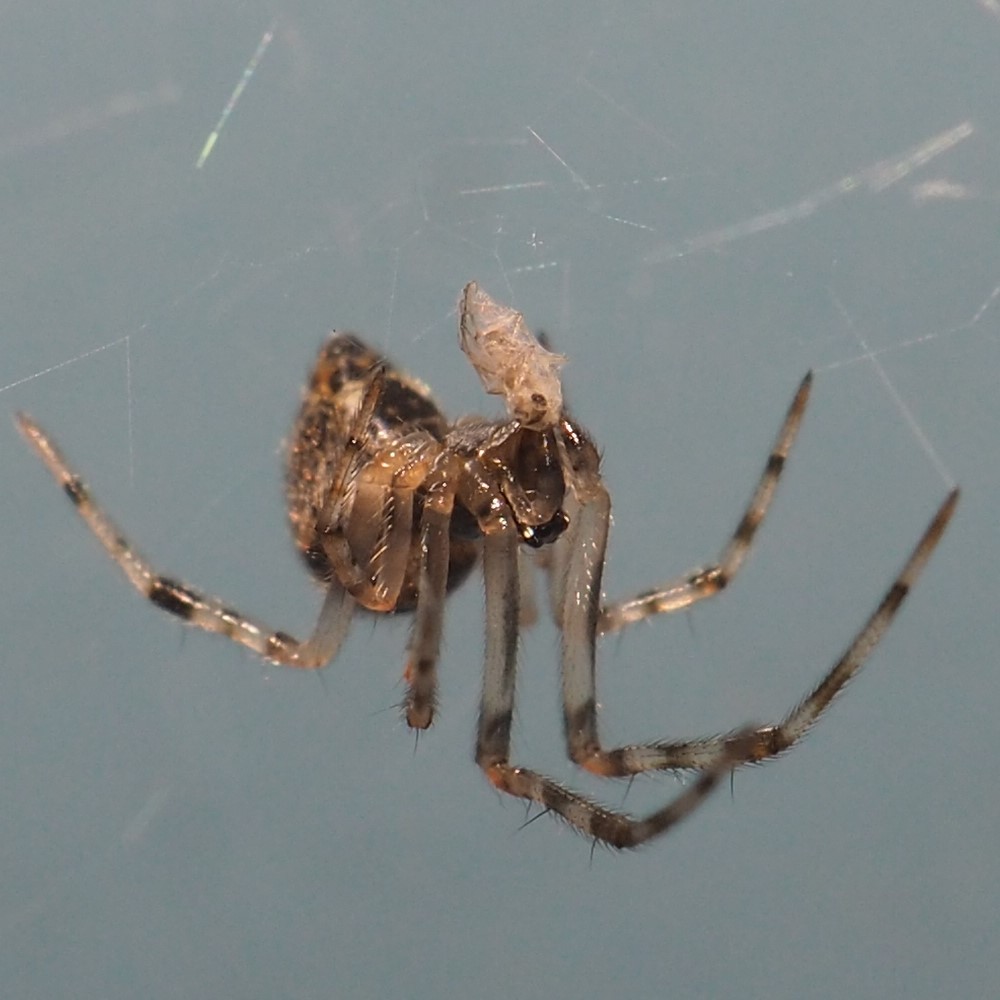
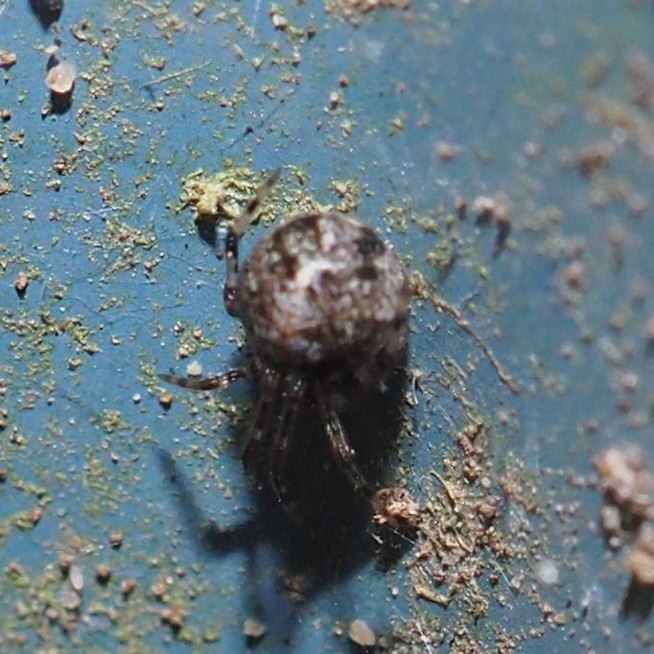
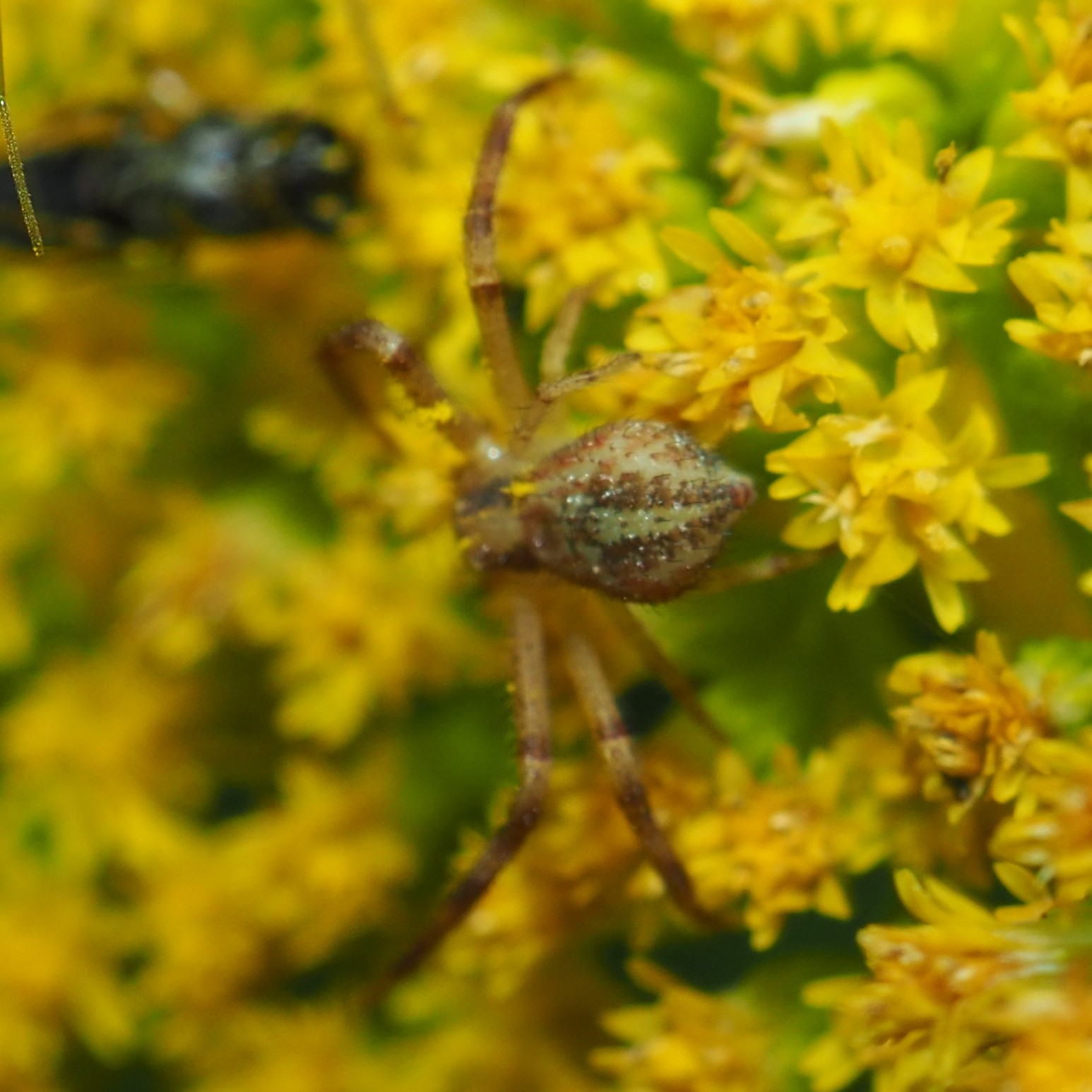
As usual since the Goldenrod came into bloom, the Wasps have been the most exciting element of the yard. Here is Ancistrocerus adiabatus.
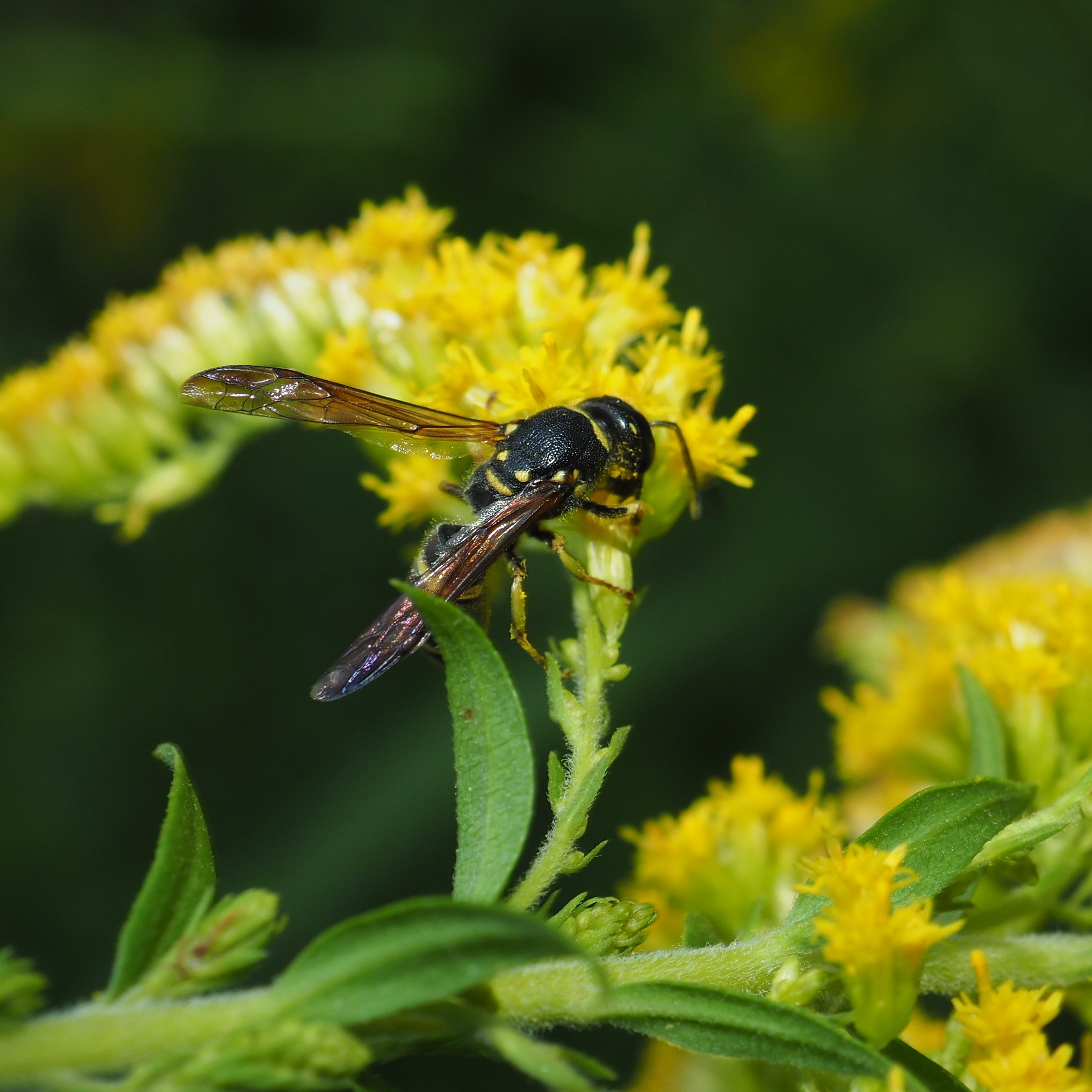
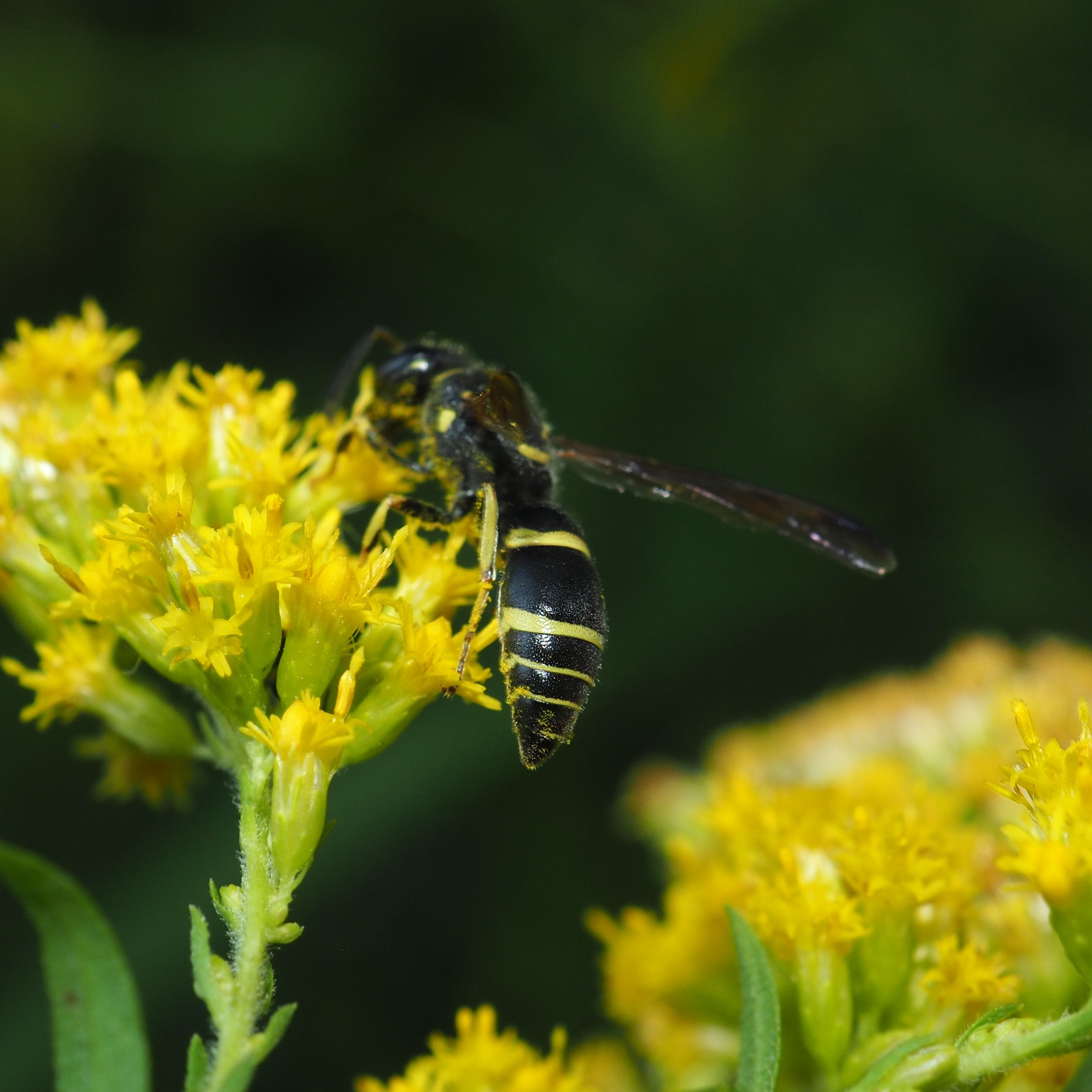
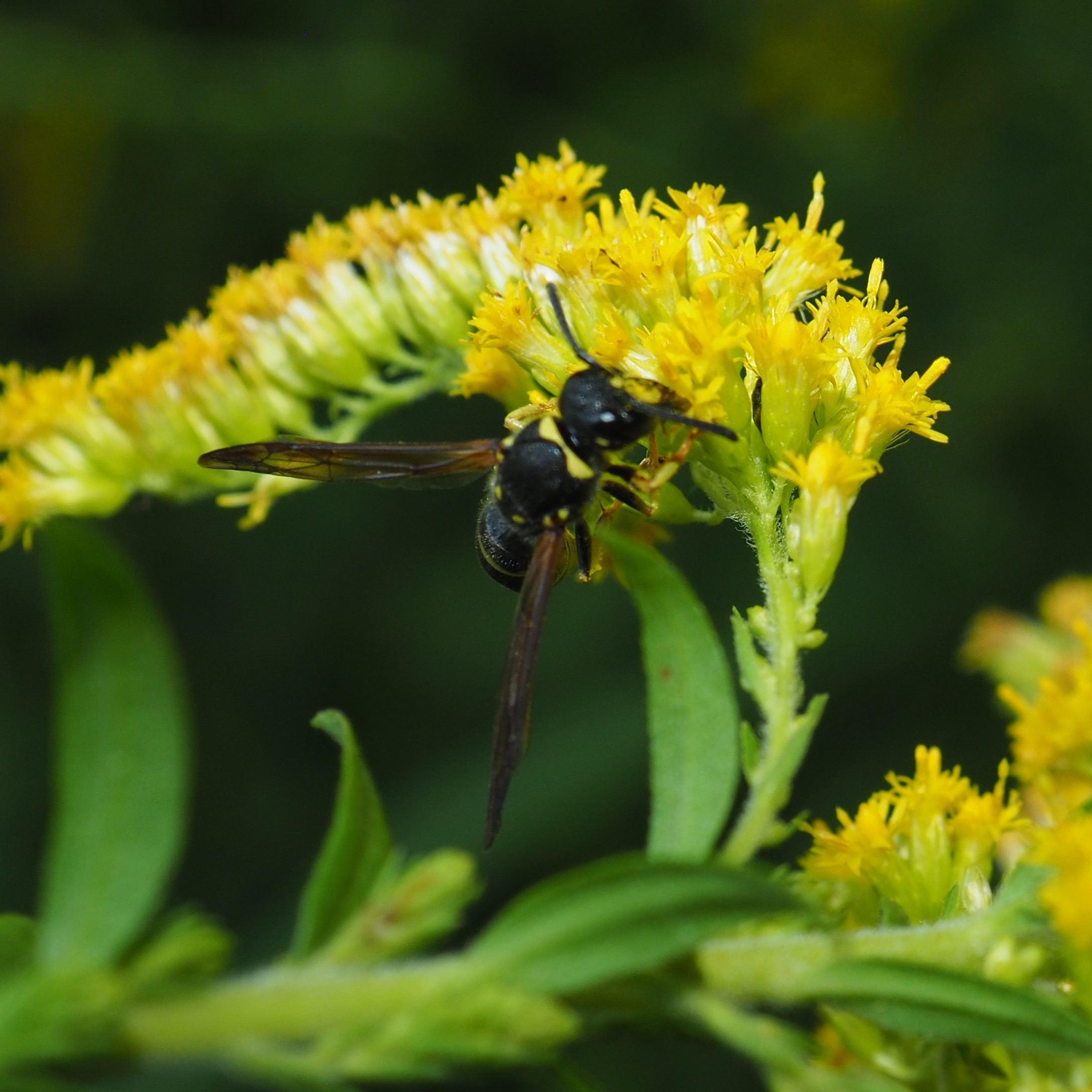
Ancistrocerus campestris is another member of the same genus. It, like A. adiabatus, has a happy face on its back. Pictures 3 and 4 are of one of the genus Cerceris.
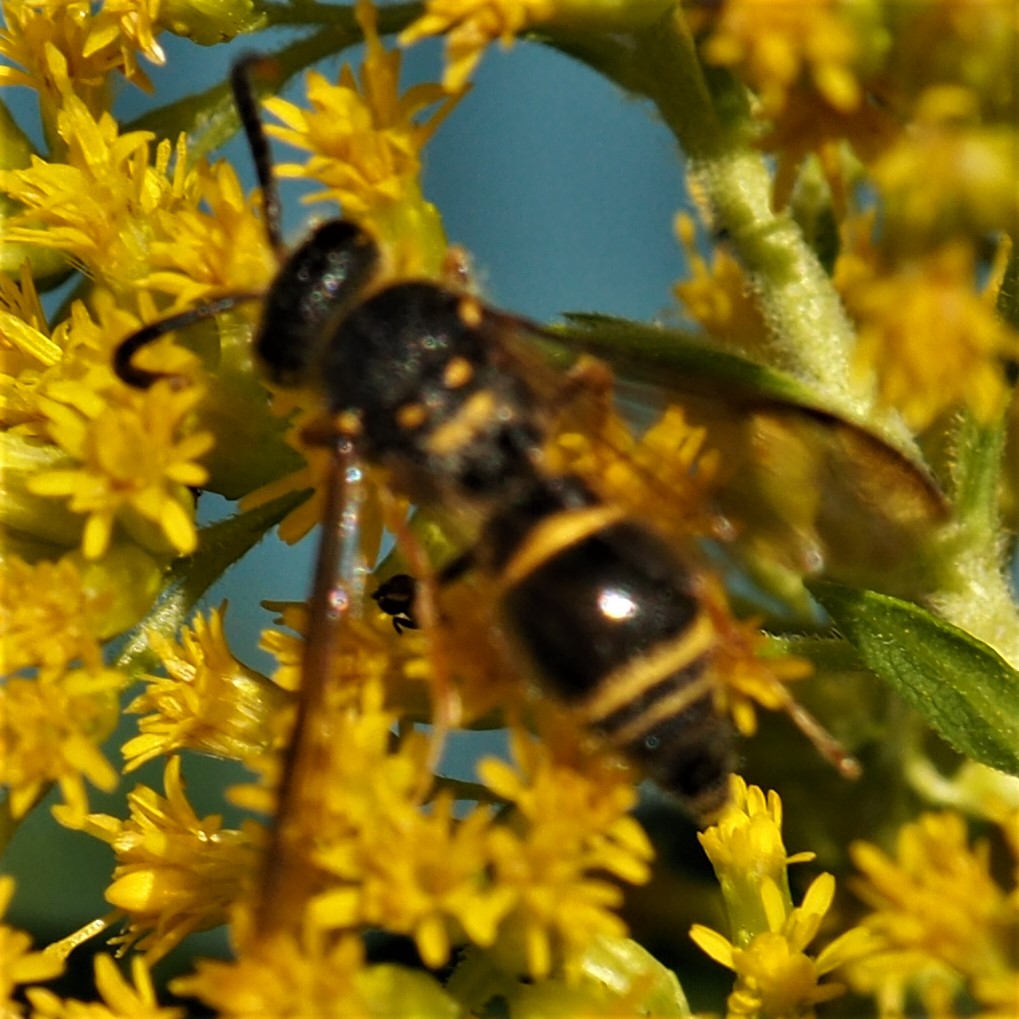
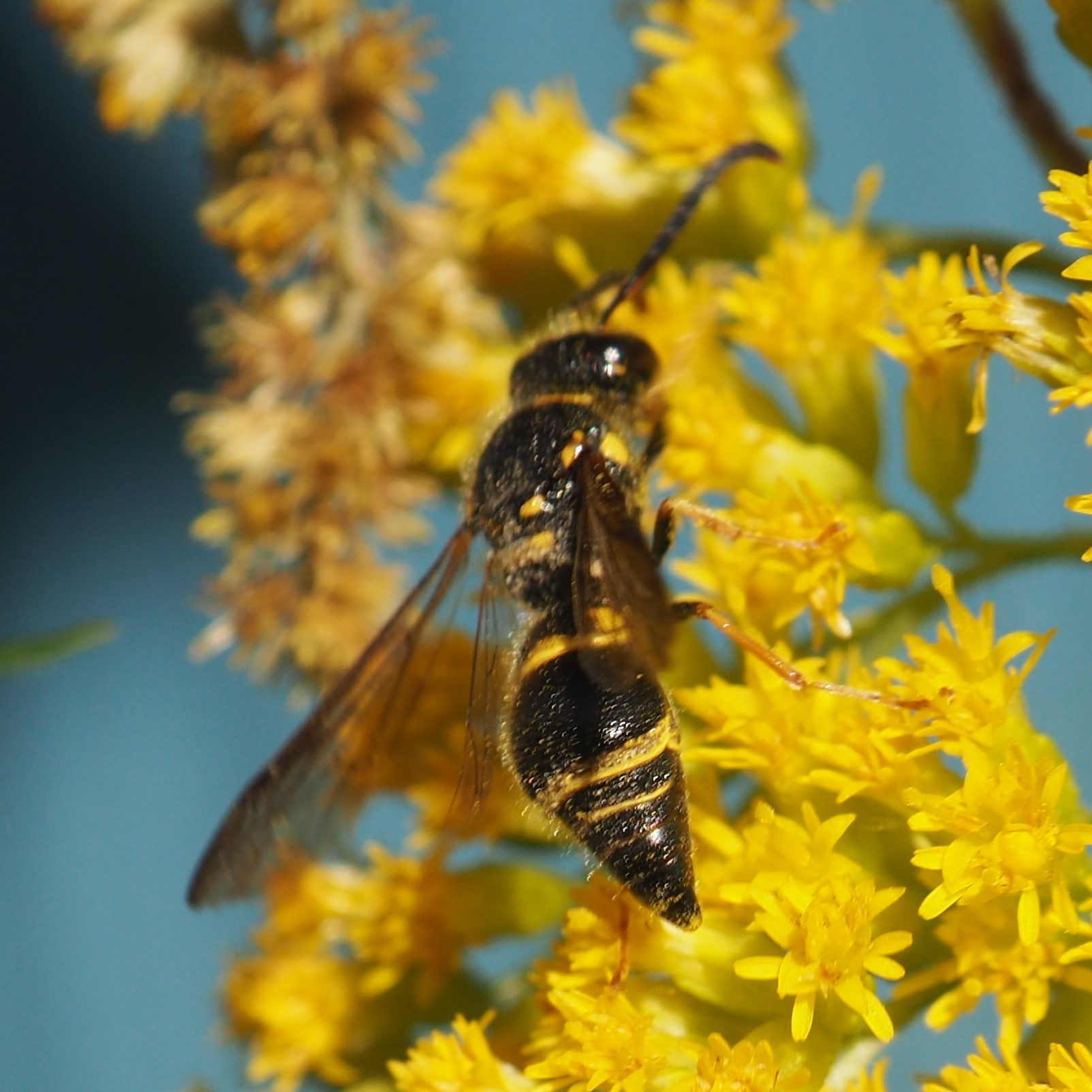
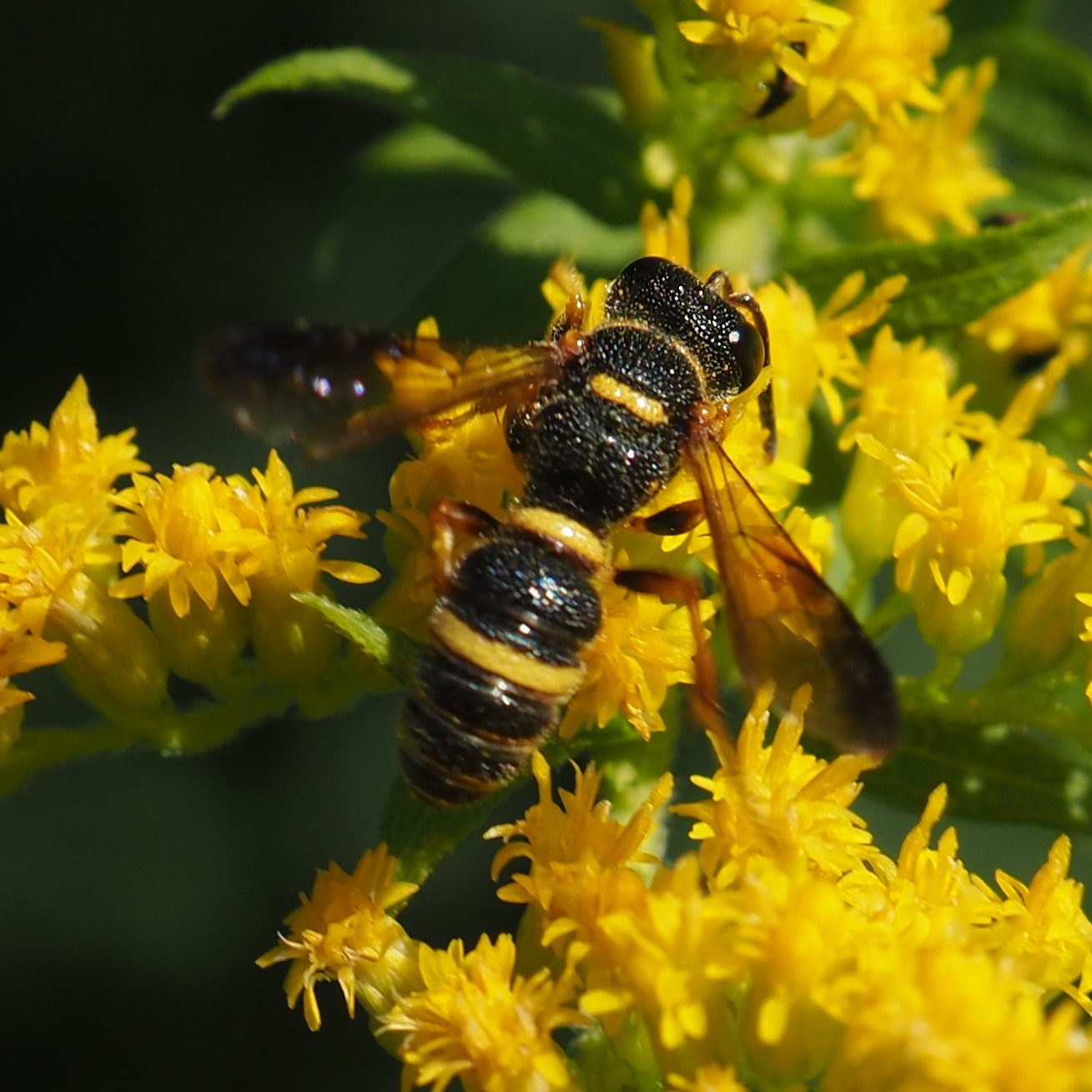
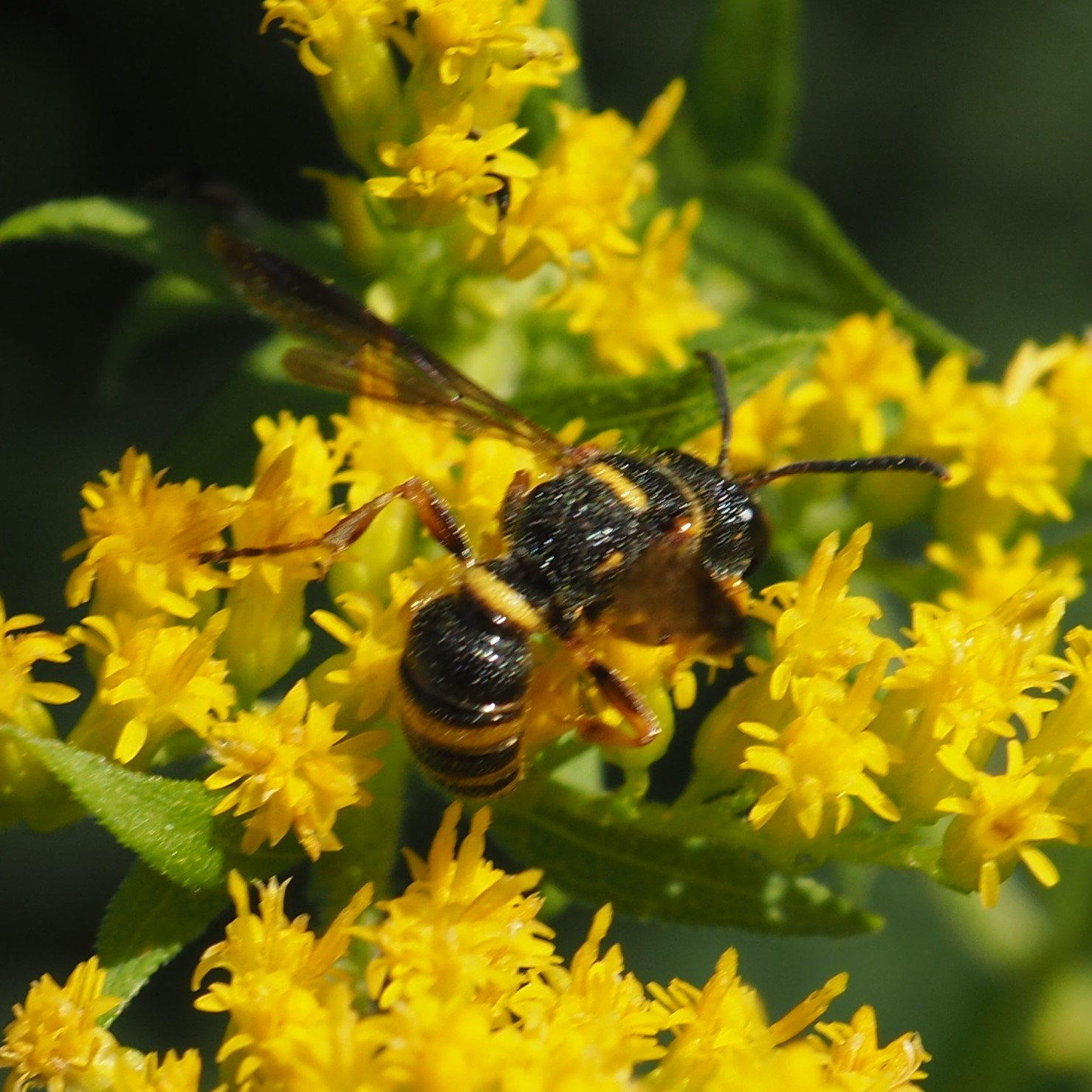
Images 1 and 2 are of a wasp in the genus Ectemnius. You can tell because the bands on its abdomen don't meet at the top. Number 3 is one of the Grass-Carrying Wasps.
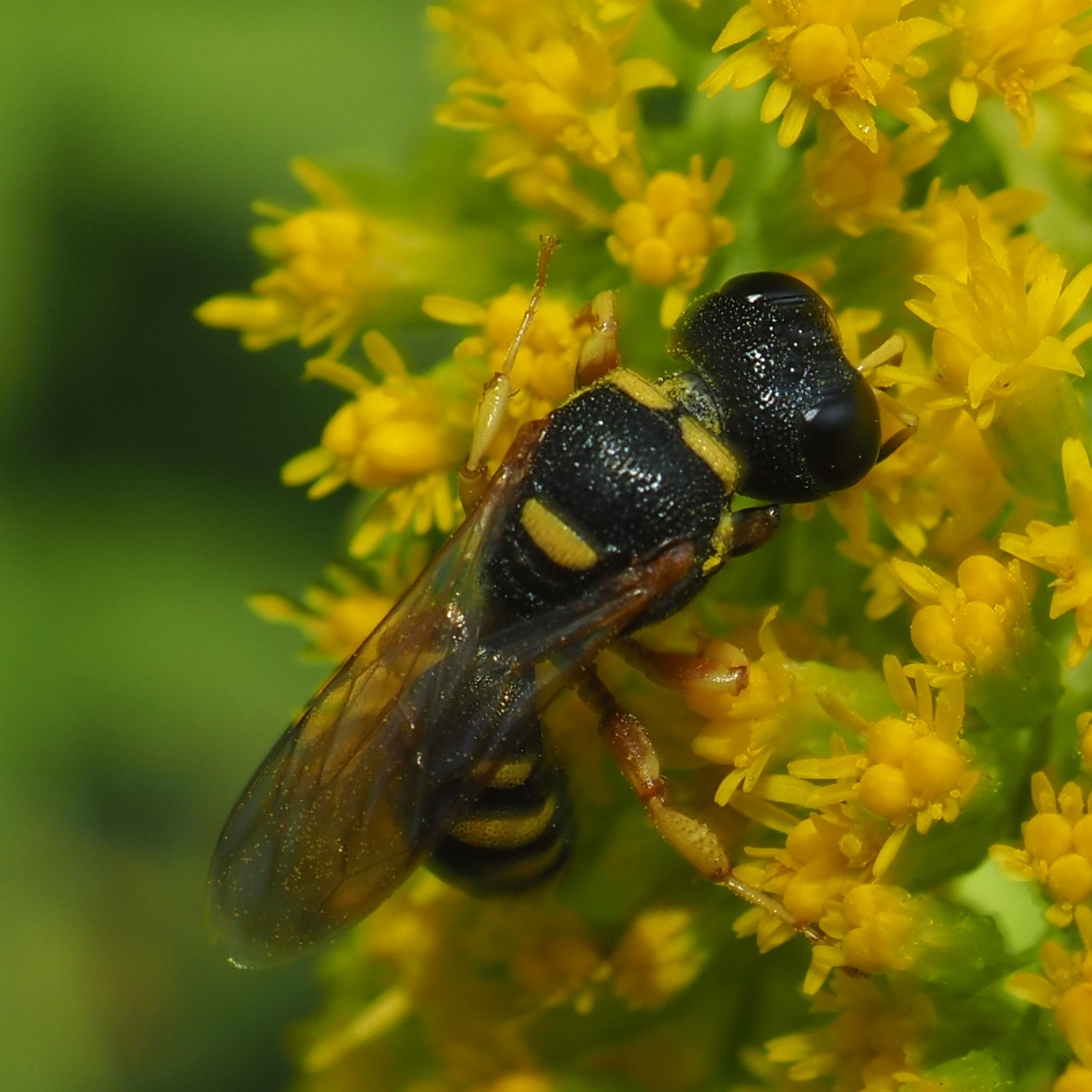
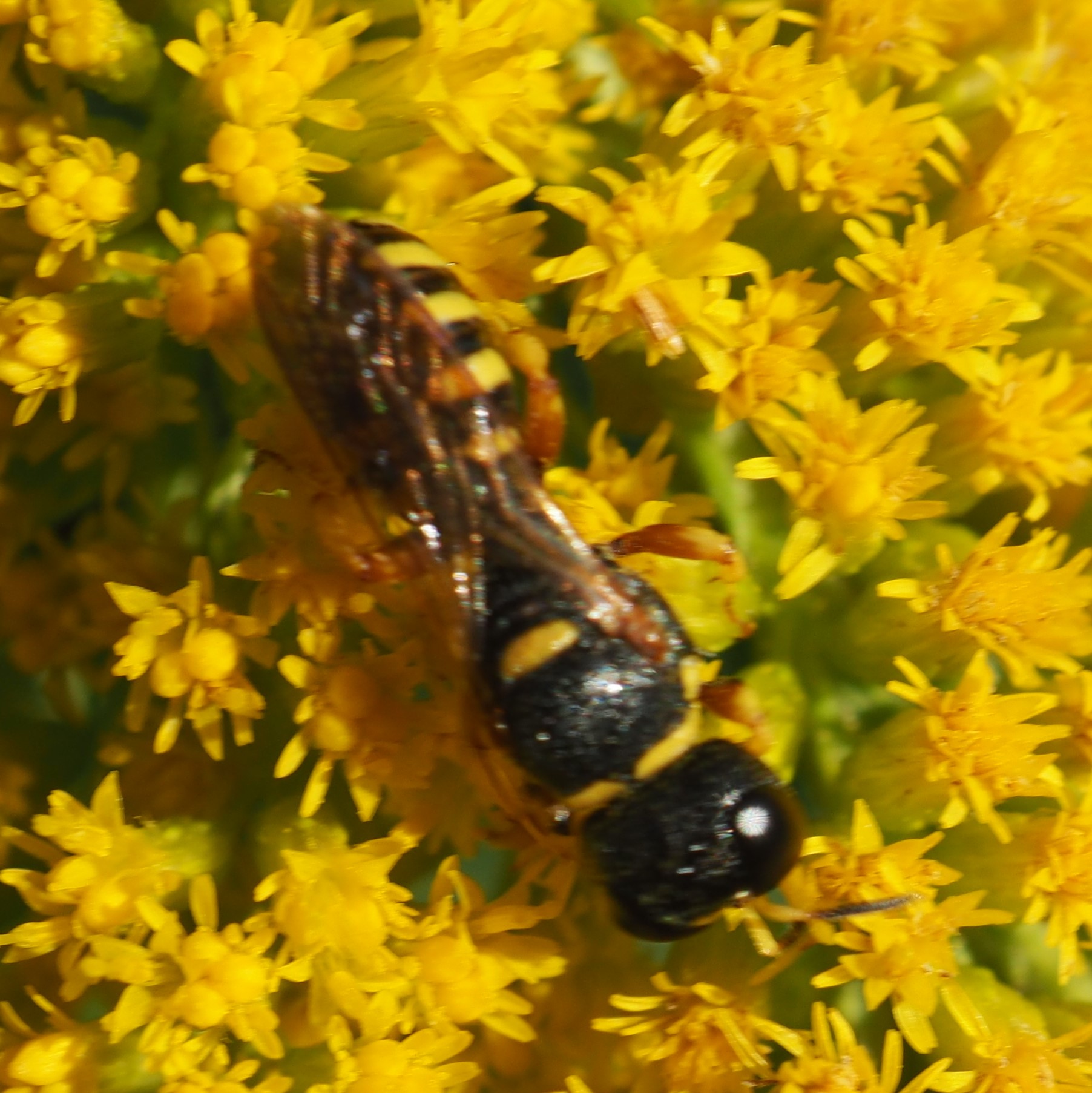
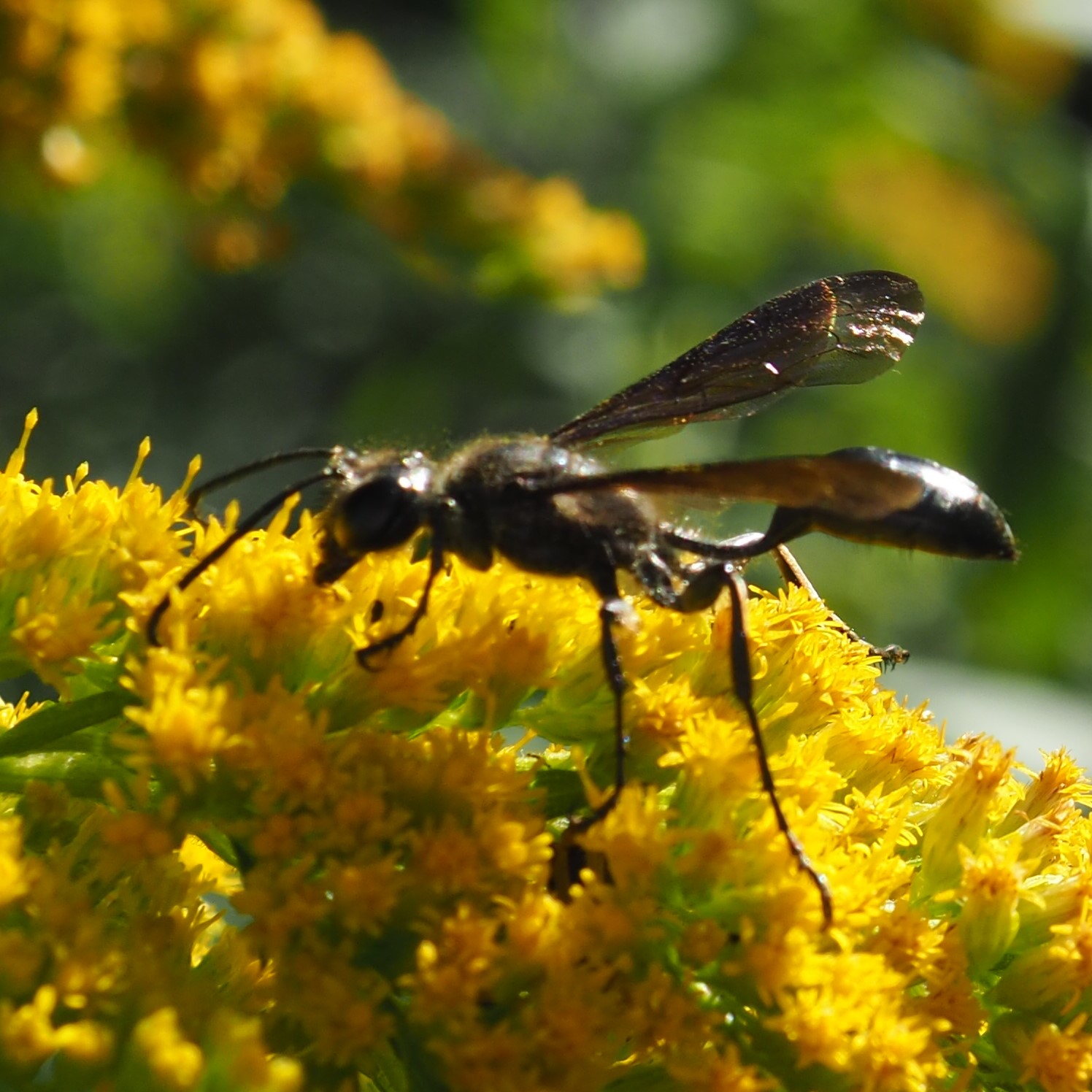
Here is that Leucospis affinis again with its cute "sailor collar".
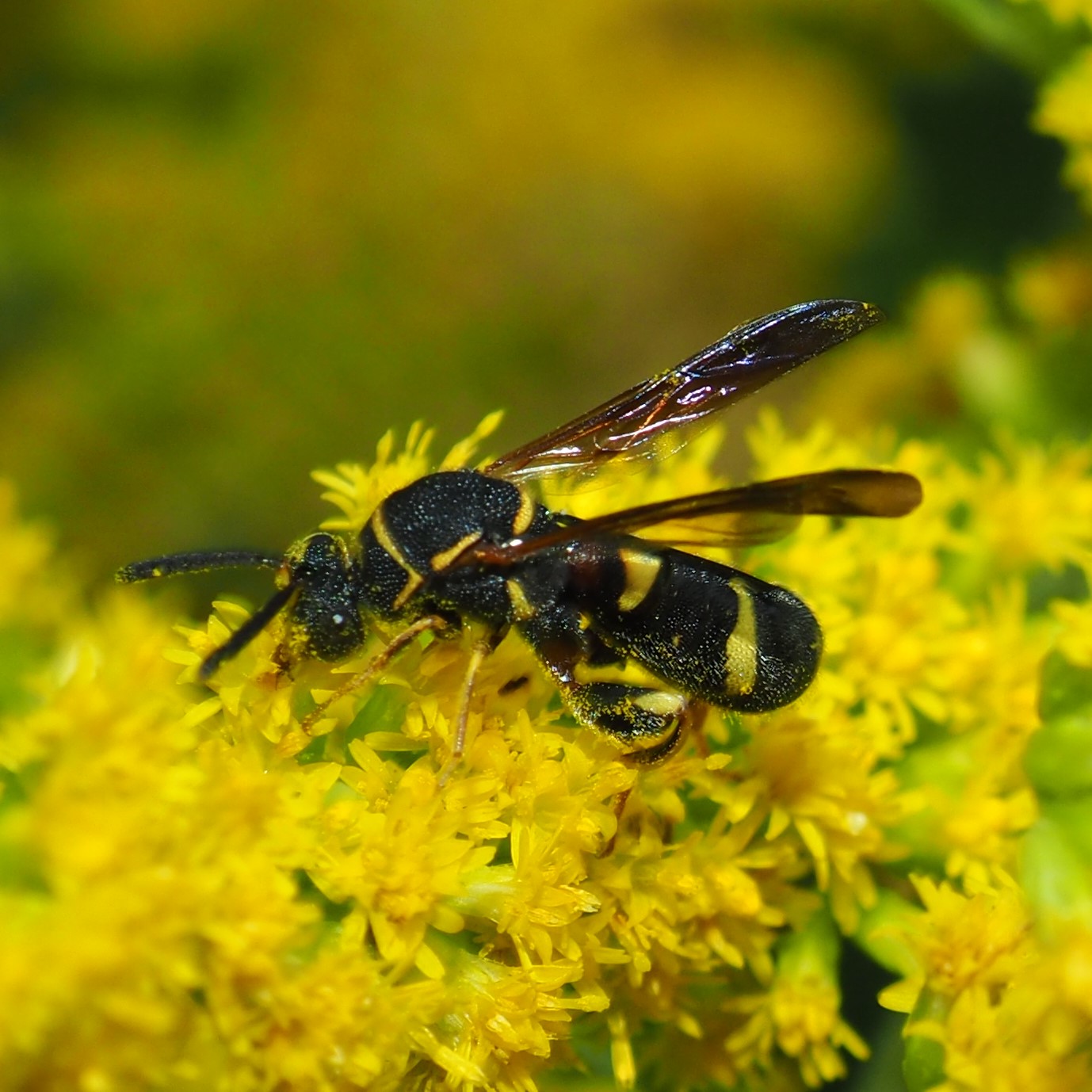
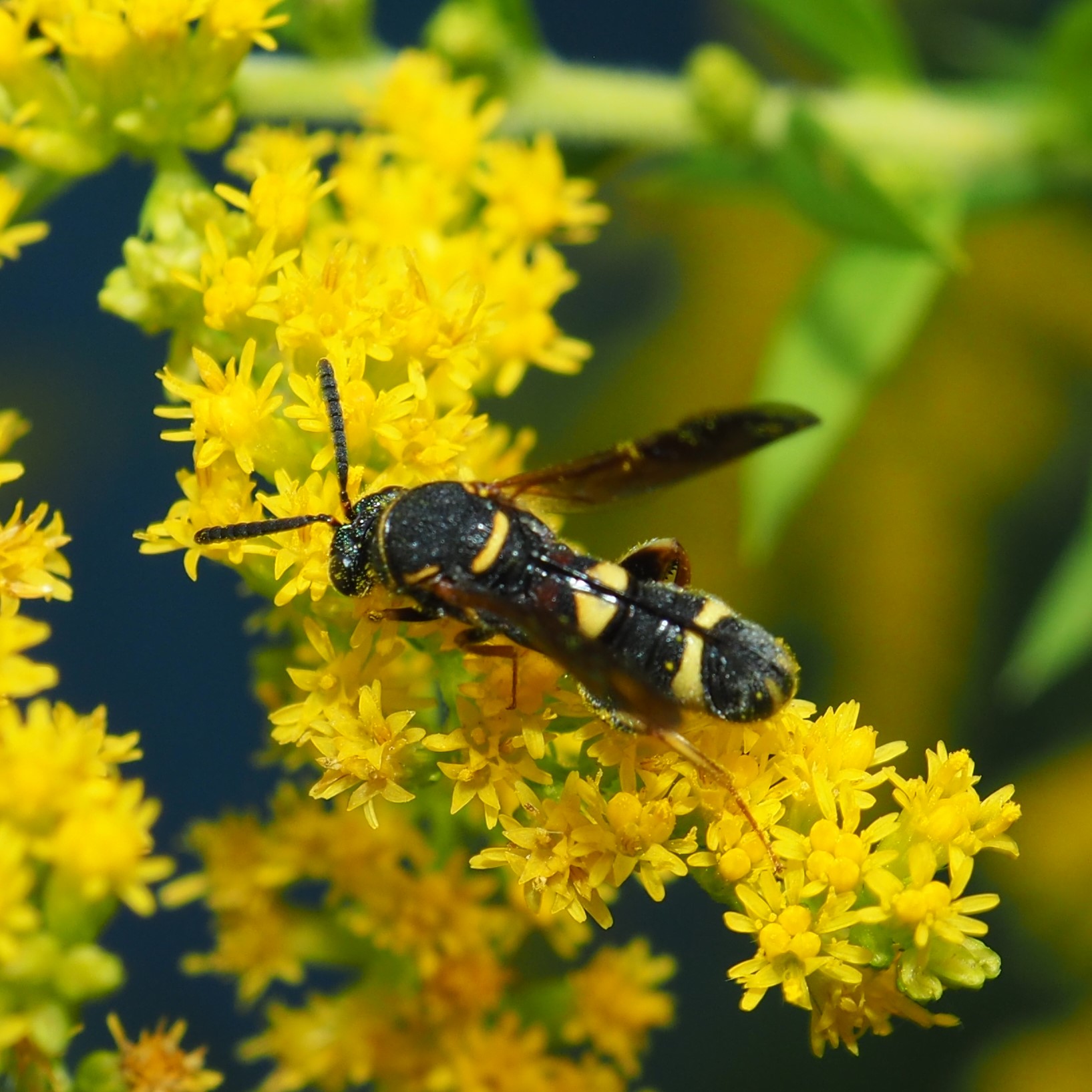
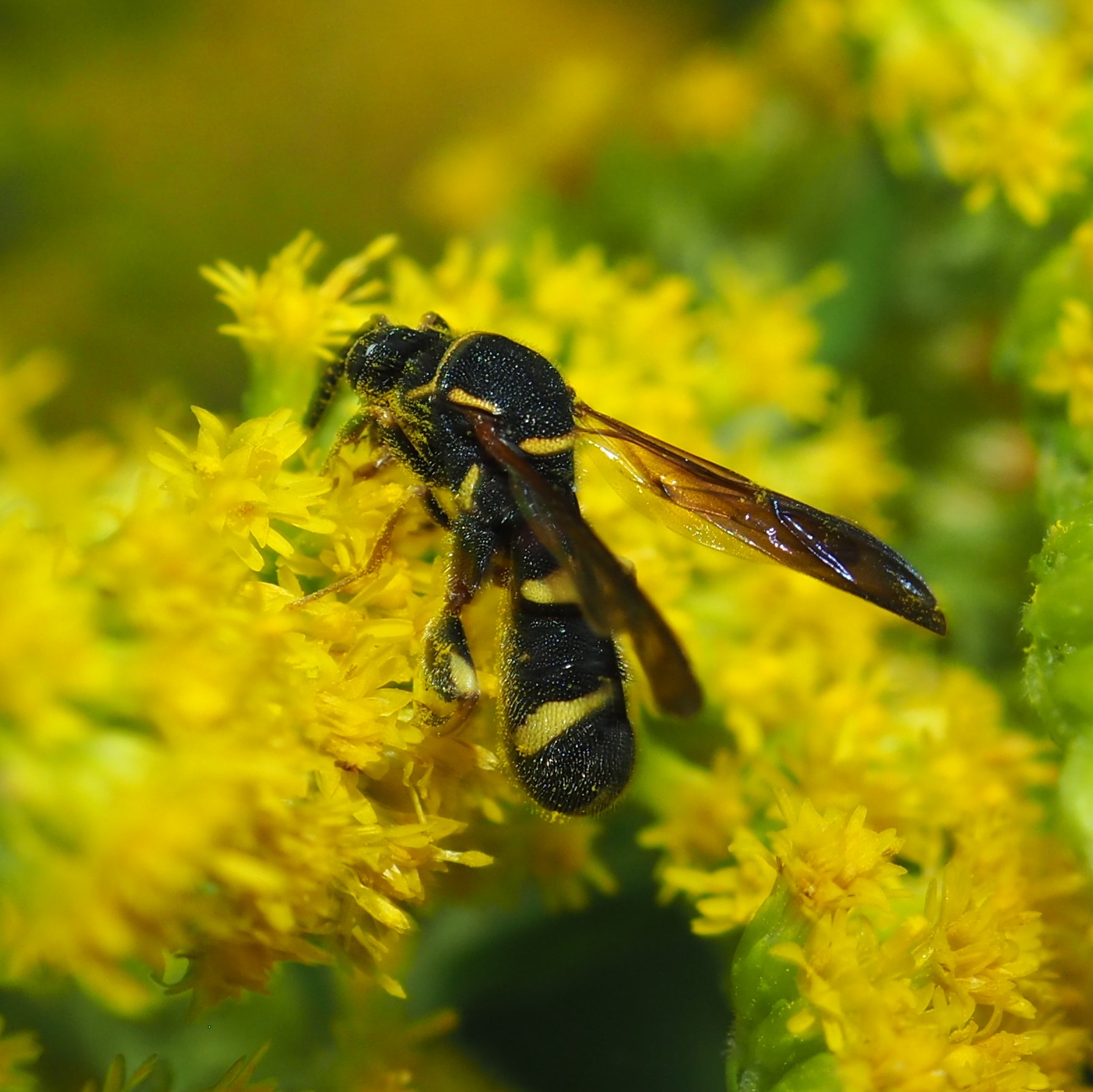
I can't tell the difference between a Bee and a Wasp, I guess. I thought this one was a wasp with a red abdomen, but it's called a Blood Bee. Second is a European Paper Wasp. Third is a Dark or Northern Paper Wasp, caught sleeping in the morning.
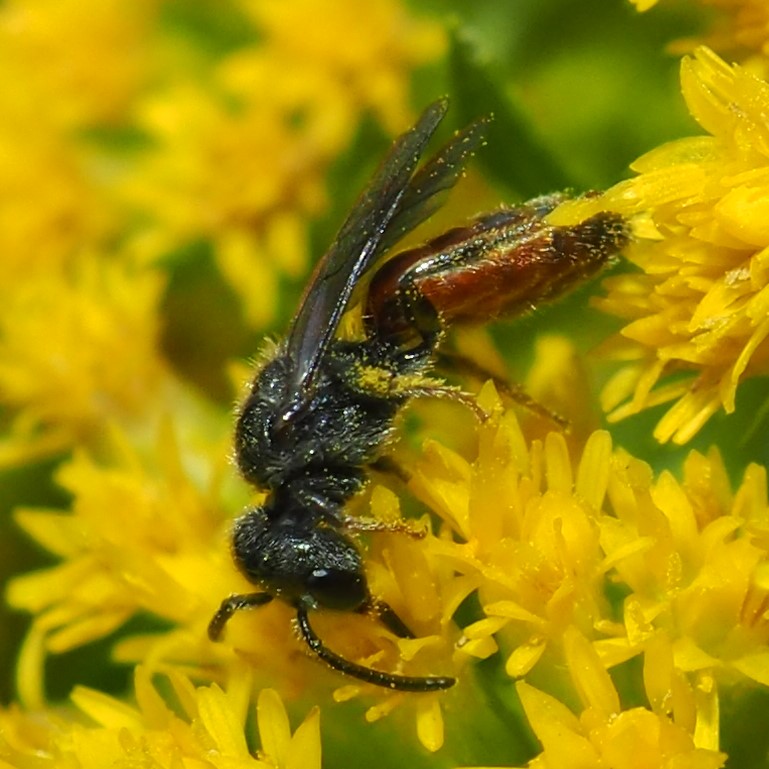
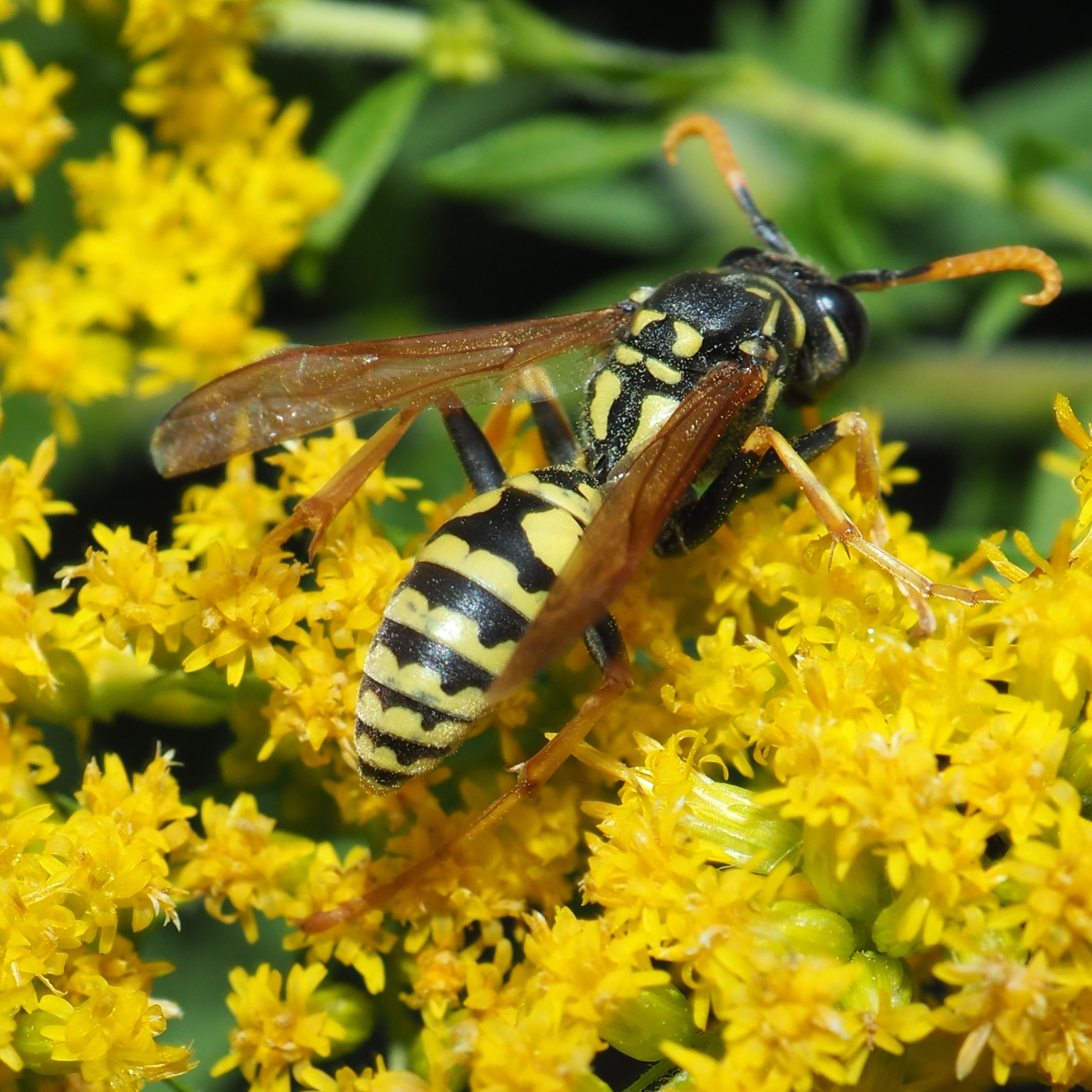
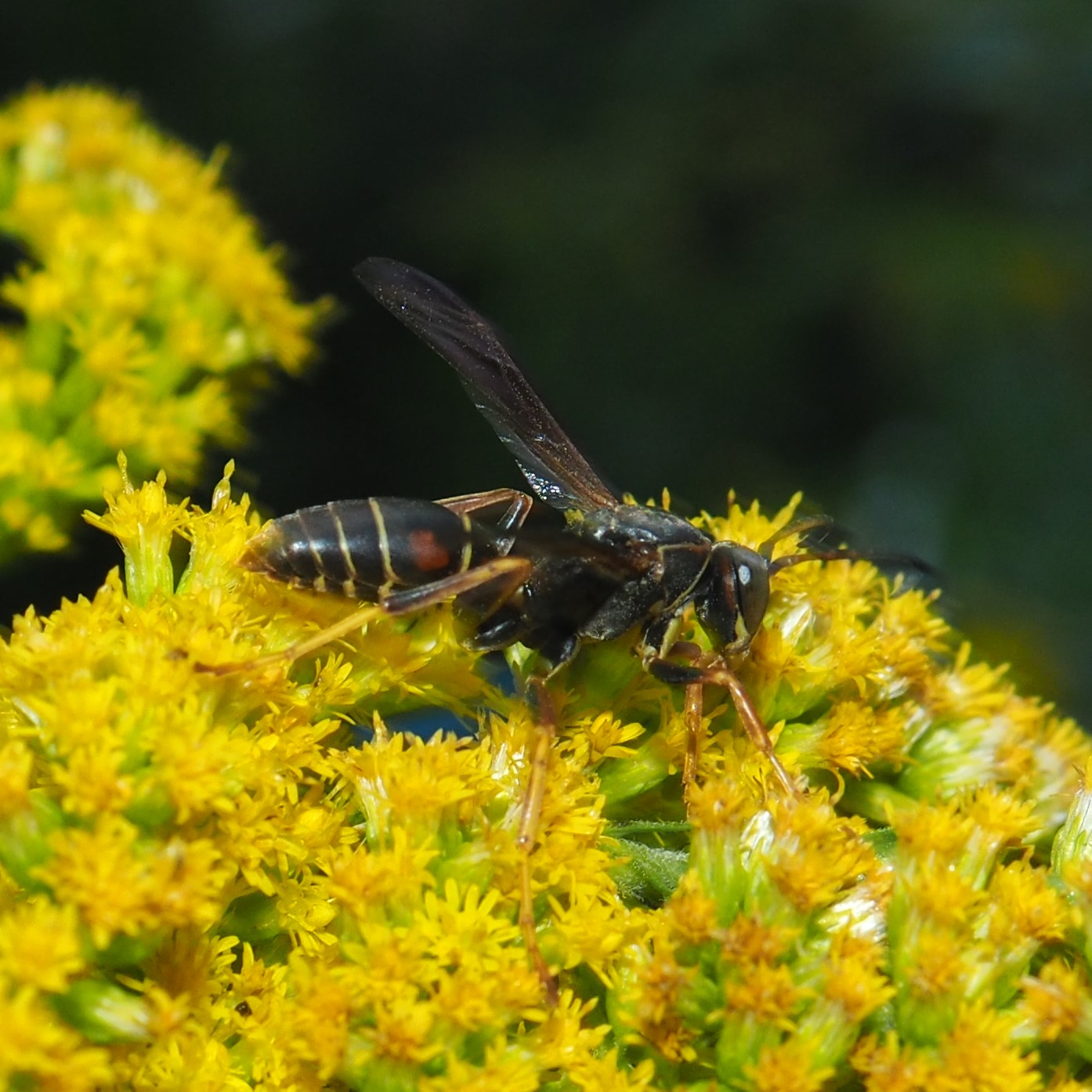
They're probably going to tell me this first one is also a Dark Paper Wasp. Next, a couple of non-Goldenrod-loving wasps. One is either an Ichneumonid or a Braconid Wasp. And Third is one of those guys that run at breakneck speed while twitching their antennae even faster.
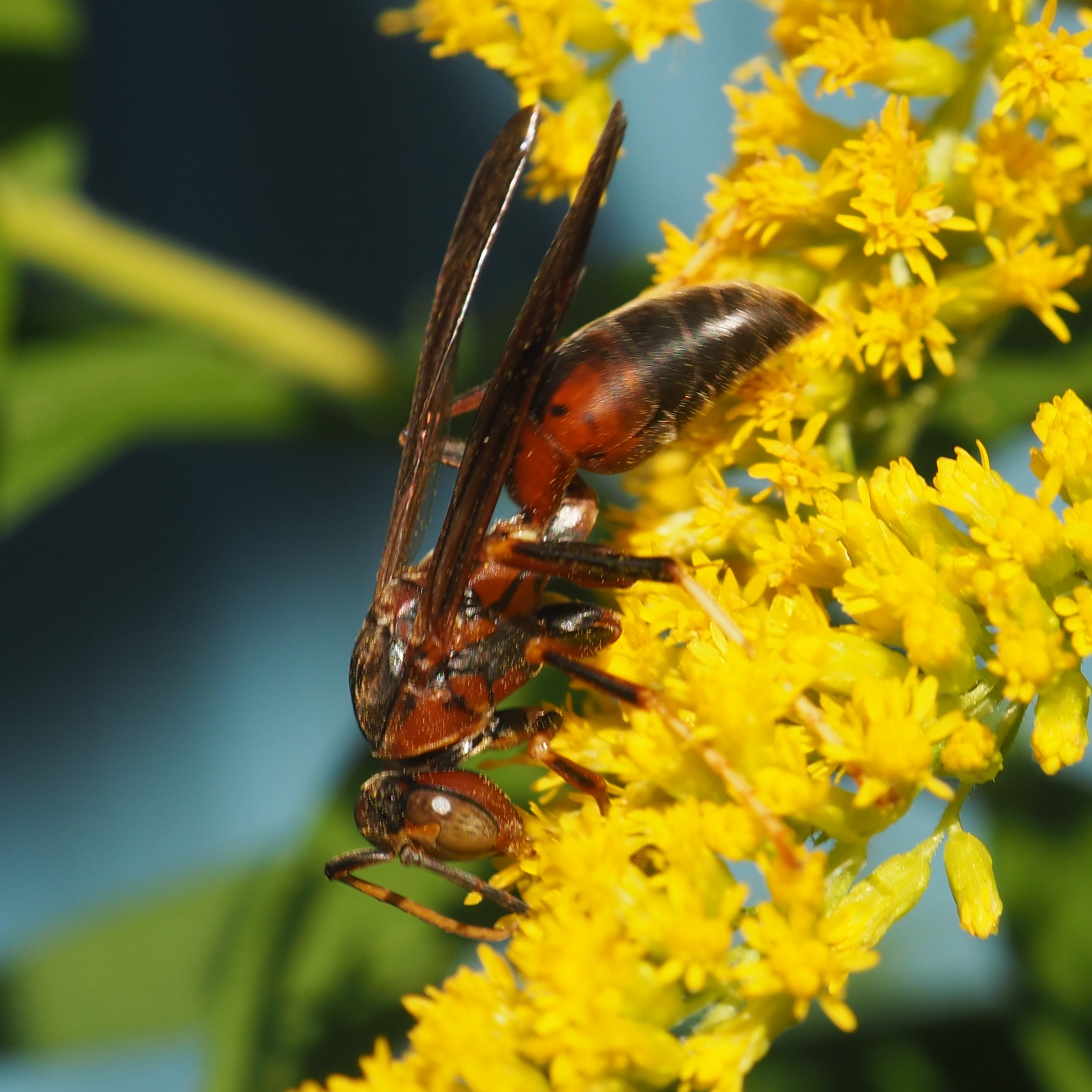
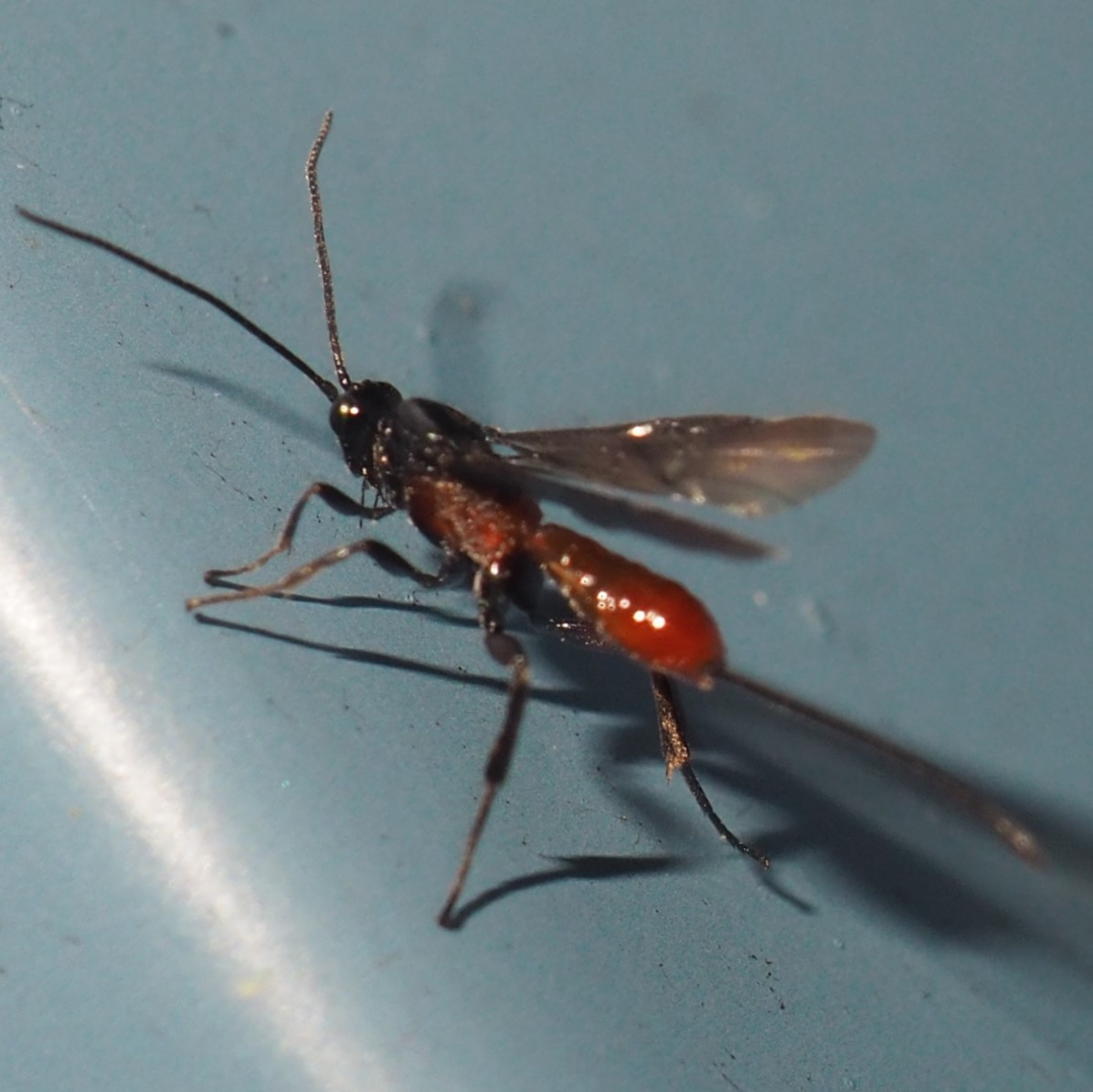
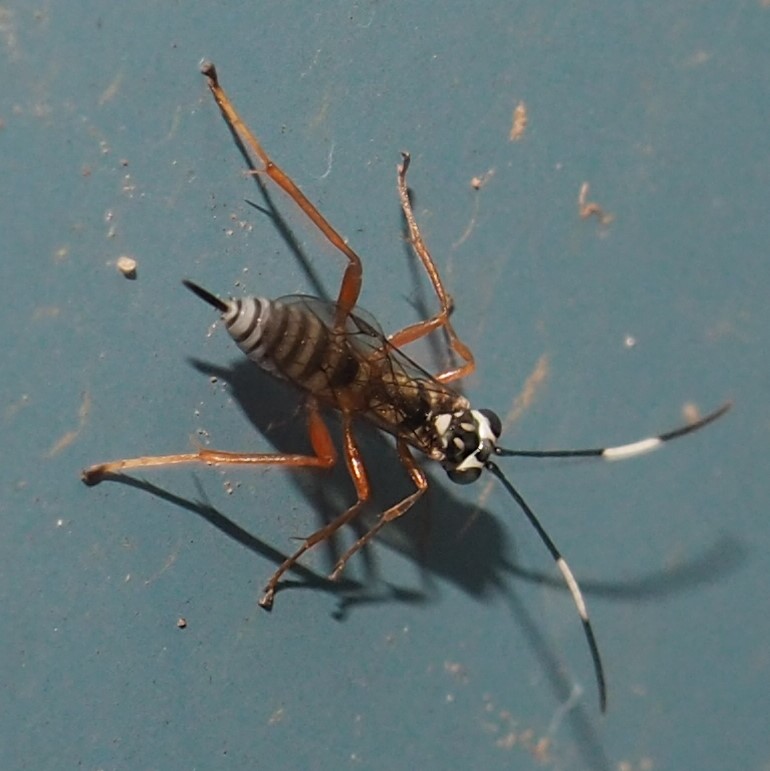
Here is one of the Twitchers running about on the shop siding.
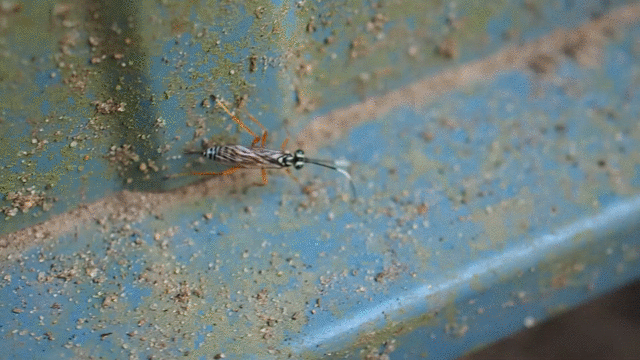
A few more flowers. Asters by the Pond...
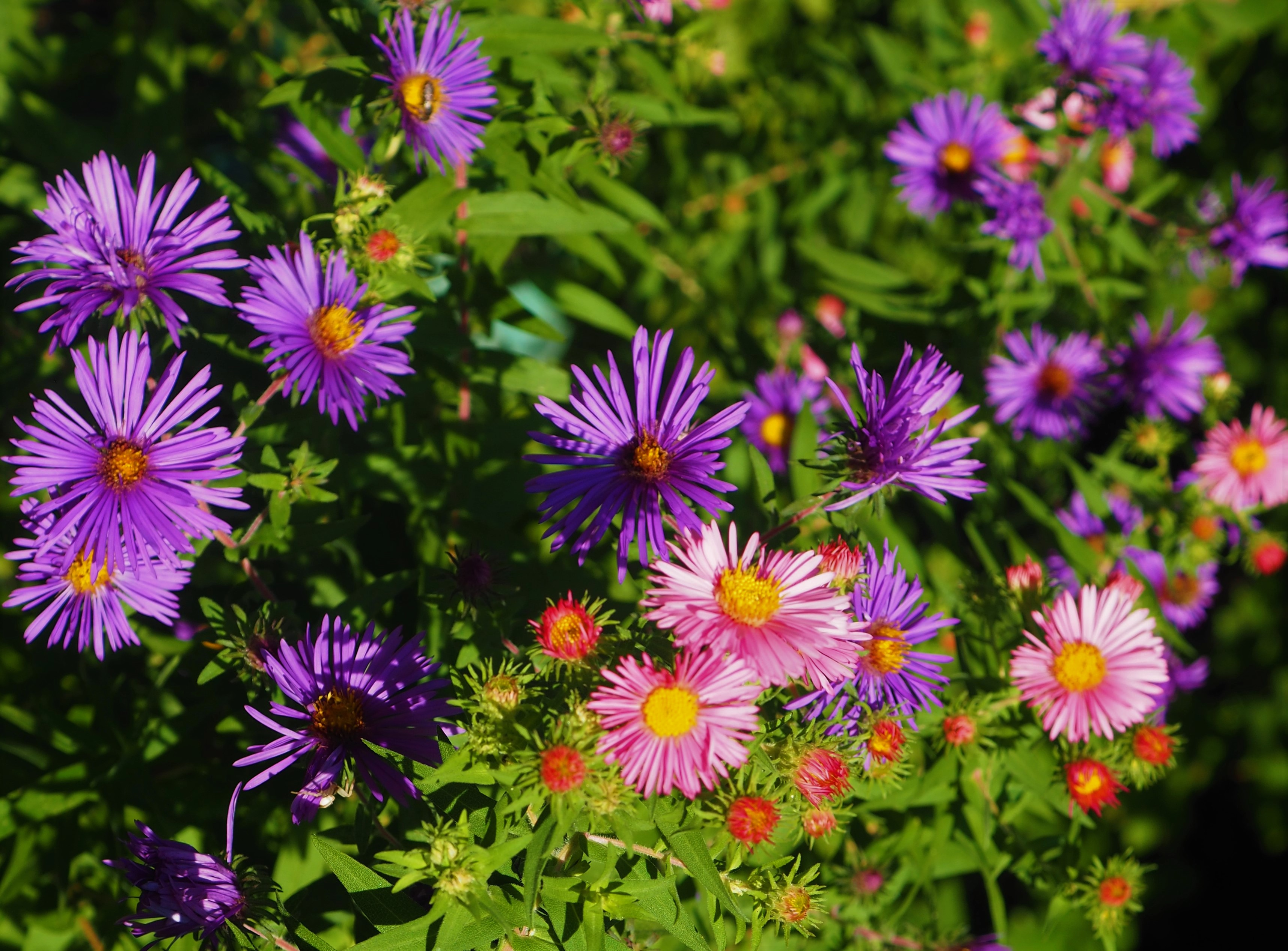
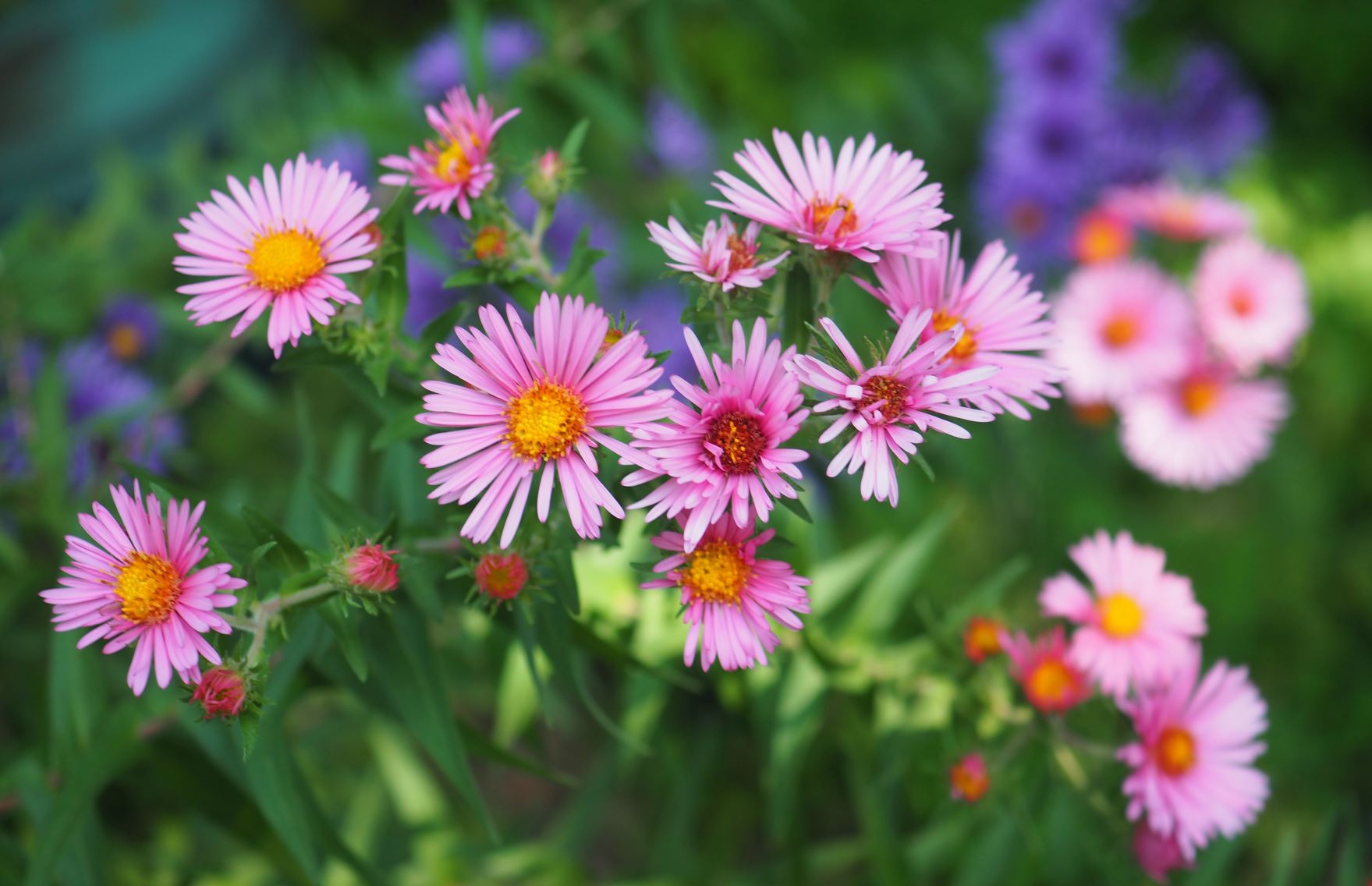
And a couple of Water Lilies.

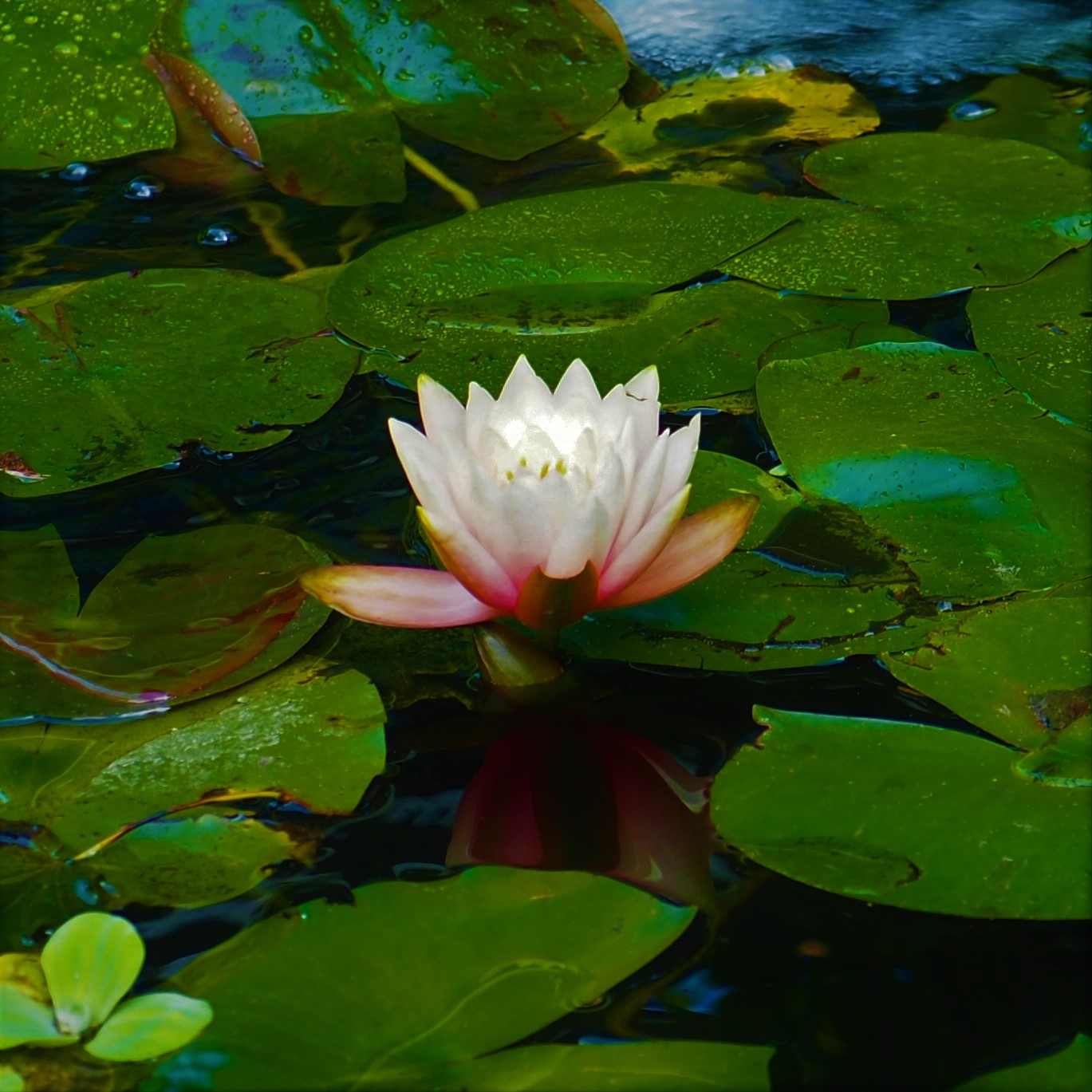
Another week over the dam. Here's hoping that you all are enjoying Life as It Is. Read something, make a Zoom appointment for a friend or two to chat. Play some music. Enjoy the flowers. The cool weather, as it is up here in the upper Antipodes. Or the warm weather, as Spring comes to the Lower Antipodes. Enjoy your friends and let them enjoy YOU! And I do mean
Love, Martha
Back to September 20, 2020
Forward to October 4, 2020
Back to main menu
copyright Martha O'Kennon 2020




















































































 i
i












































